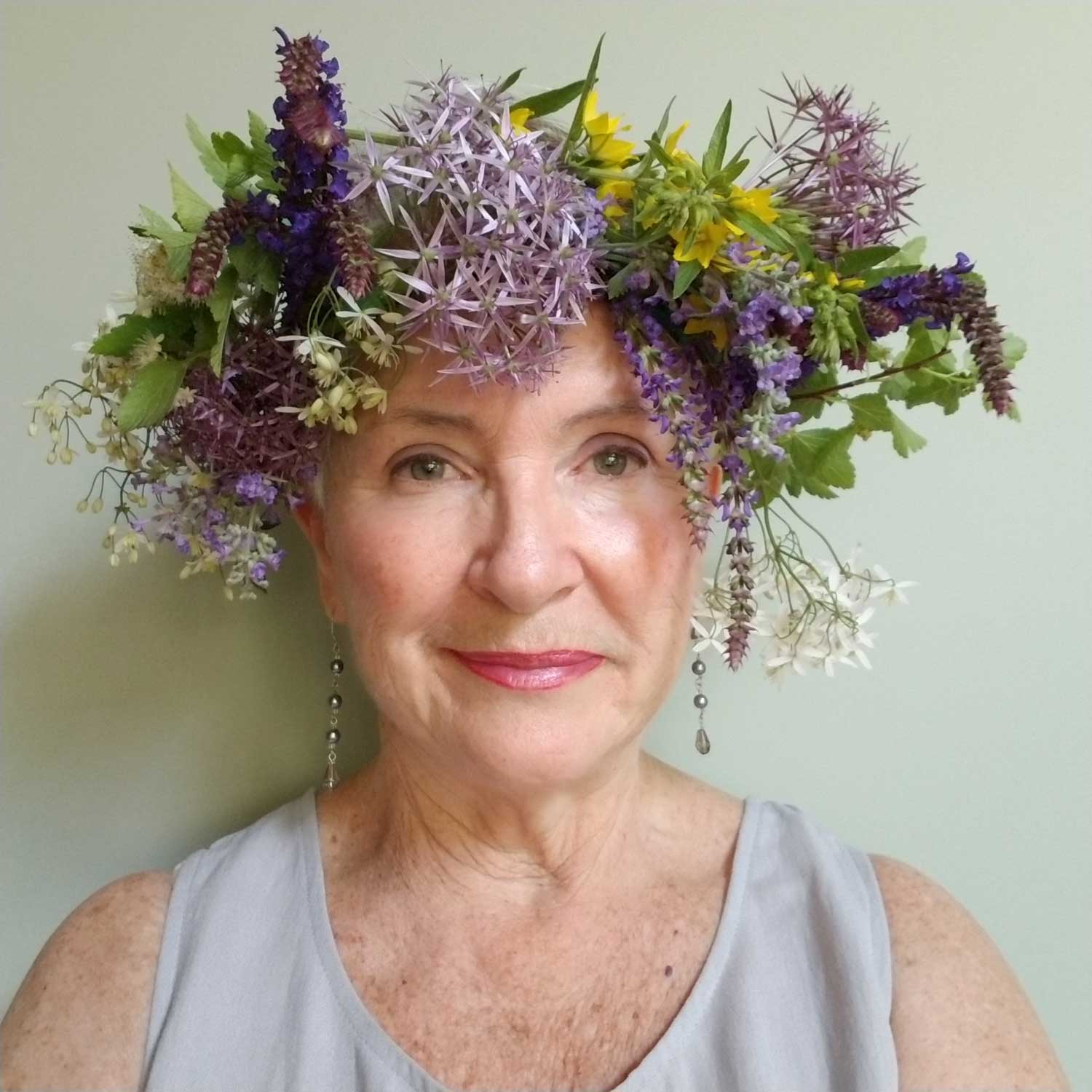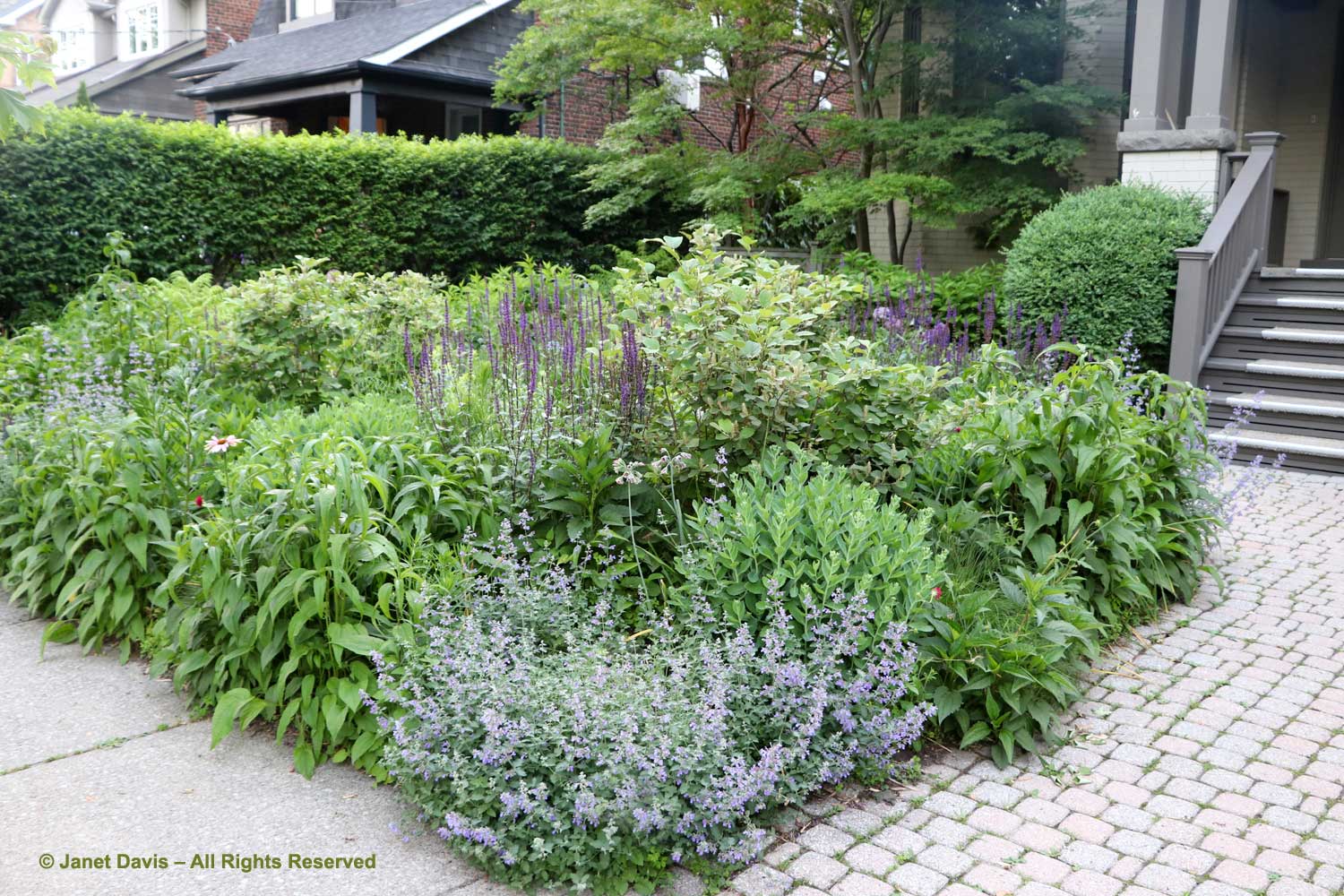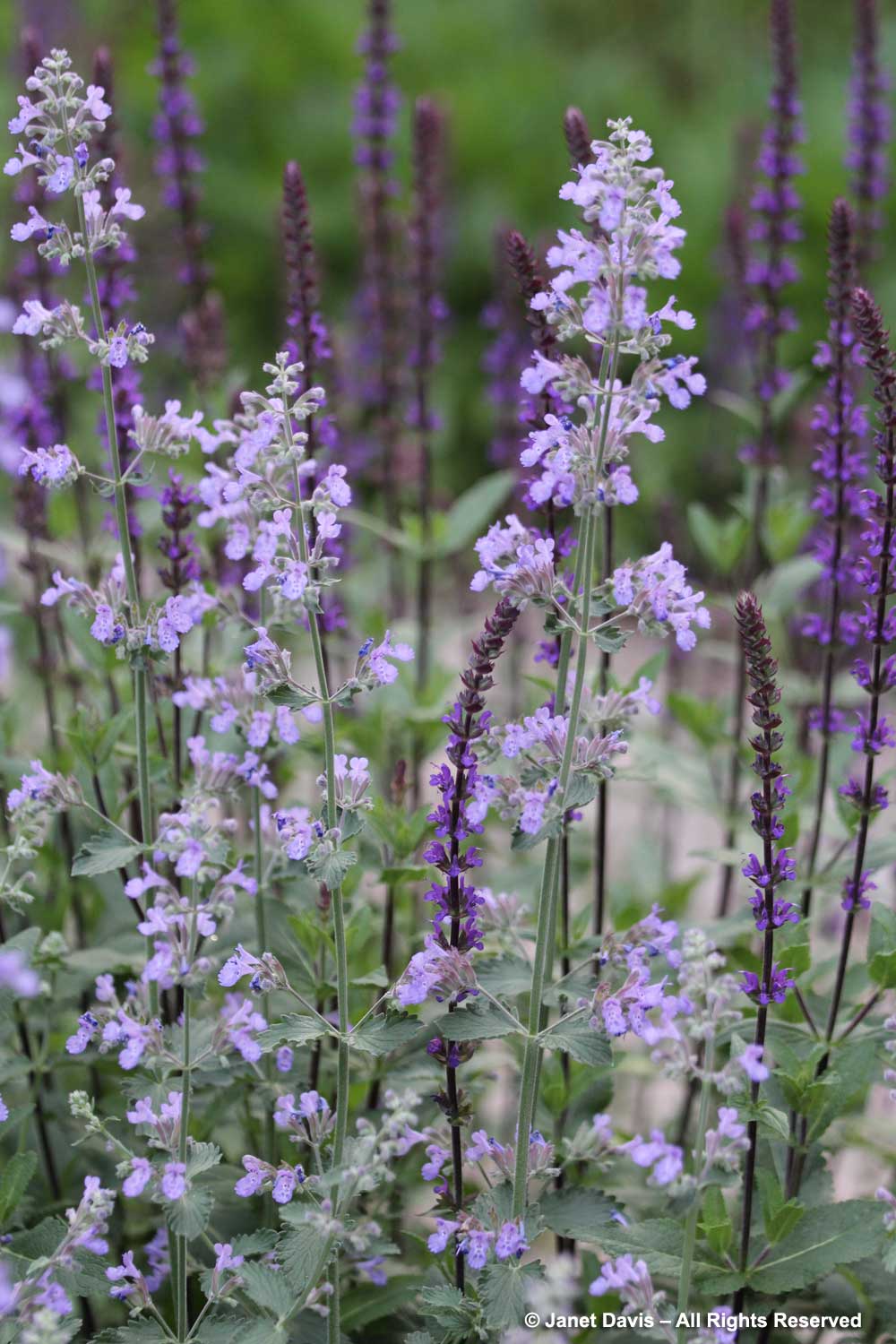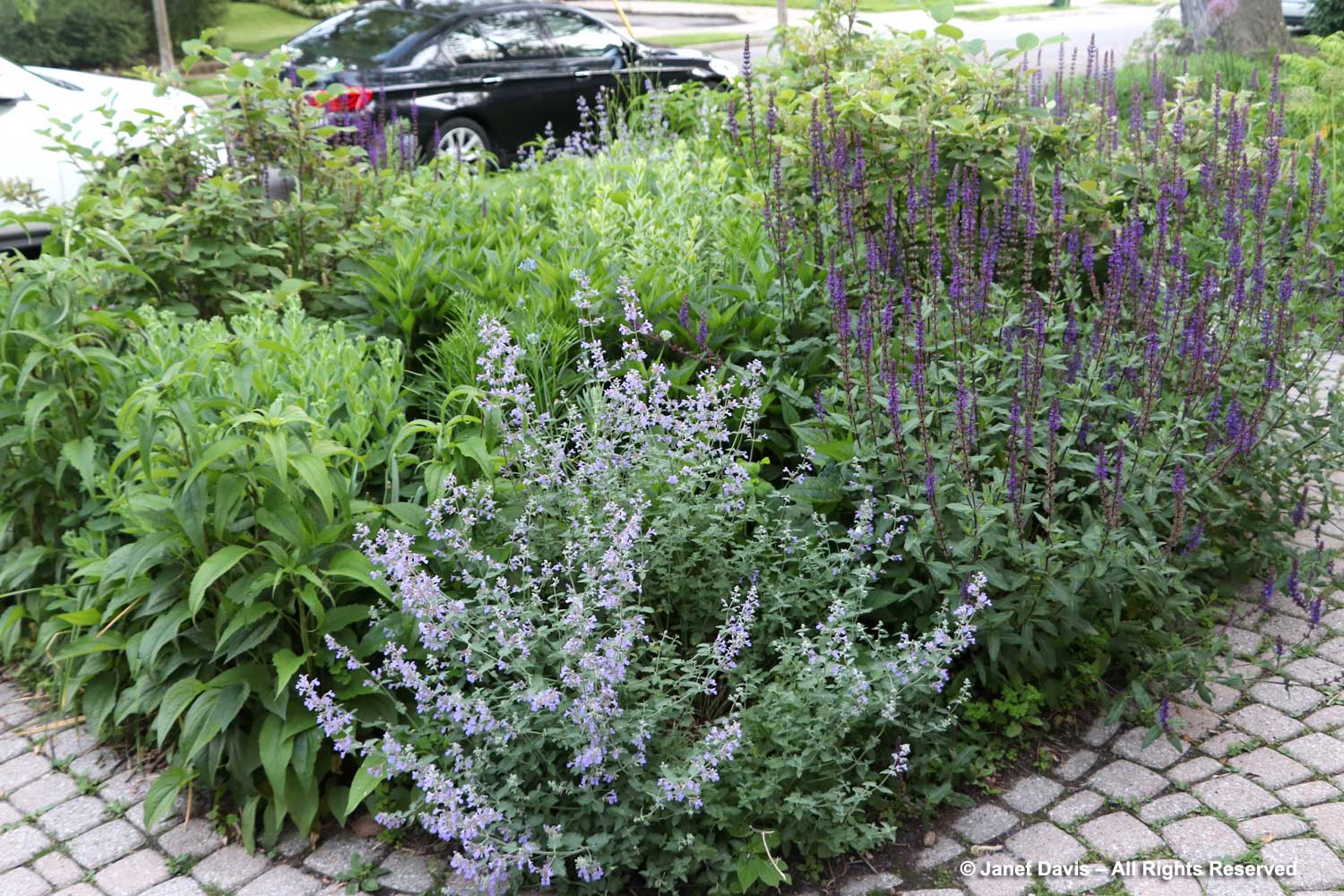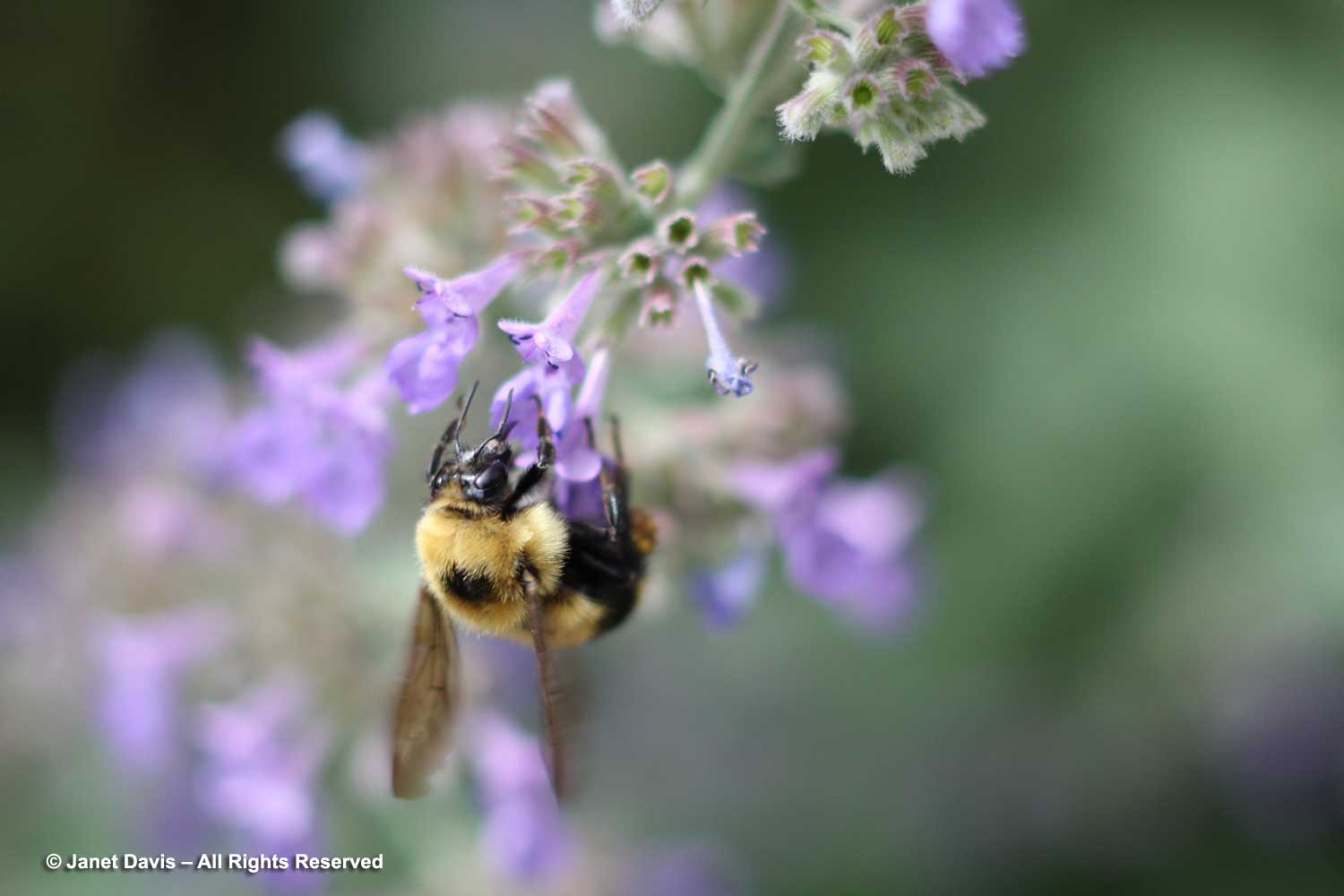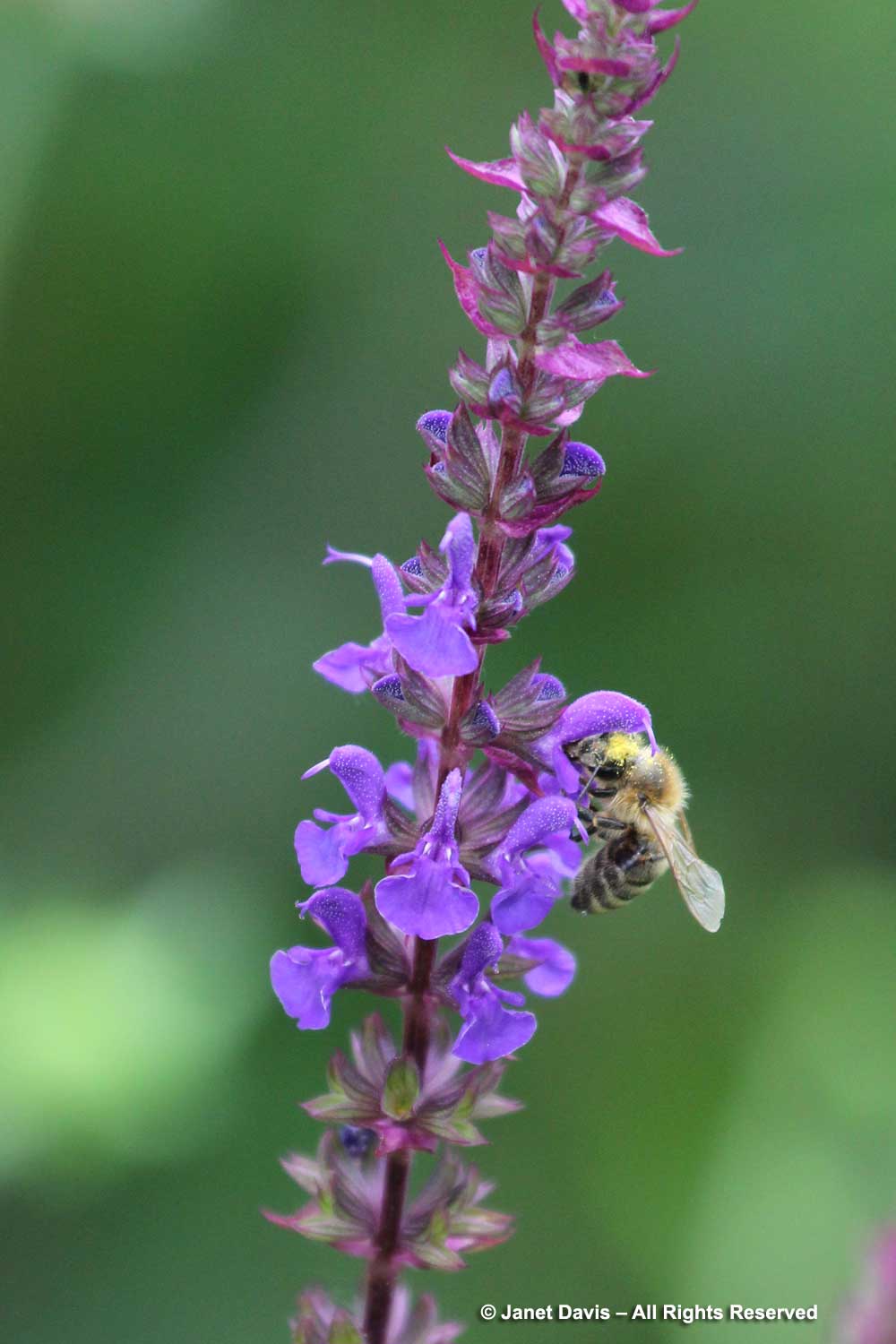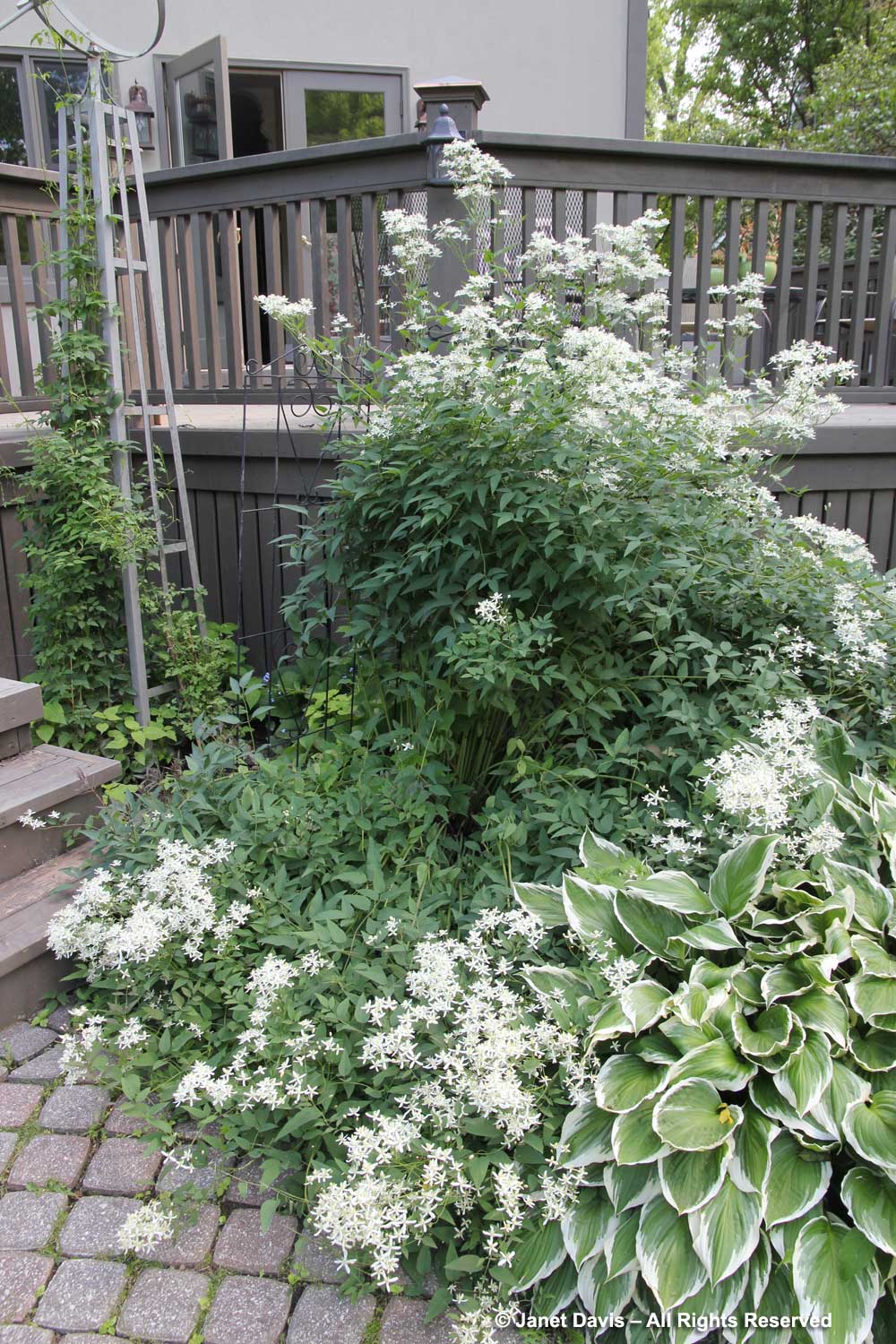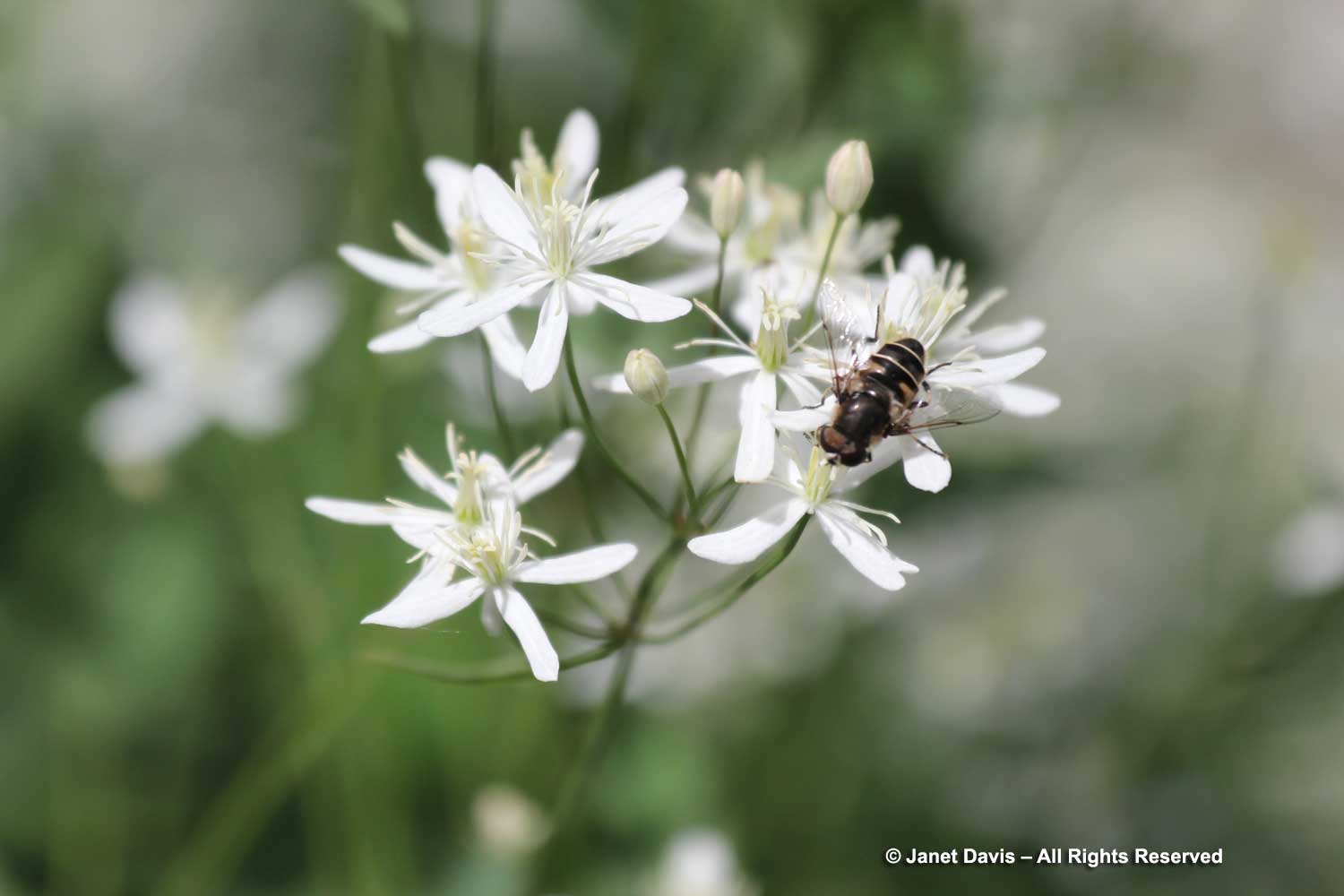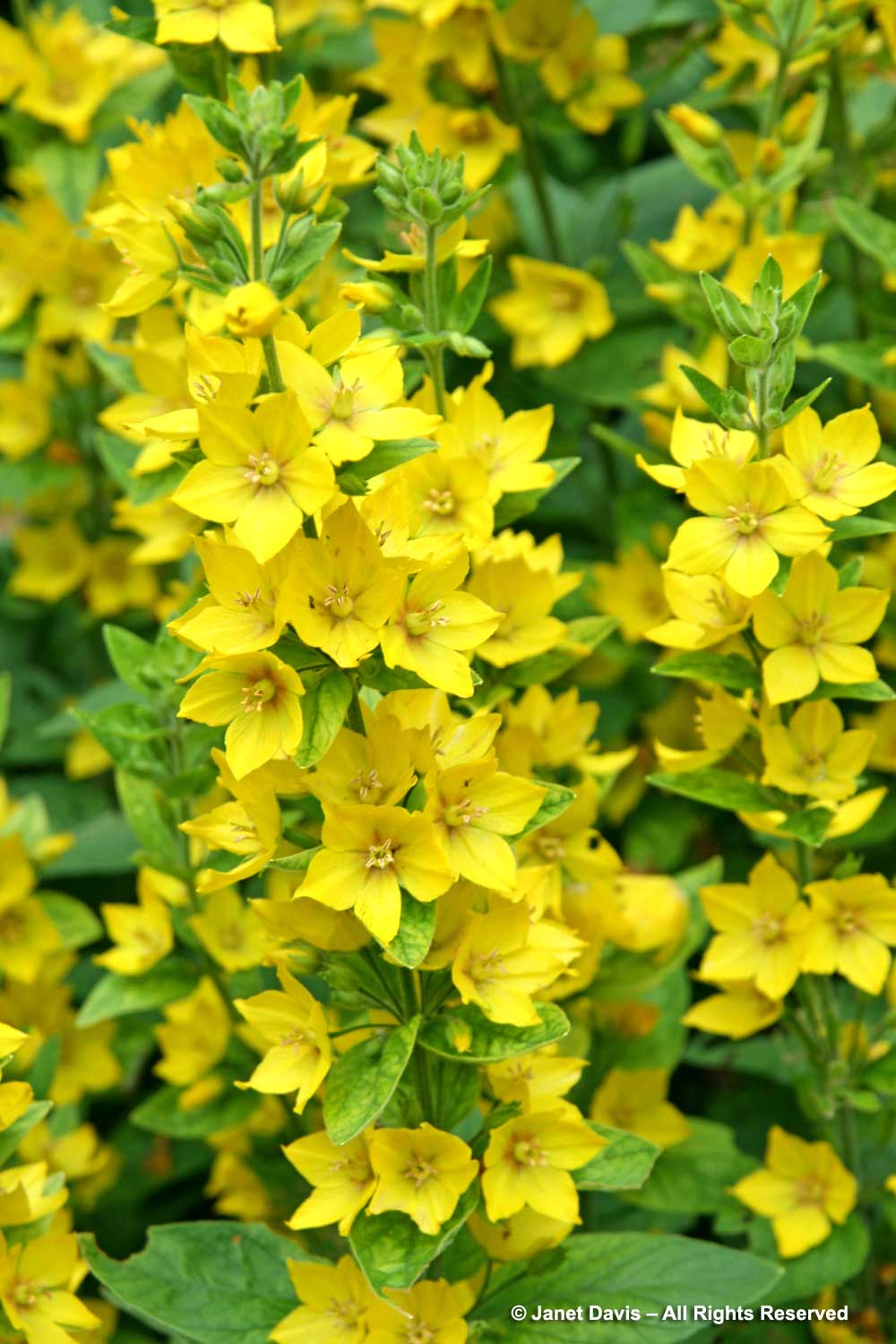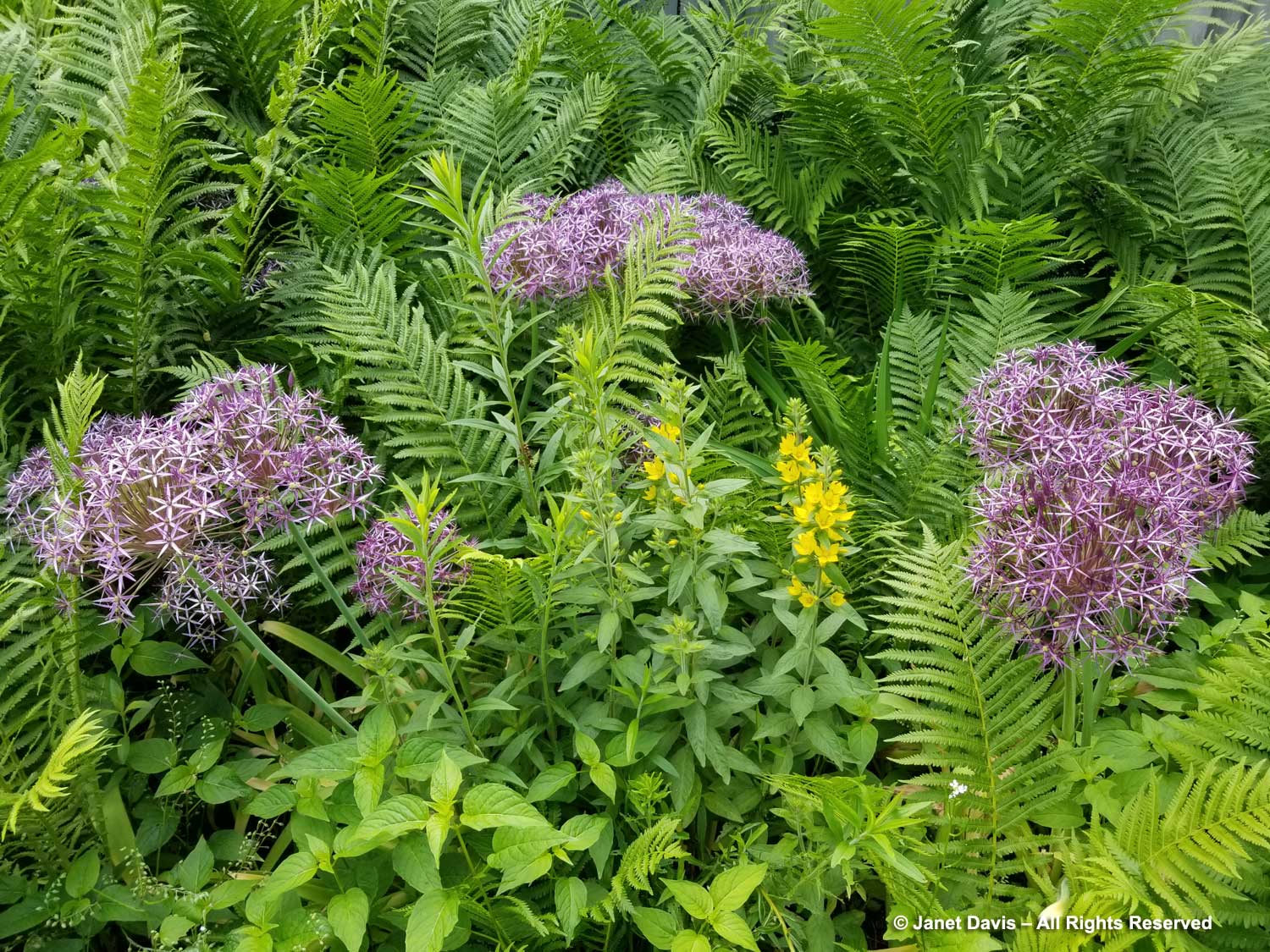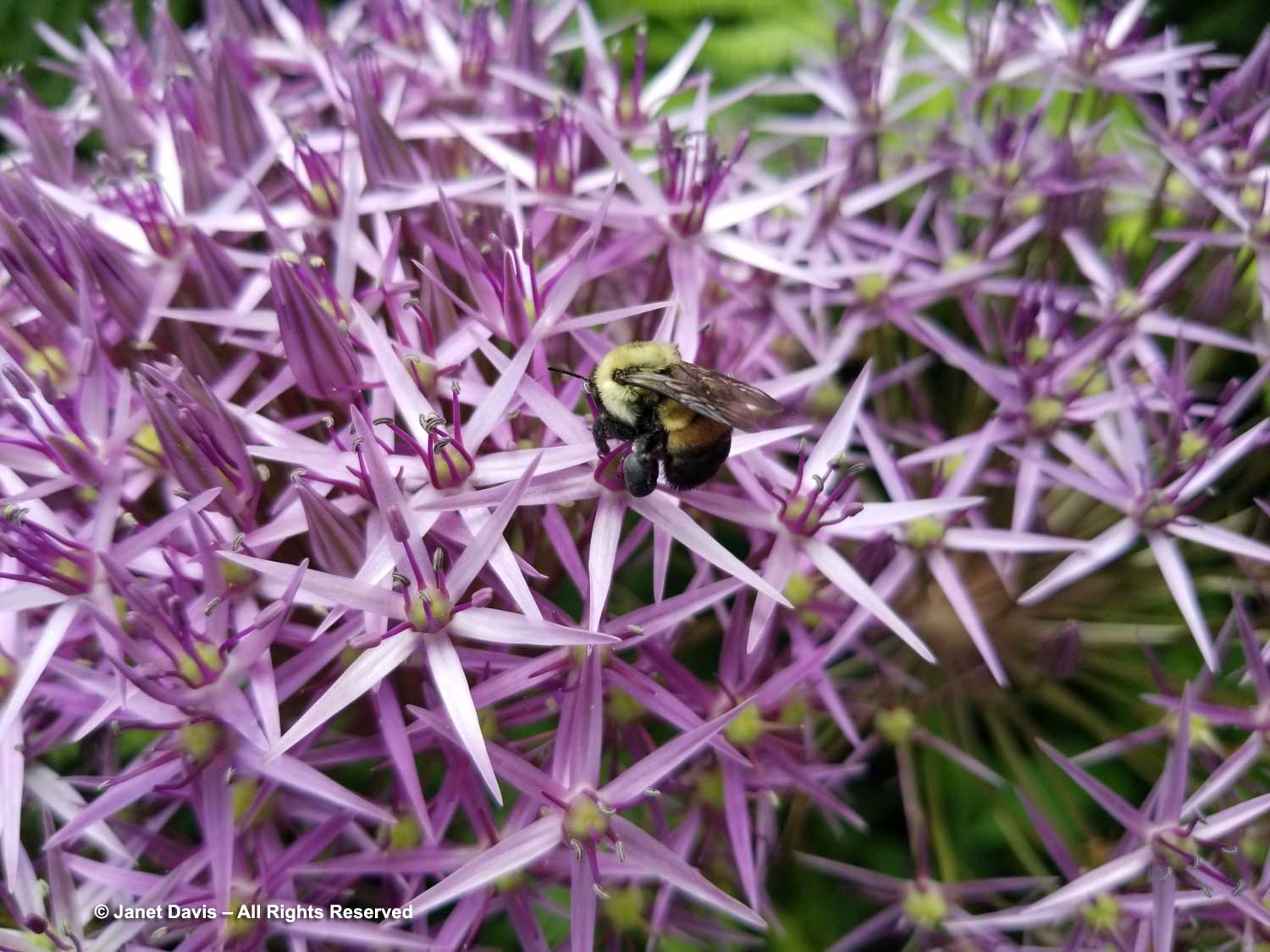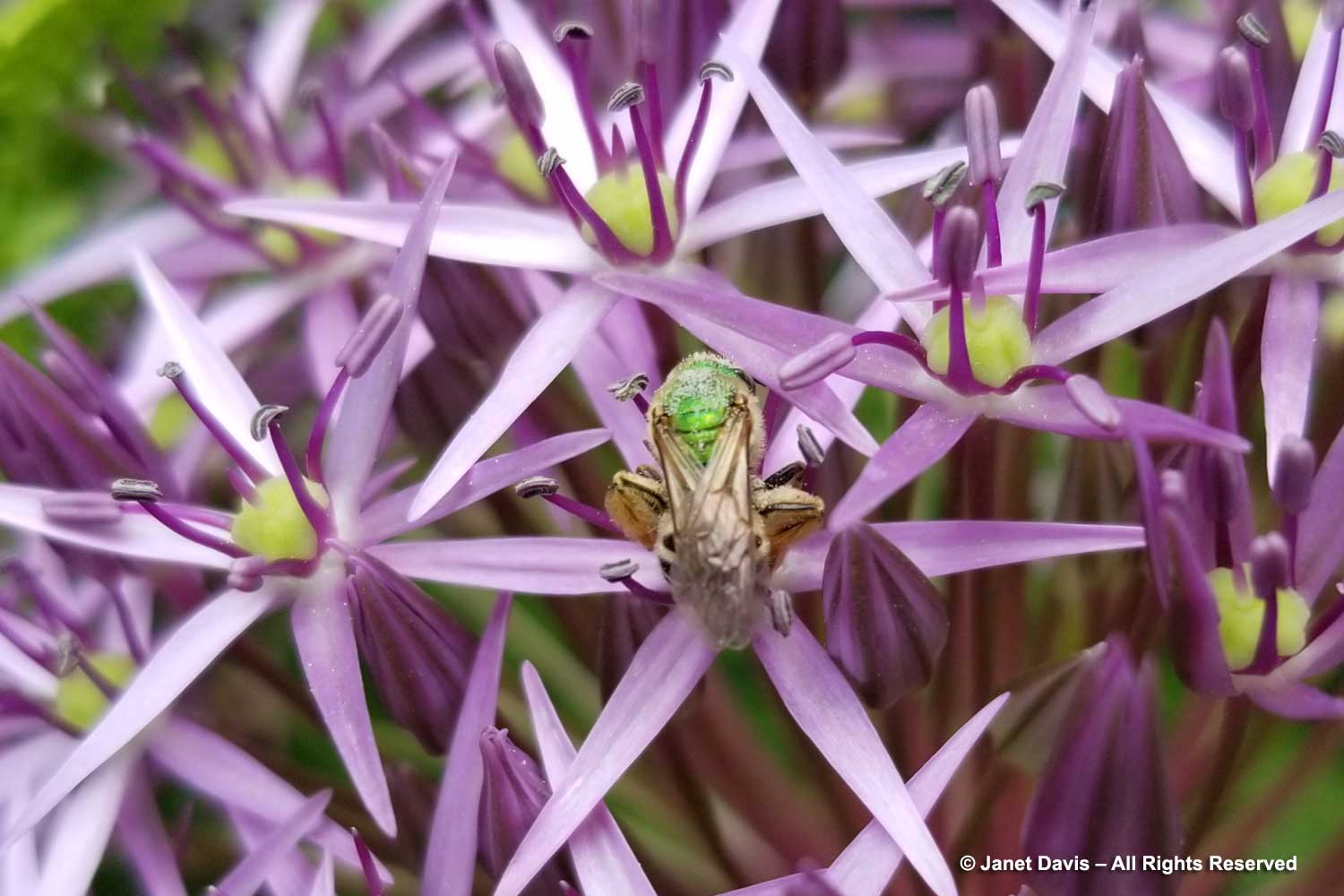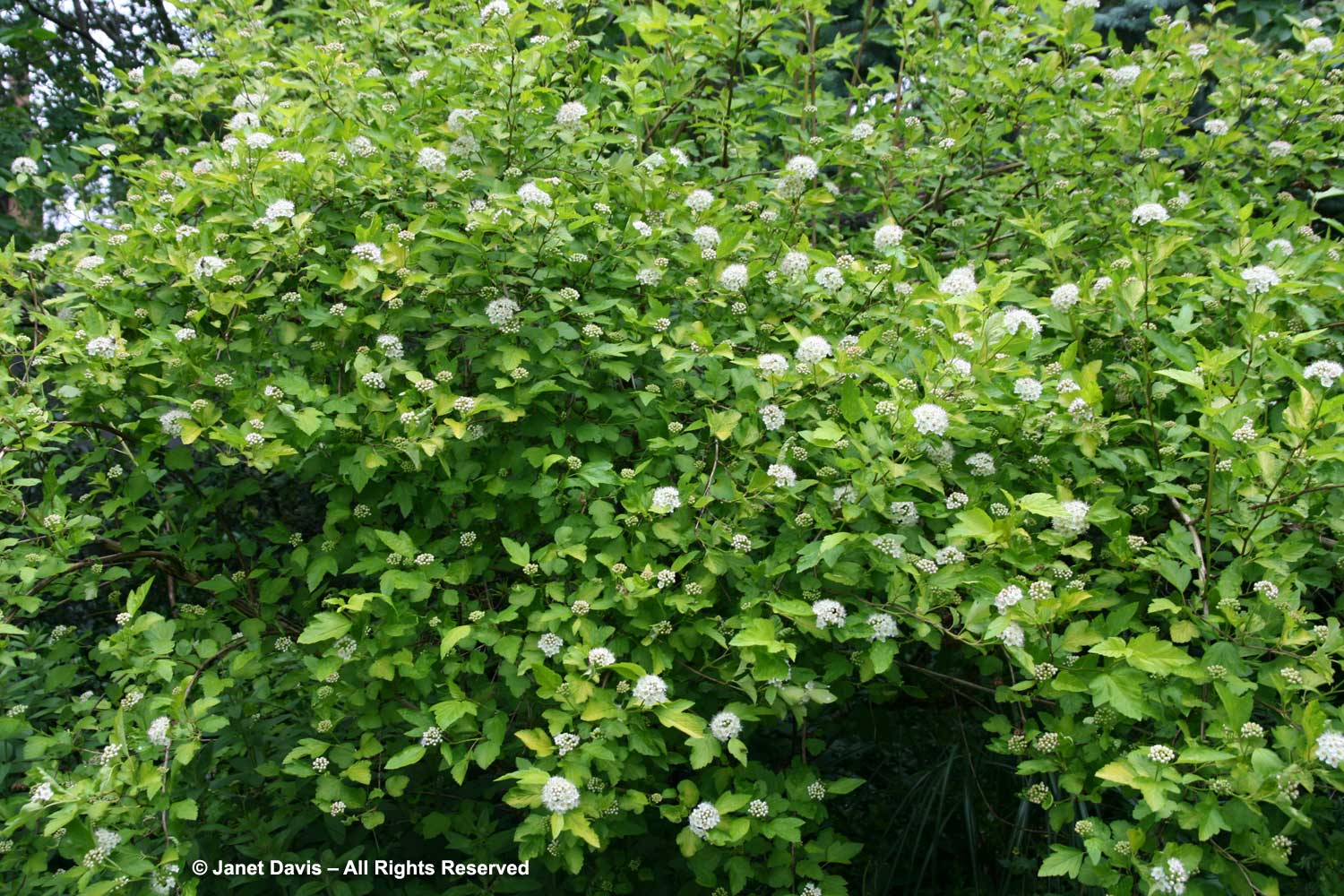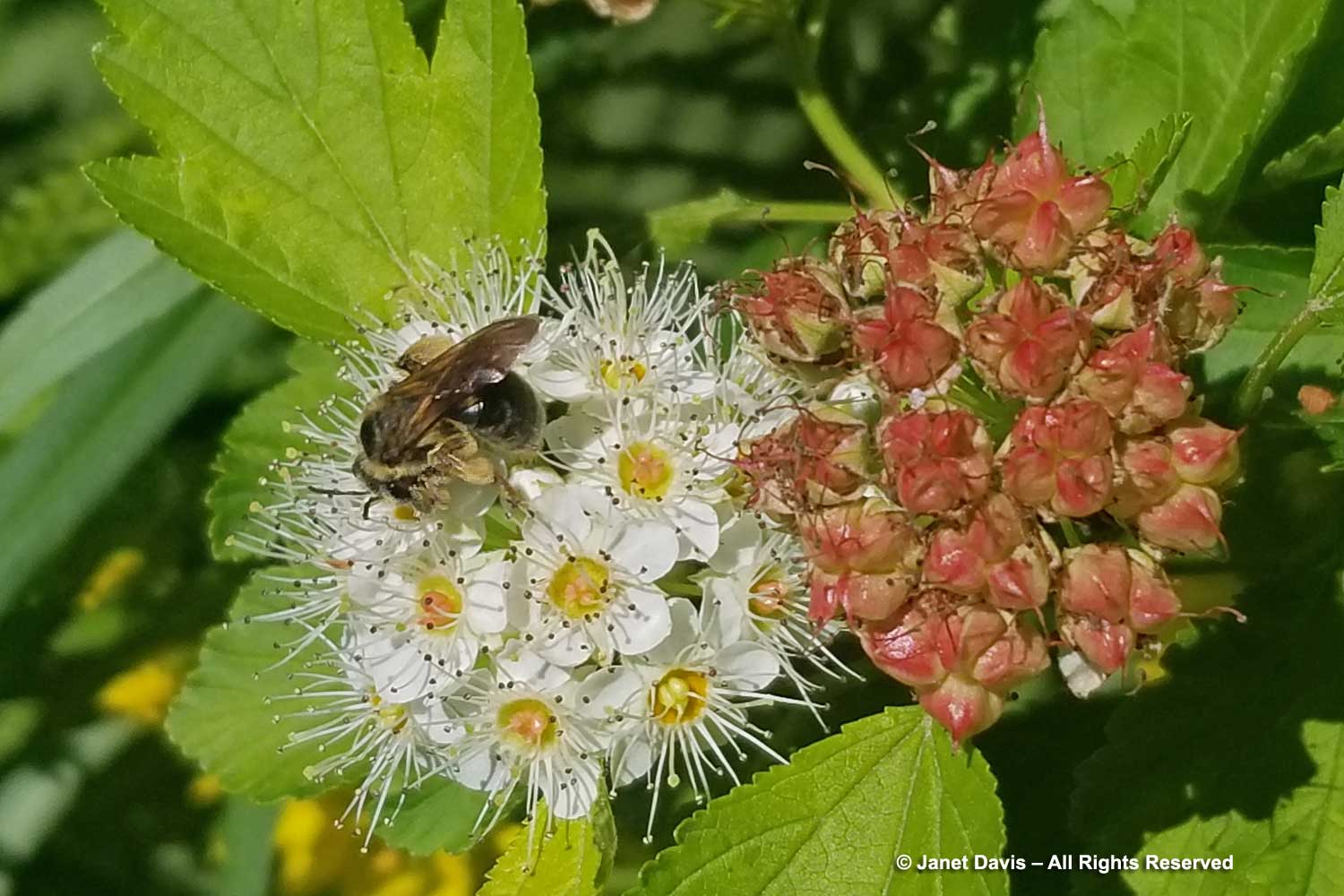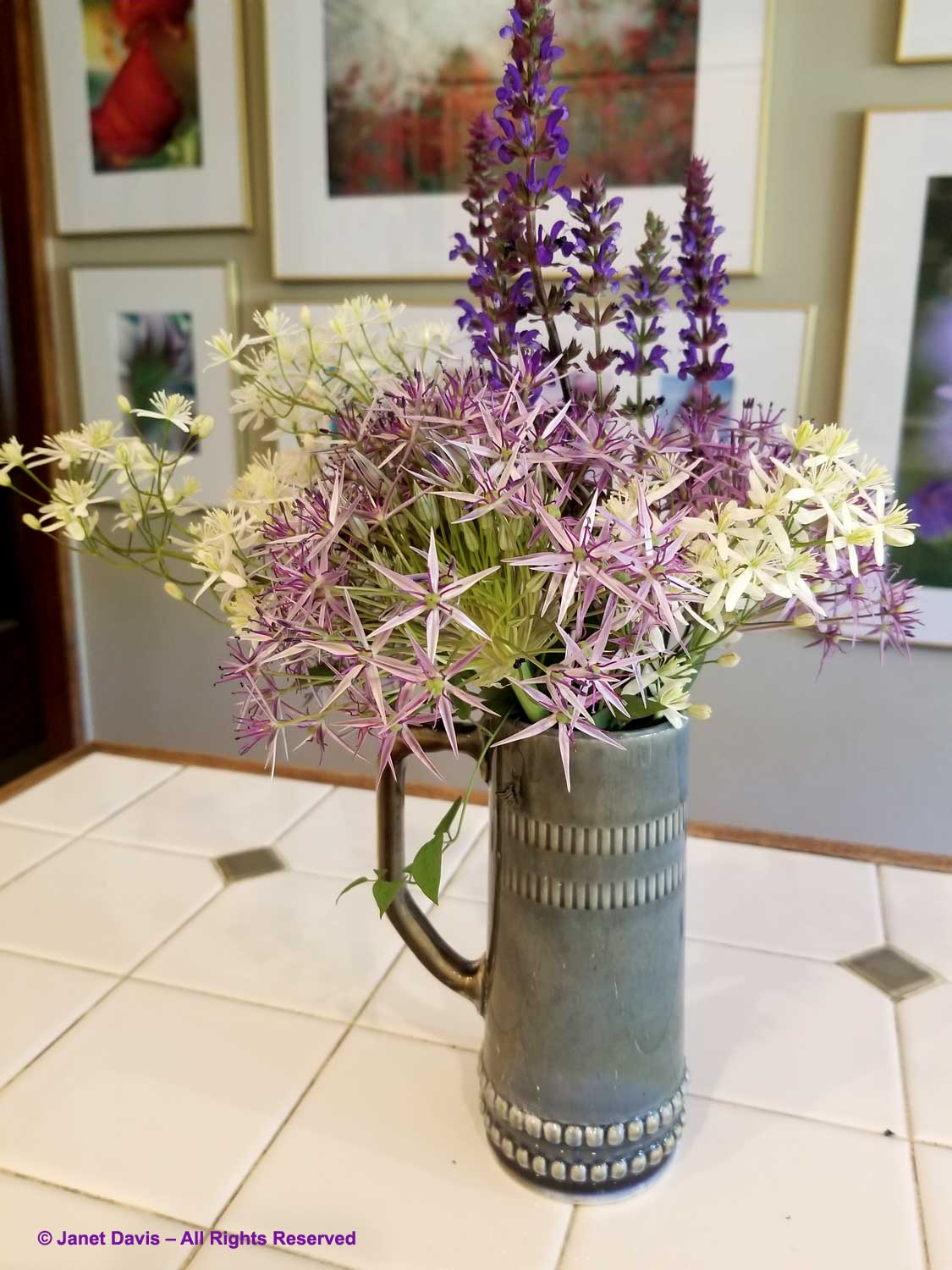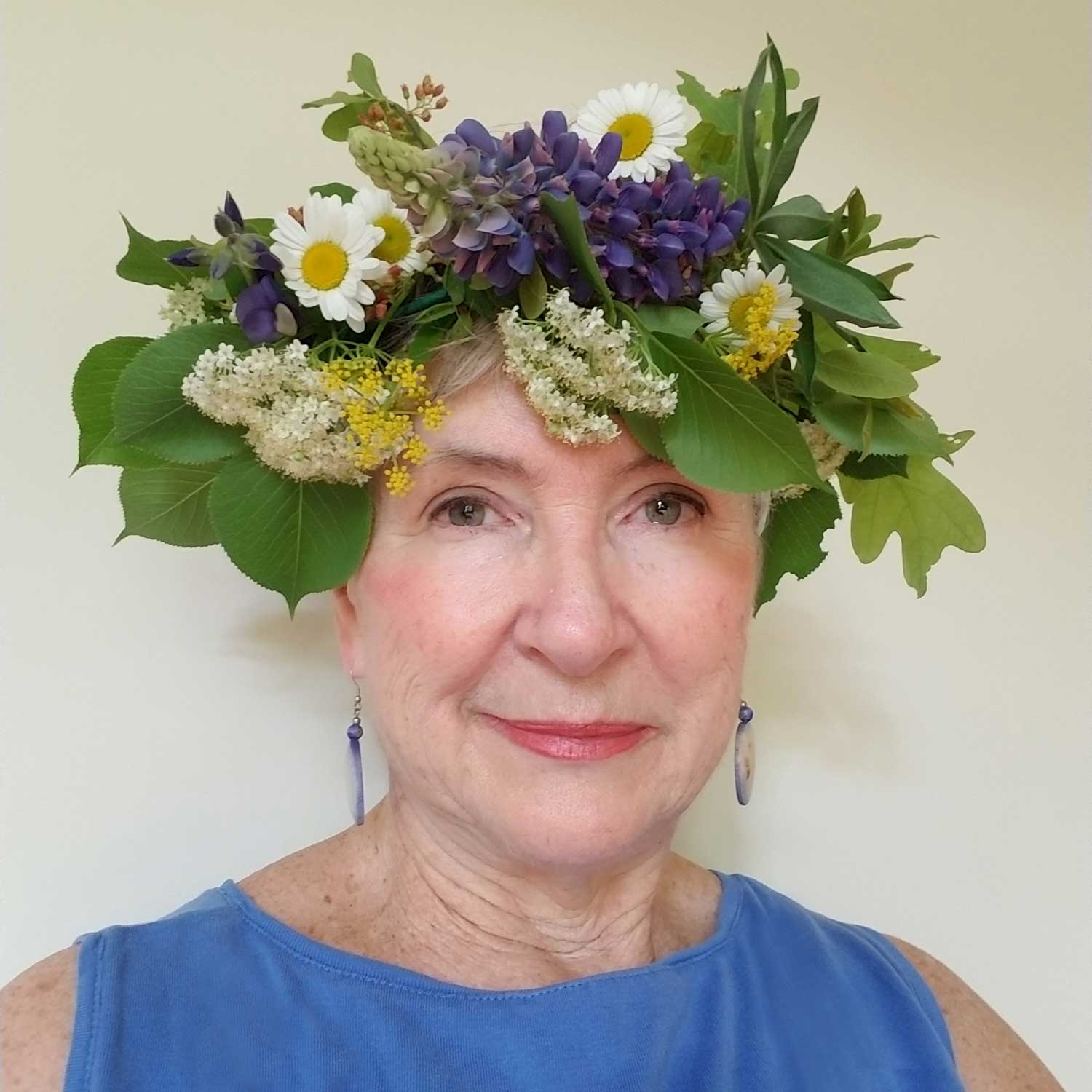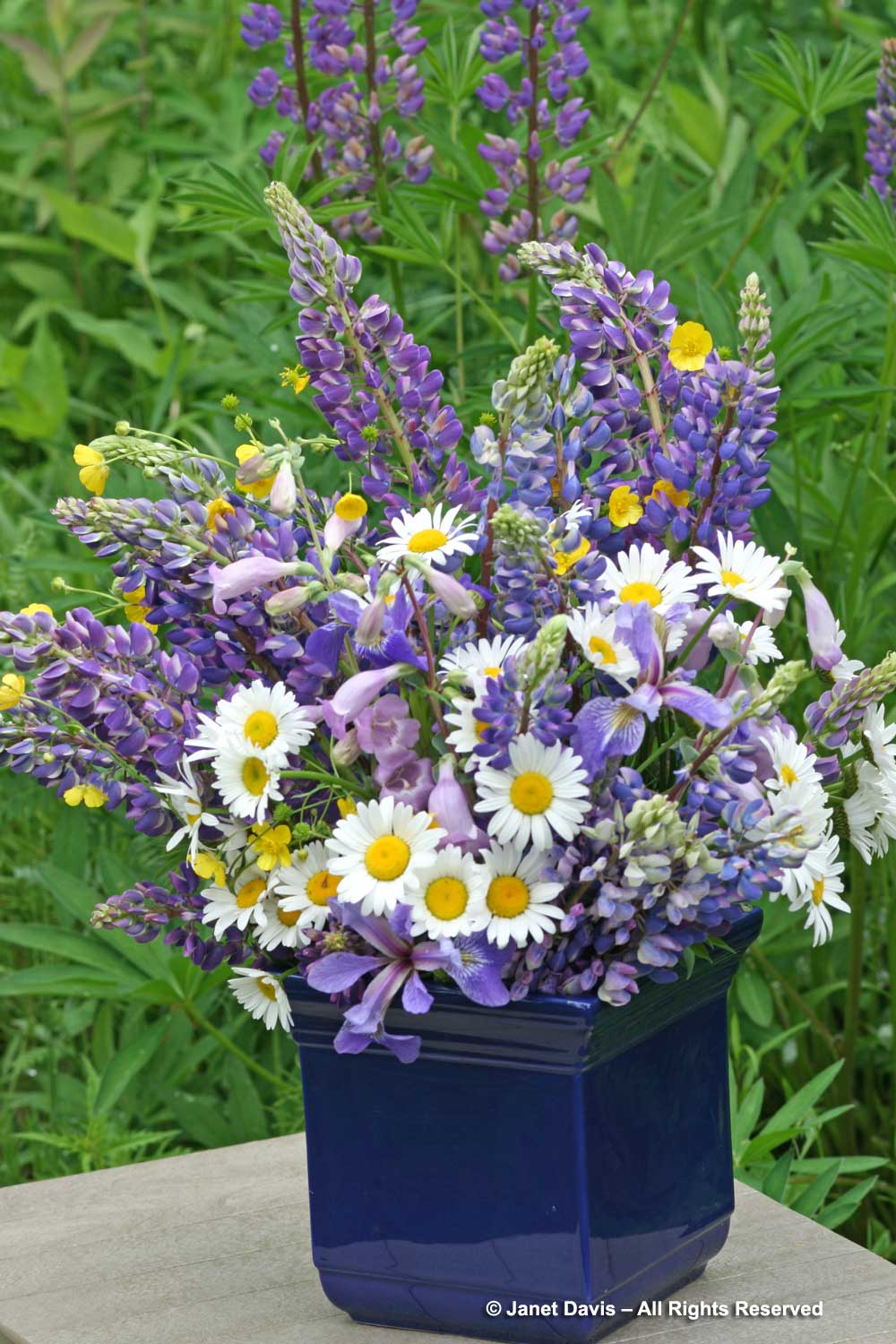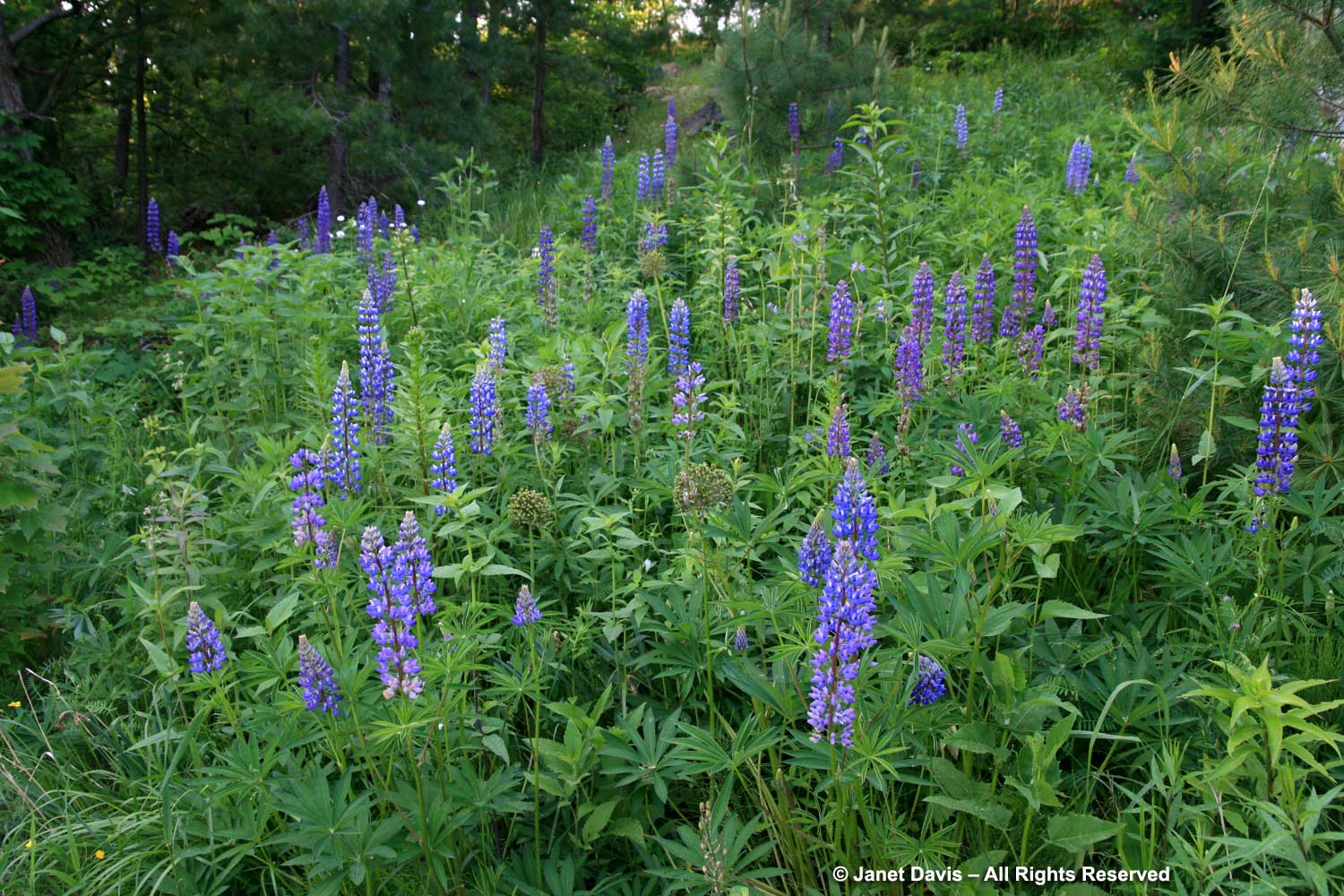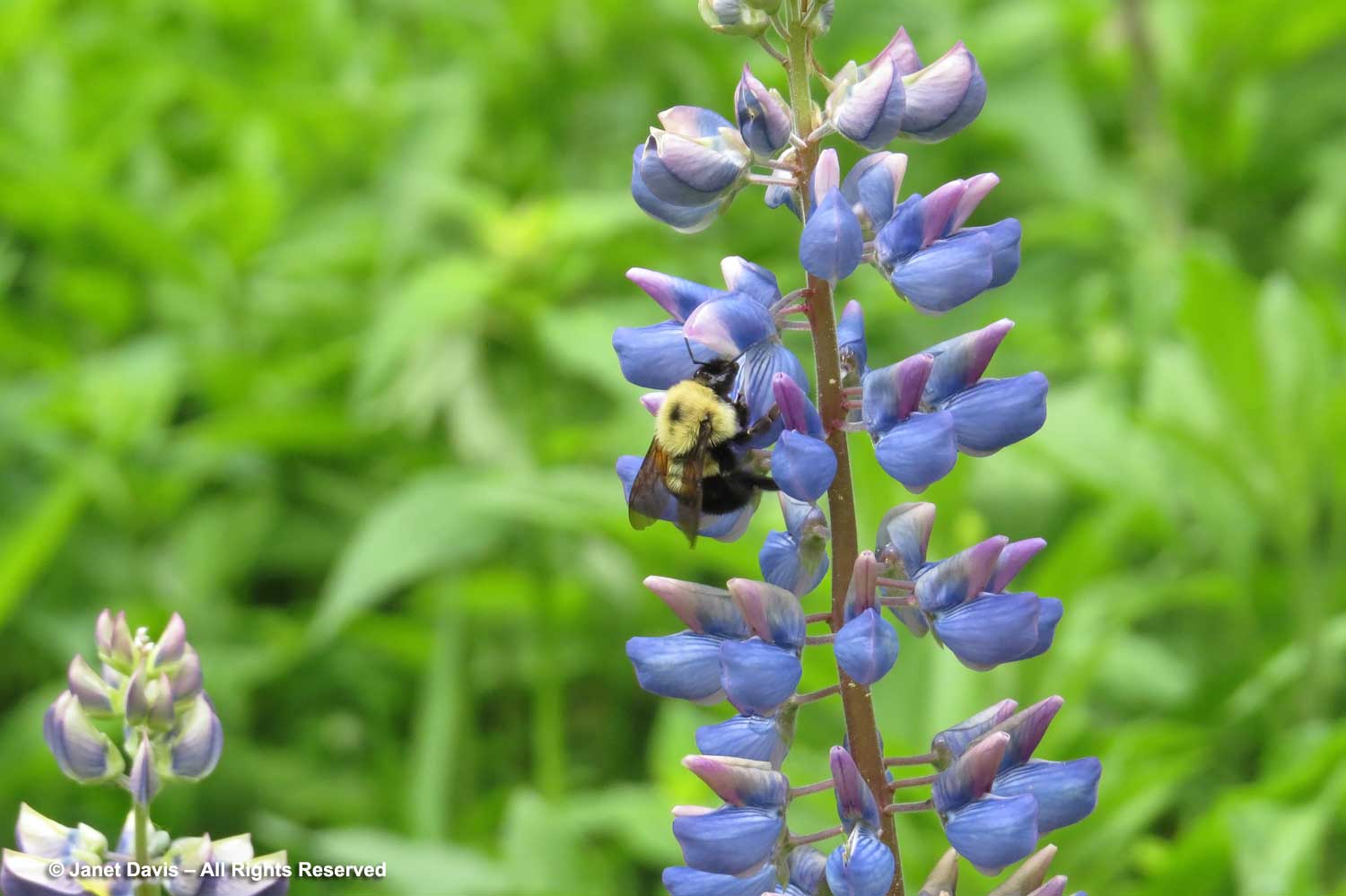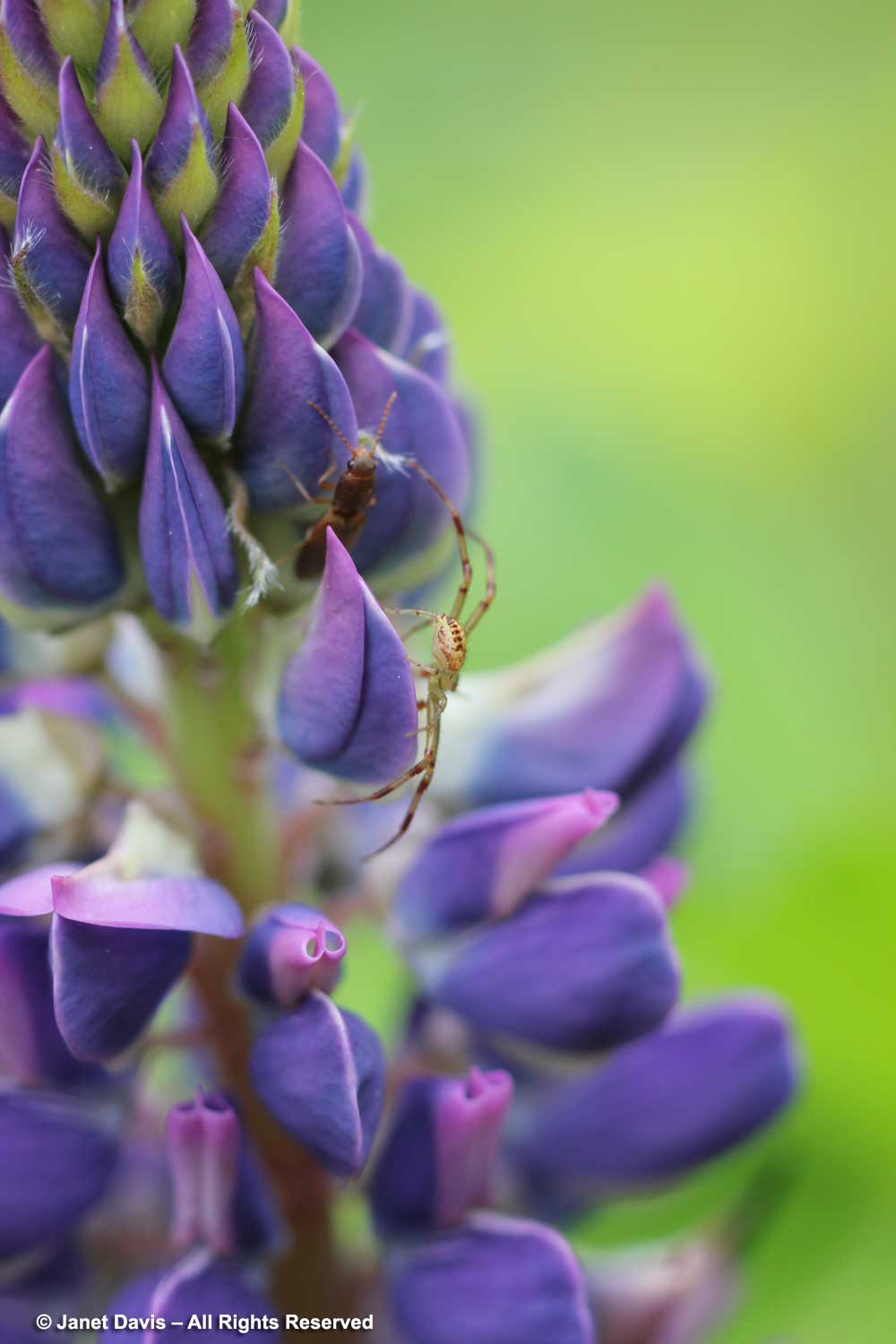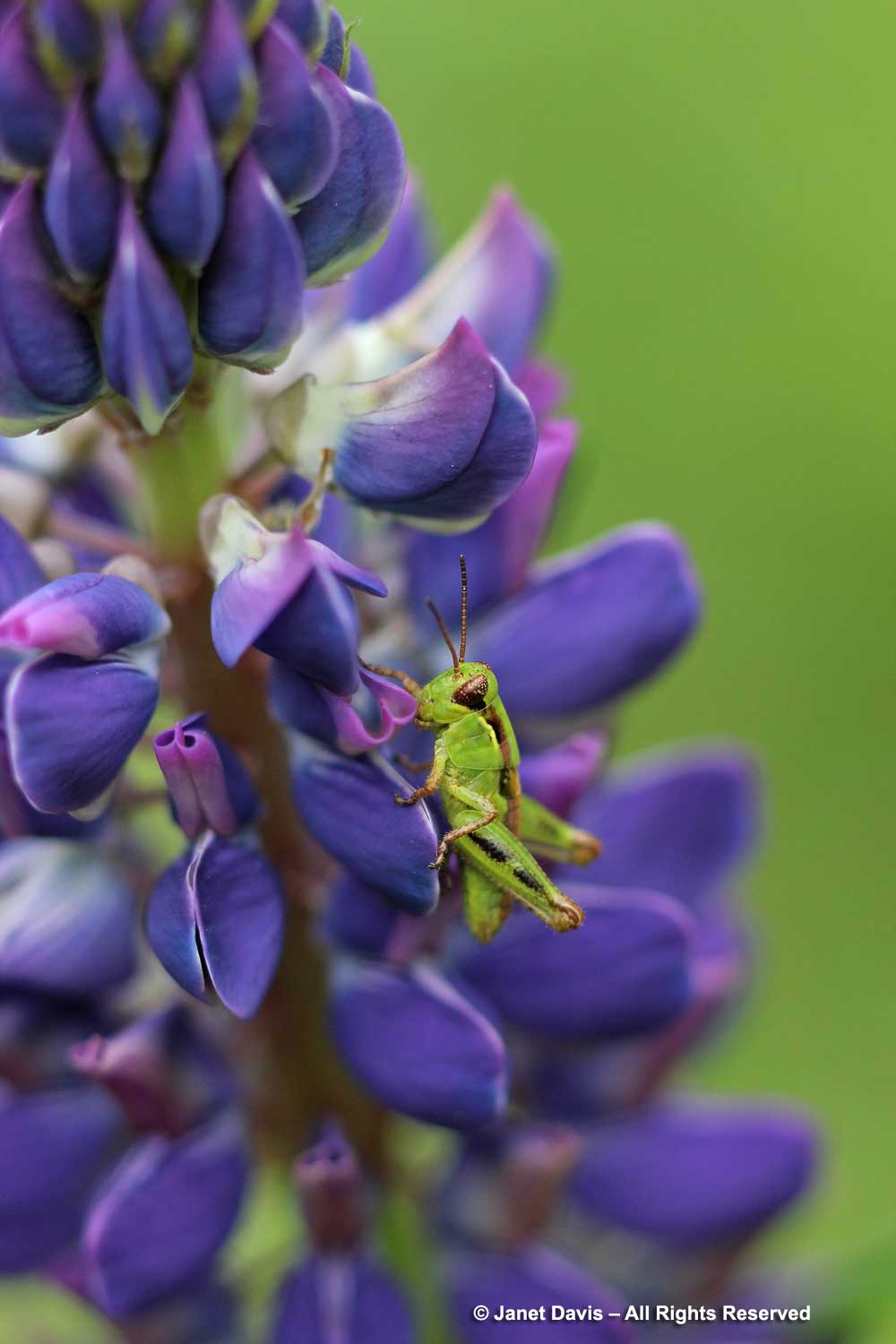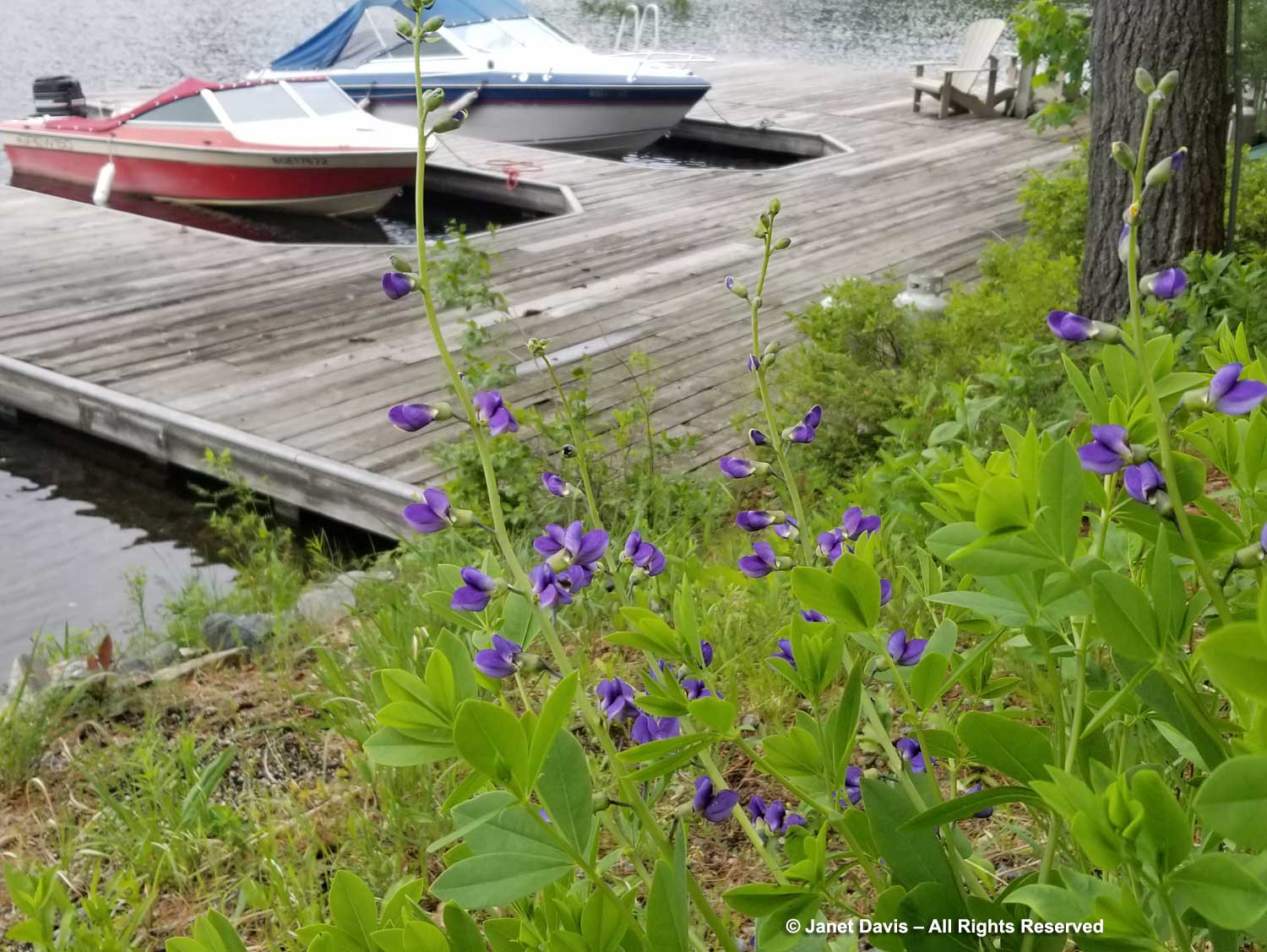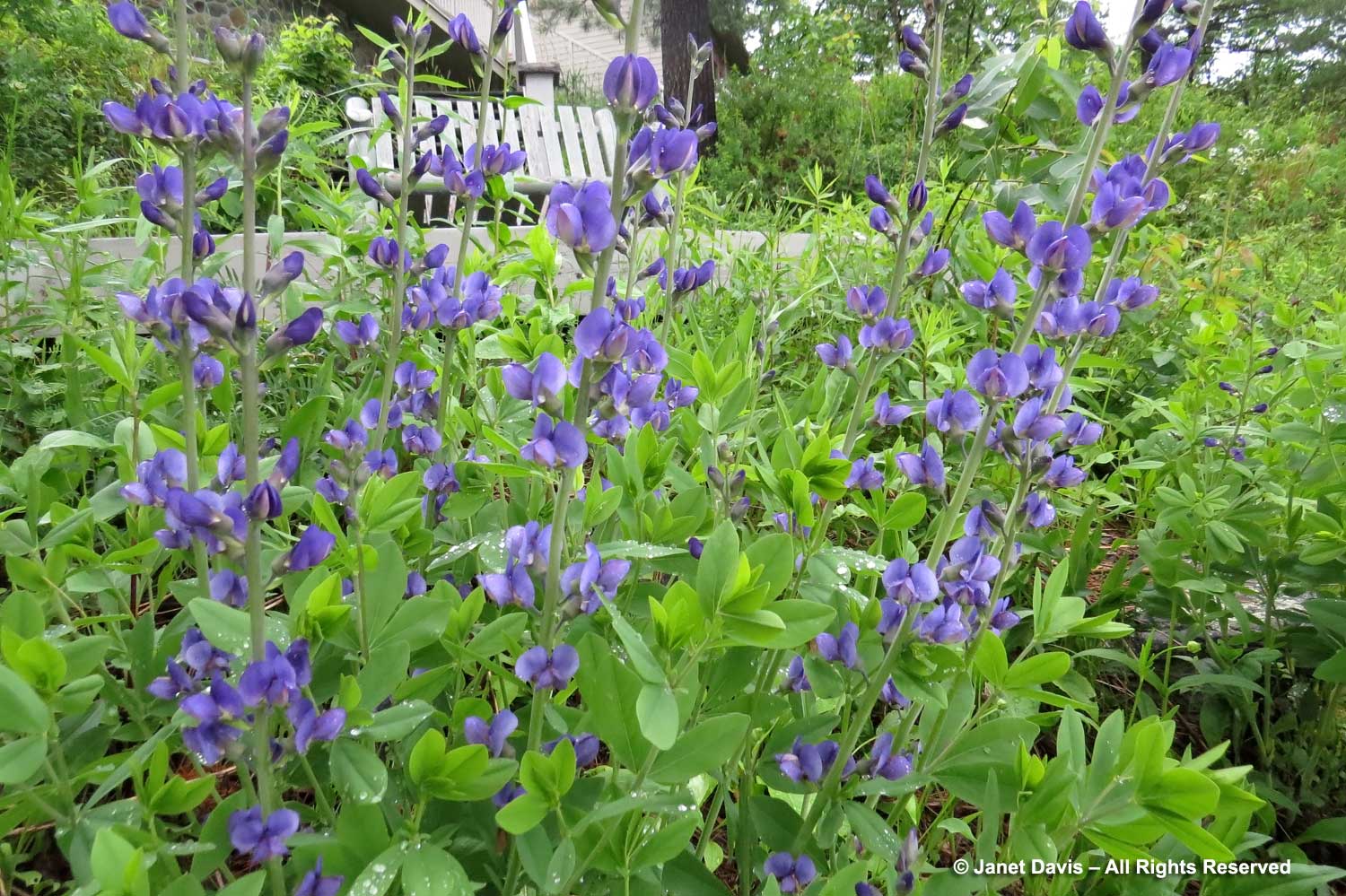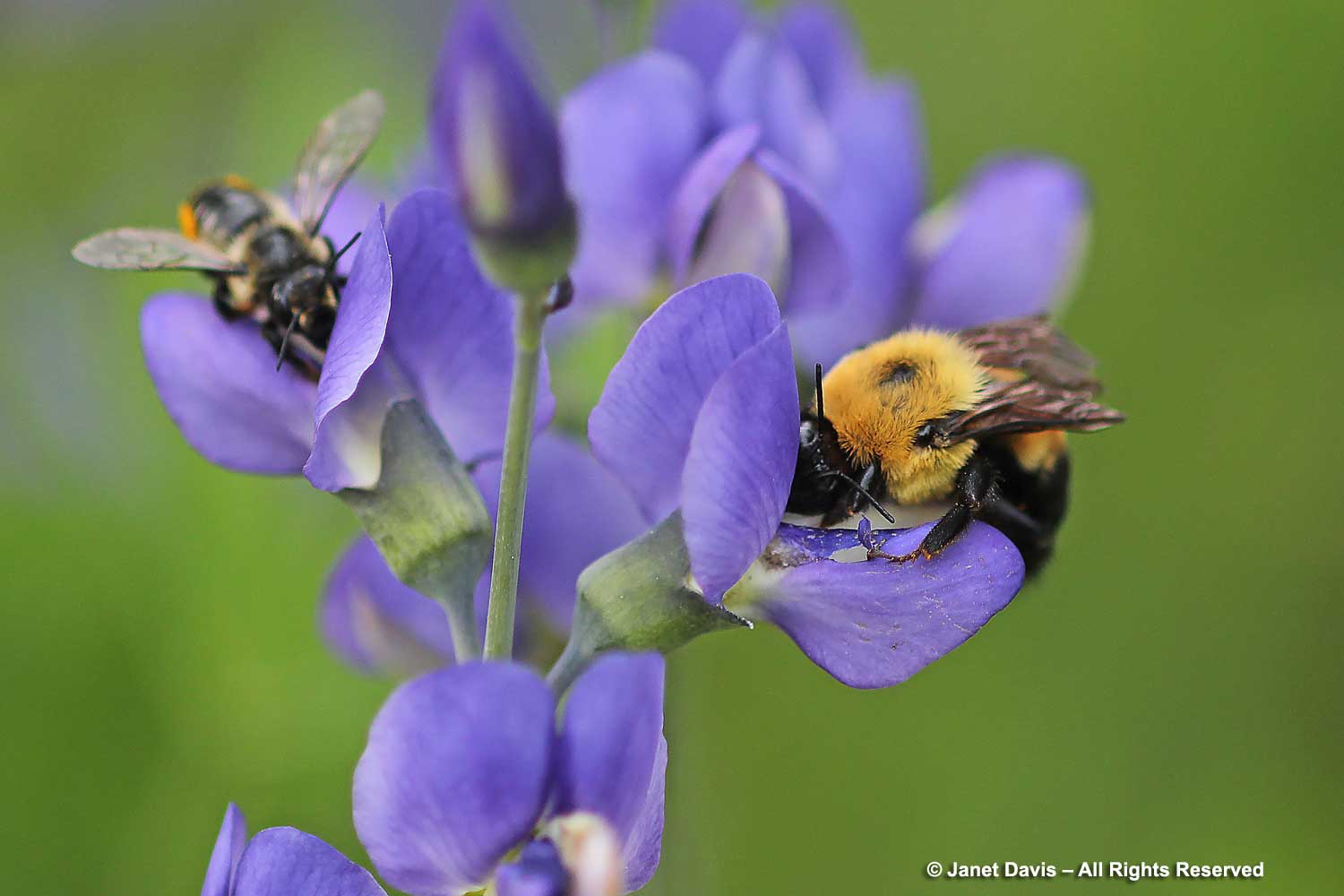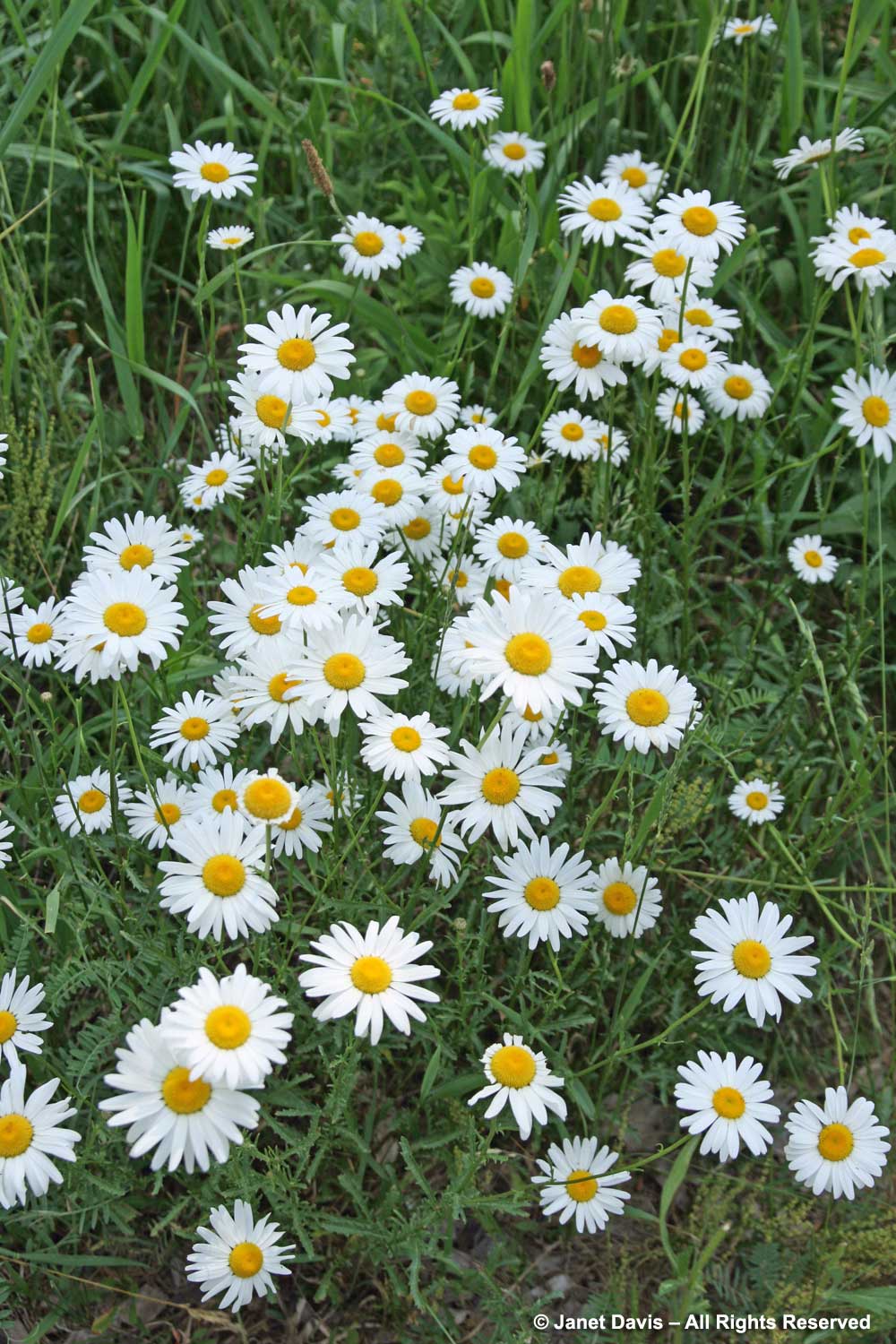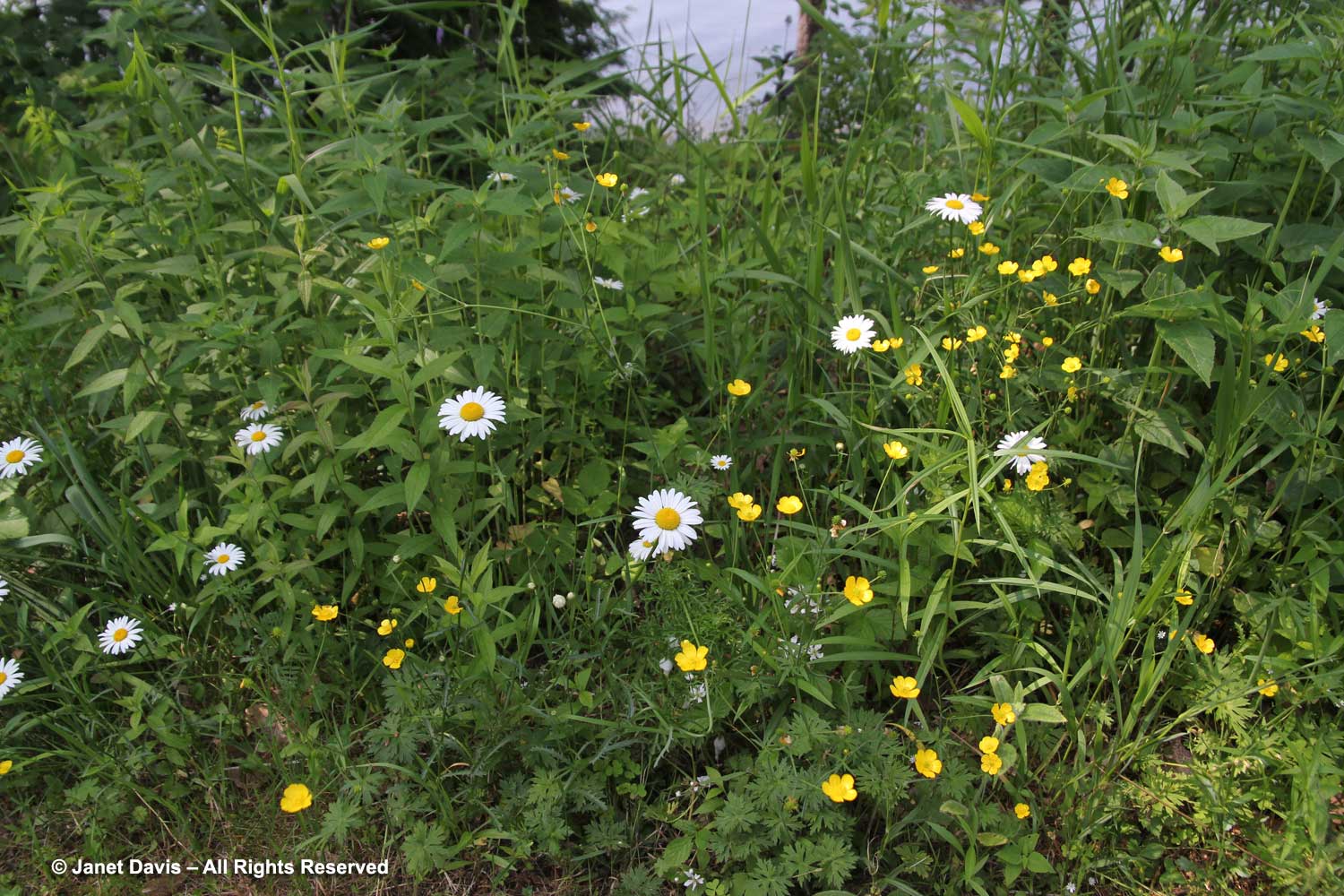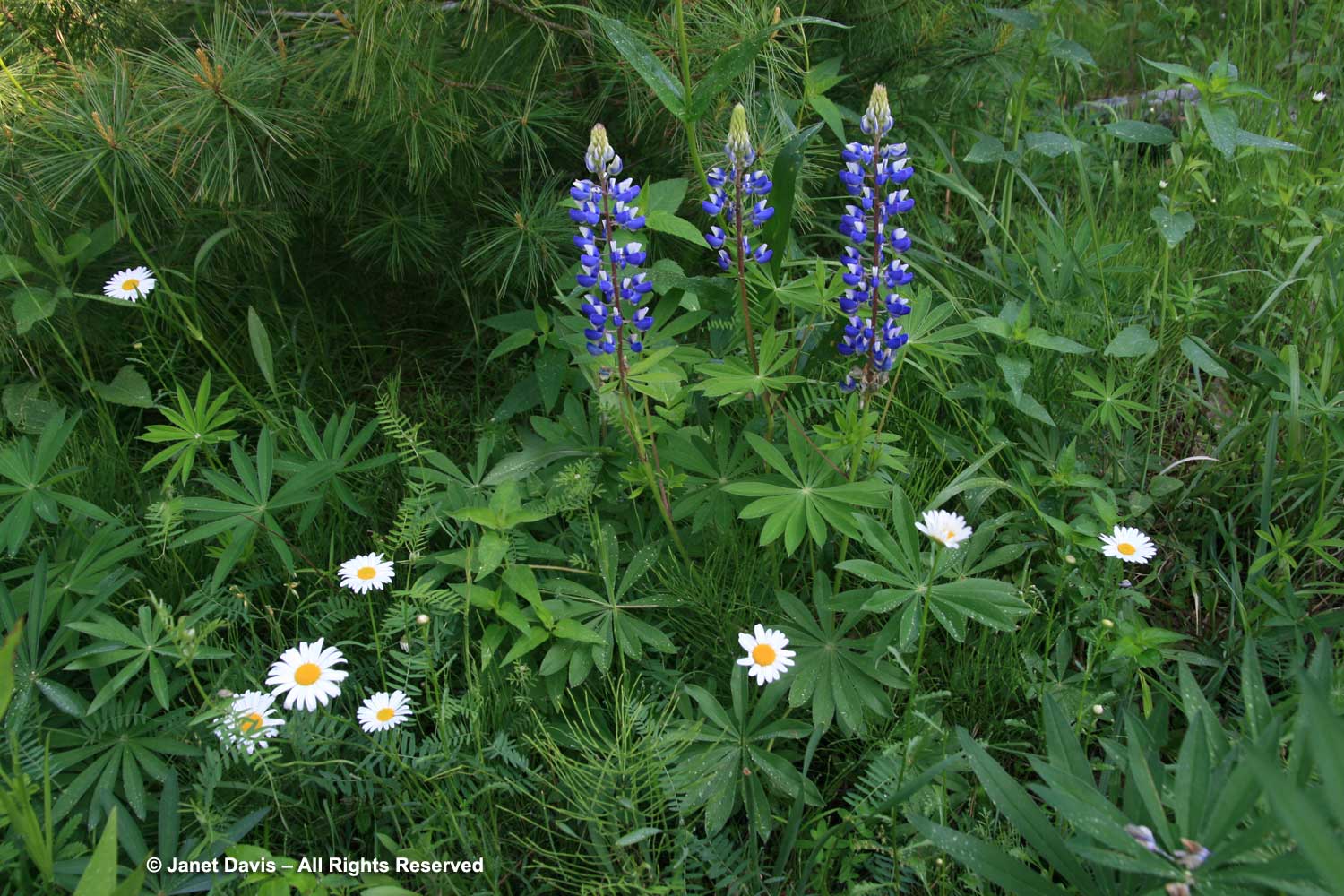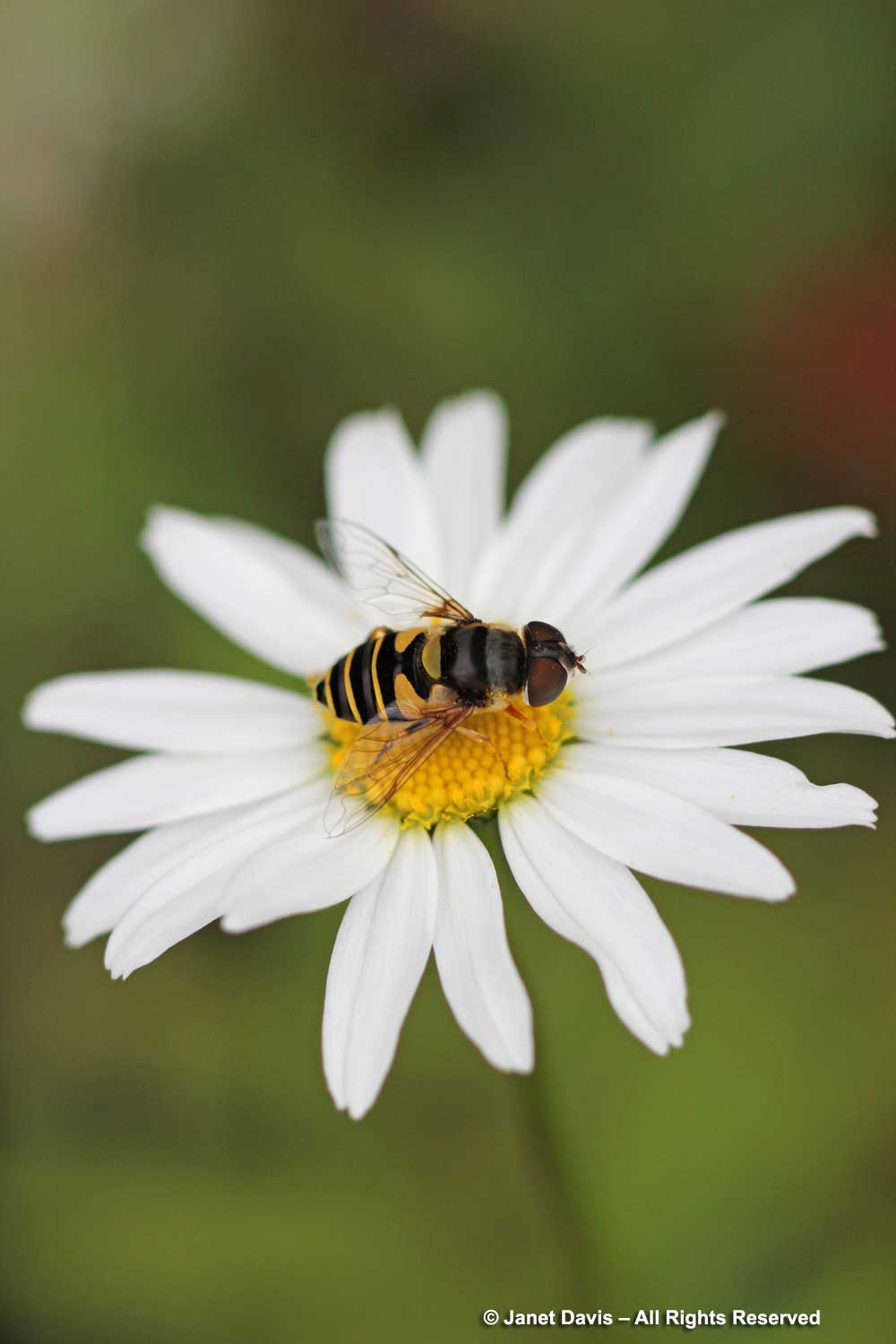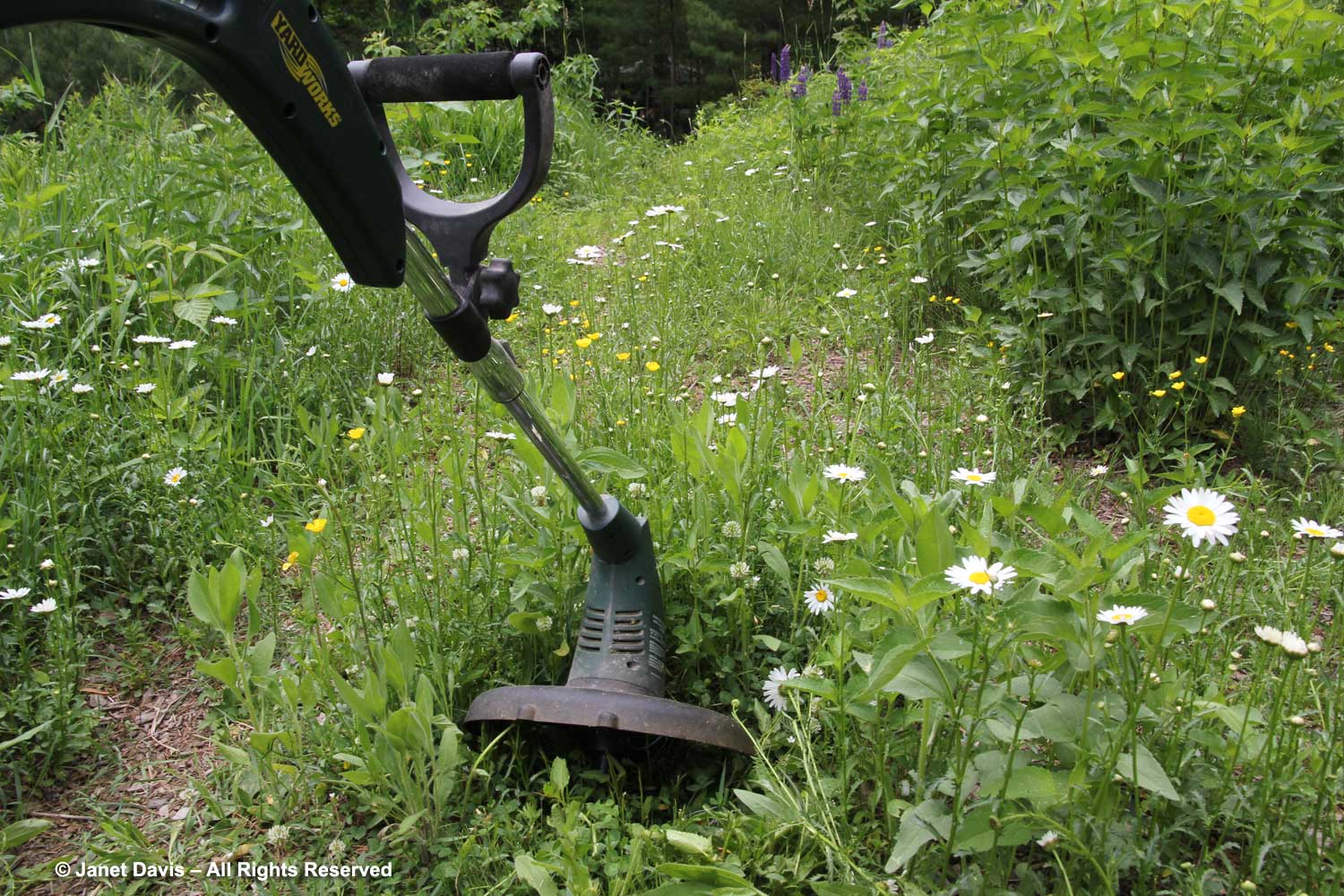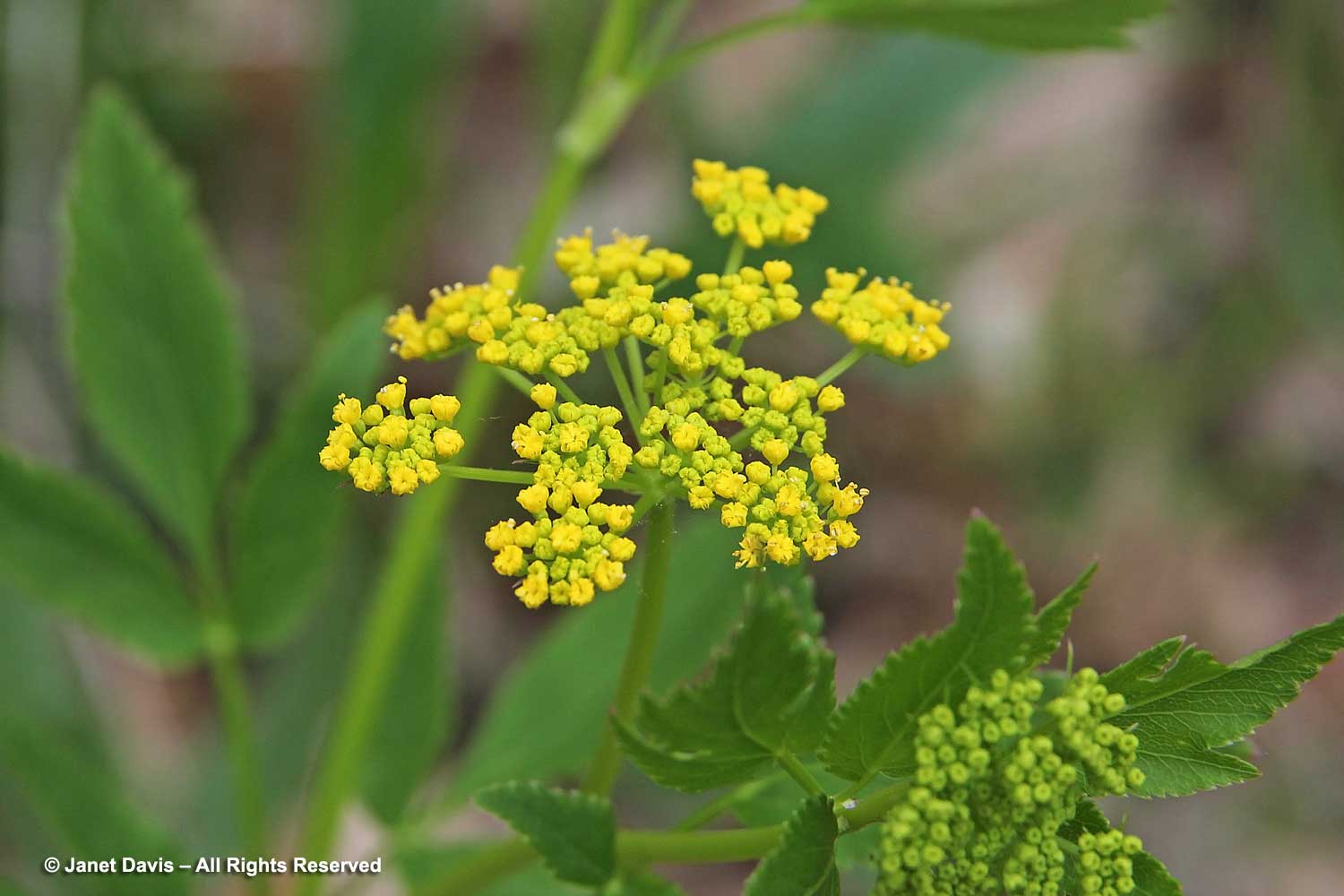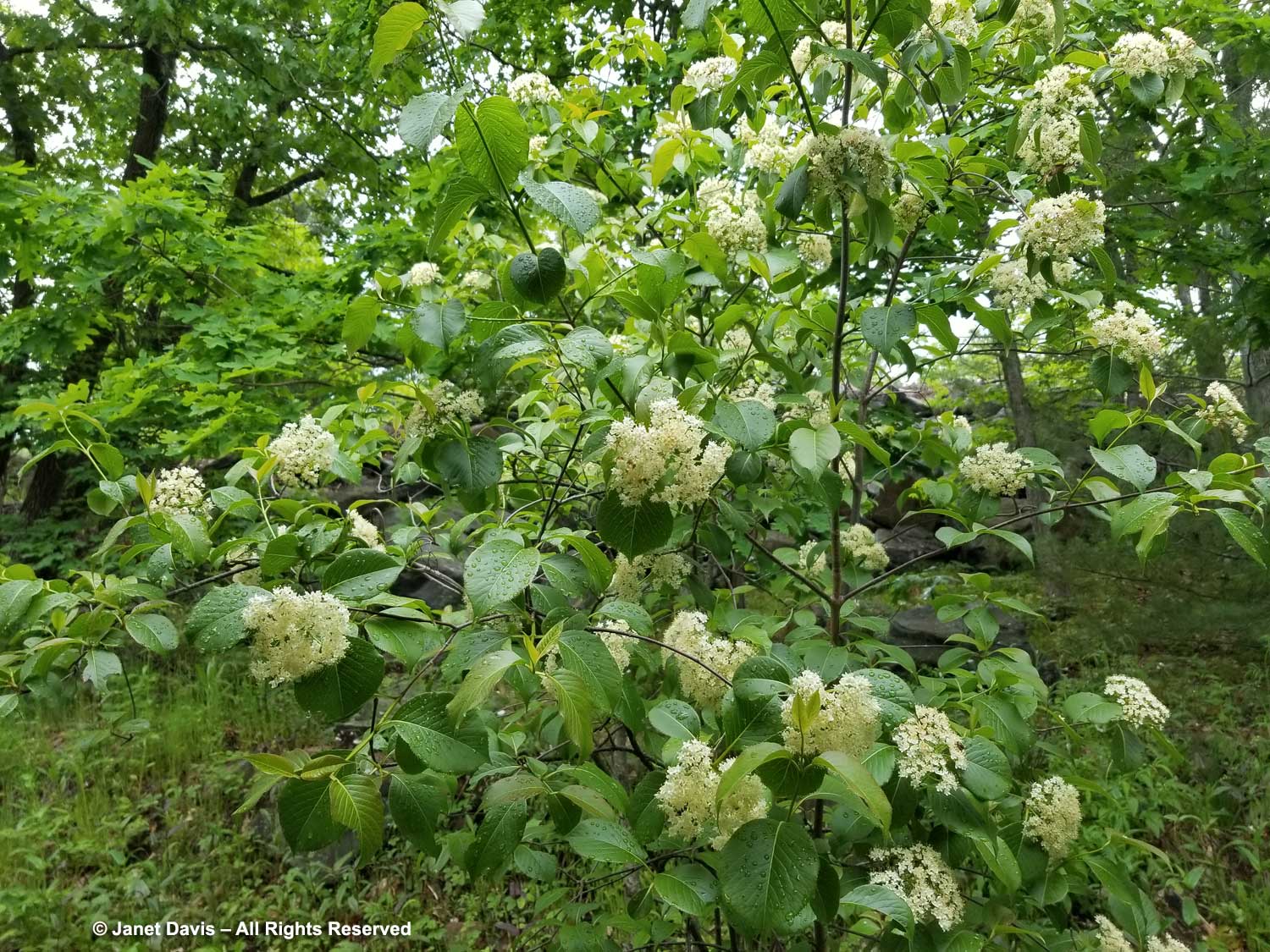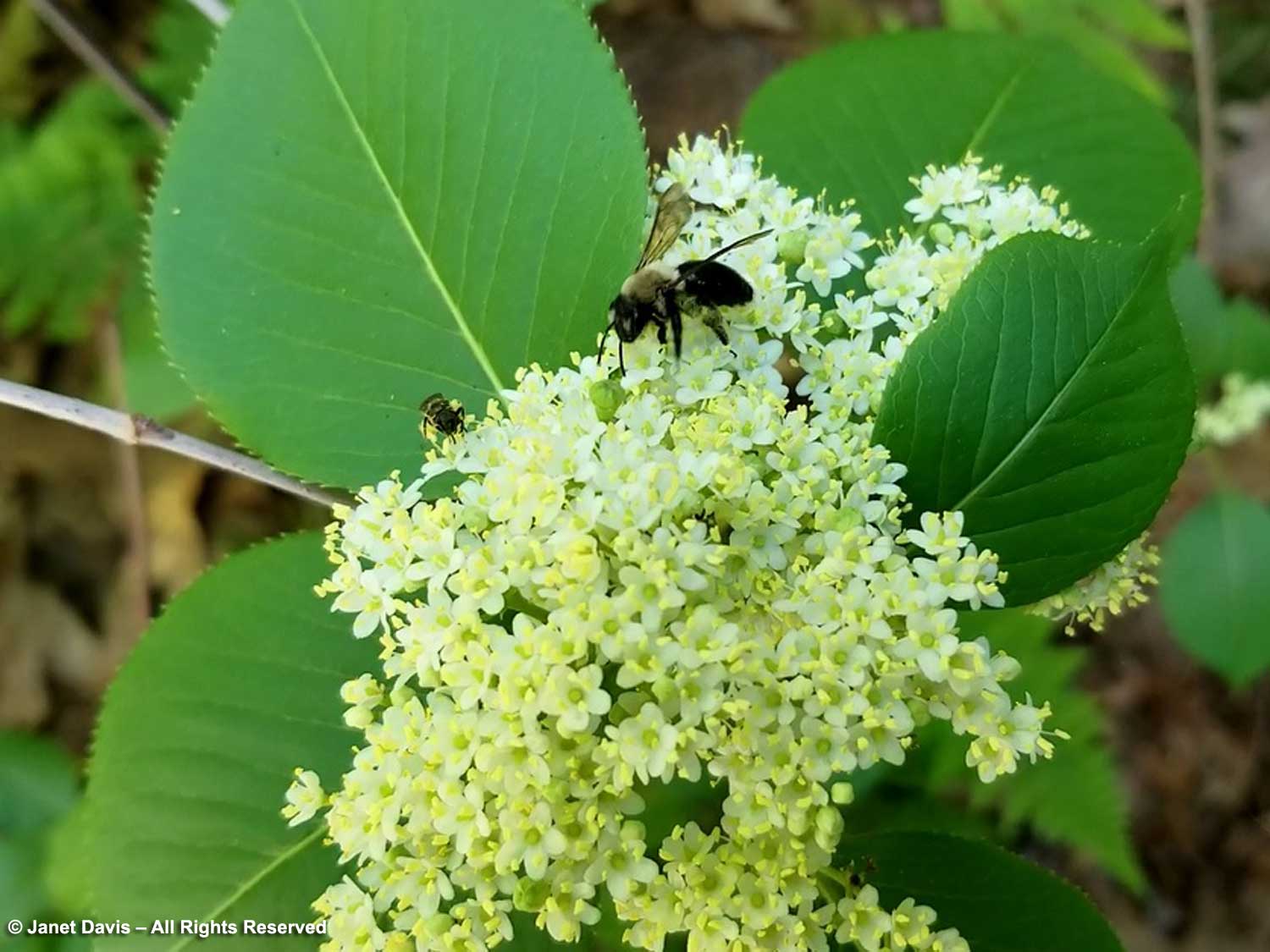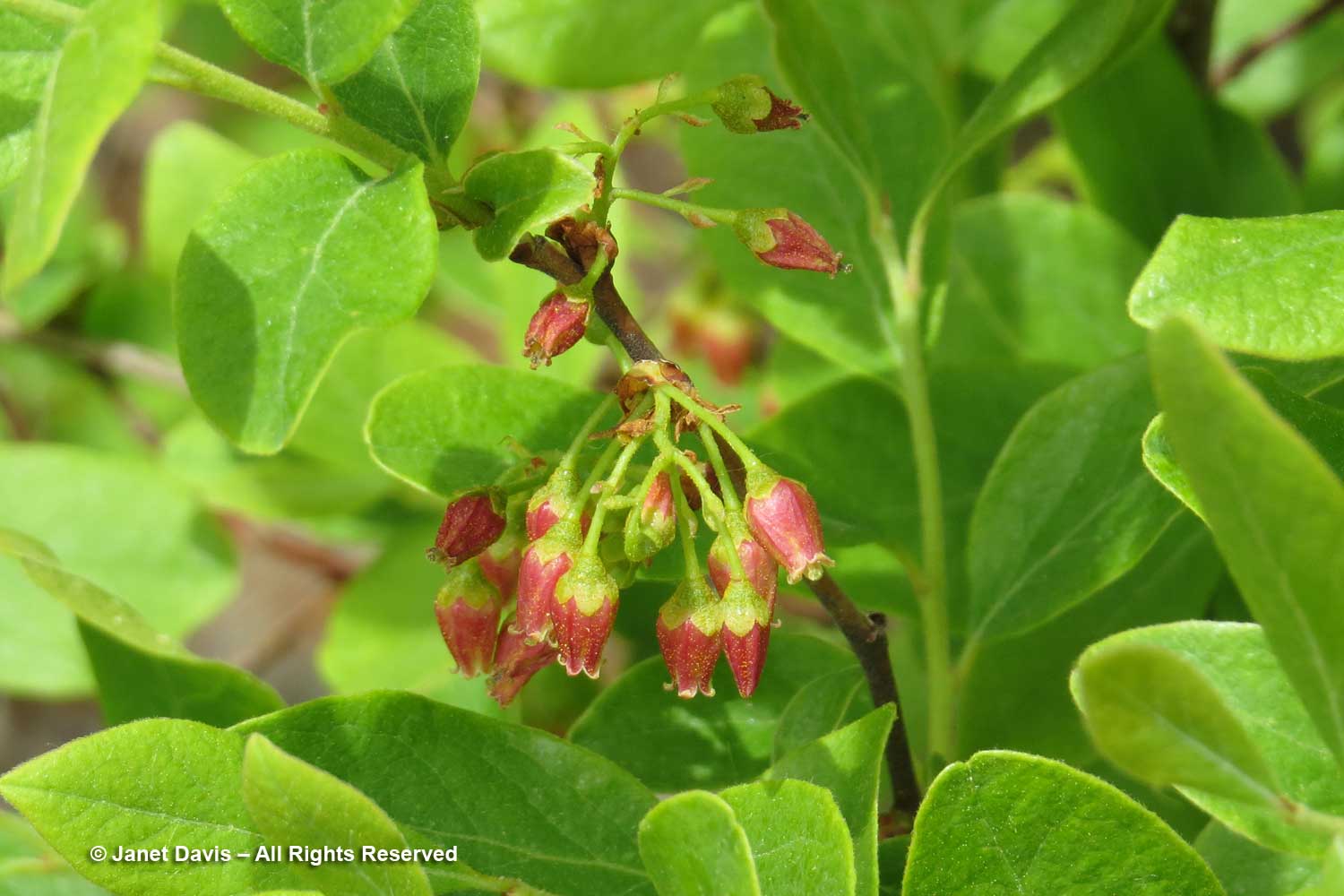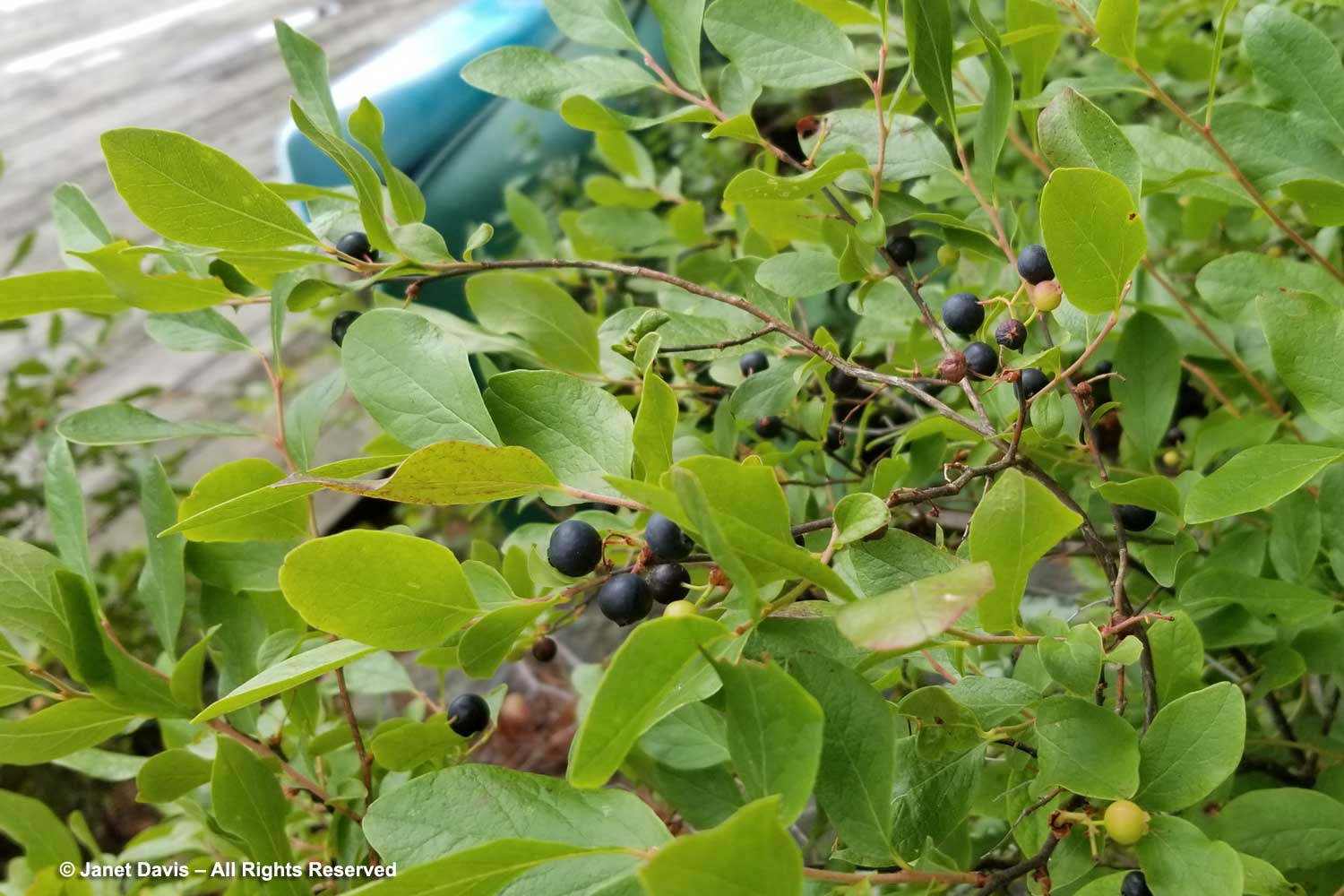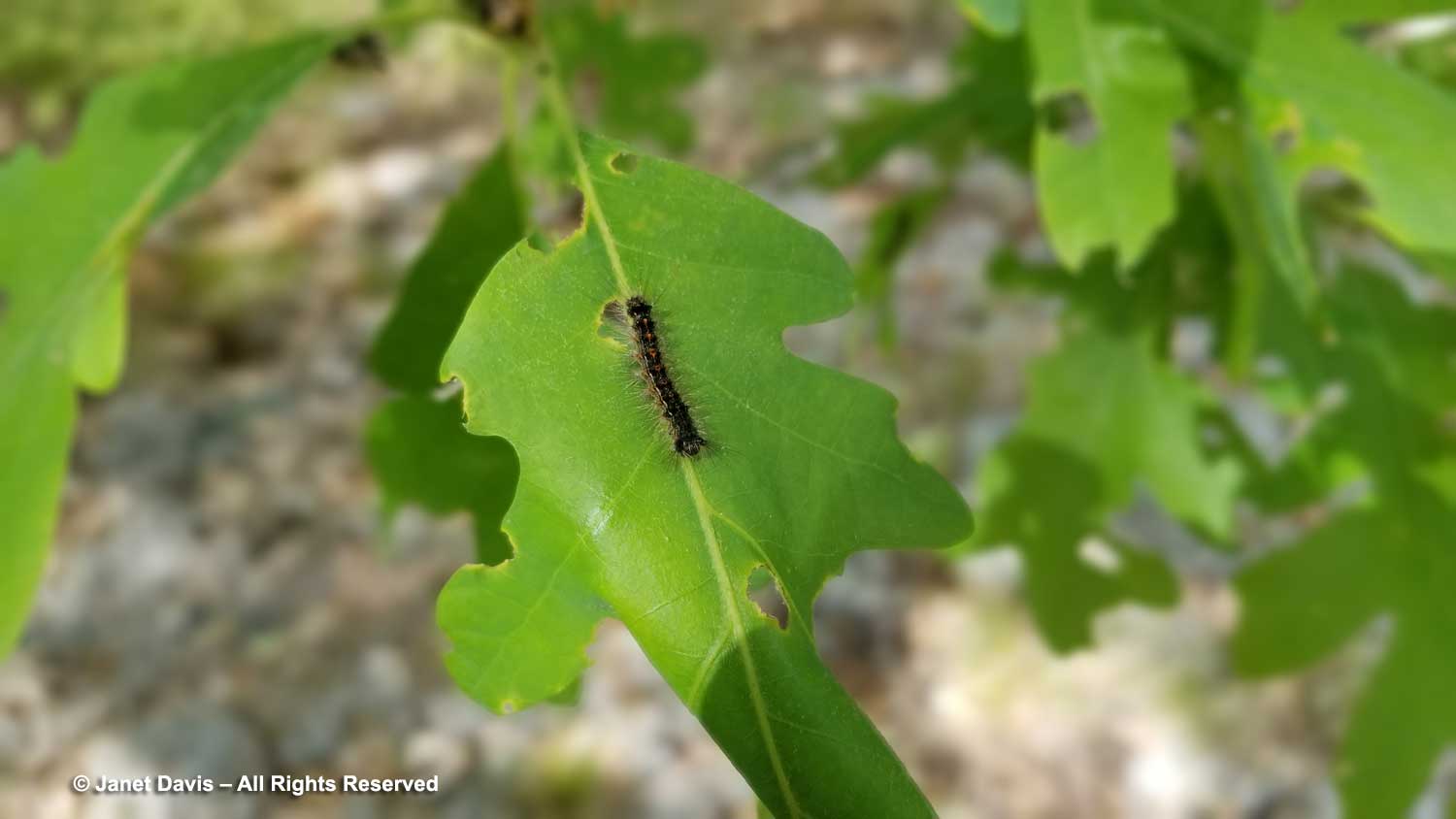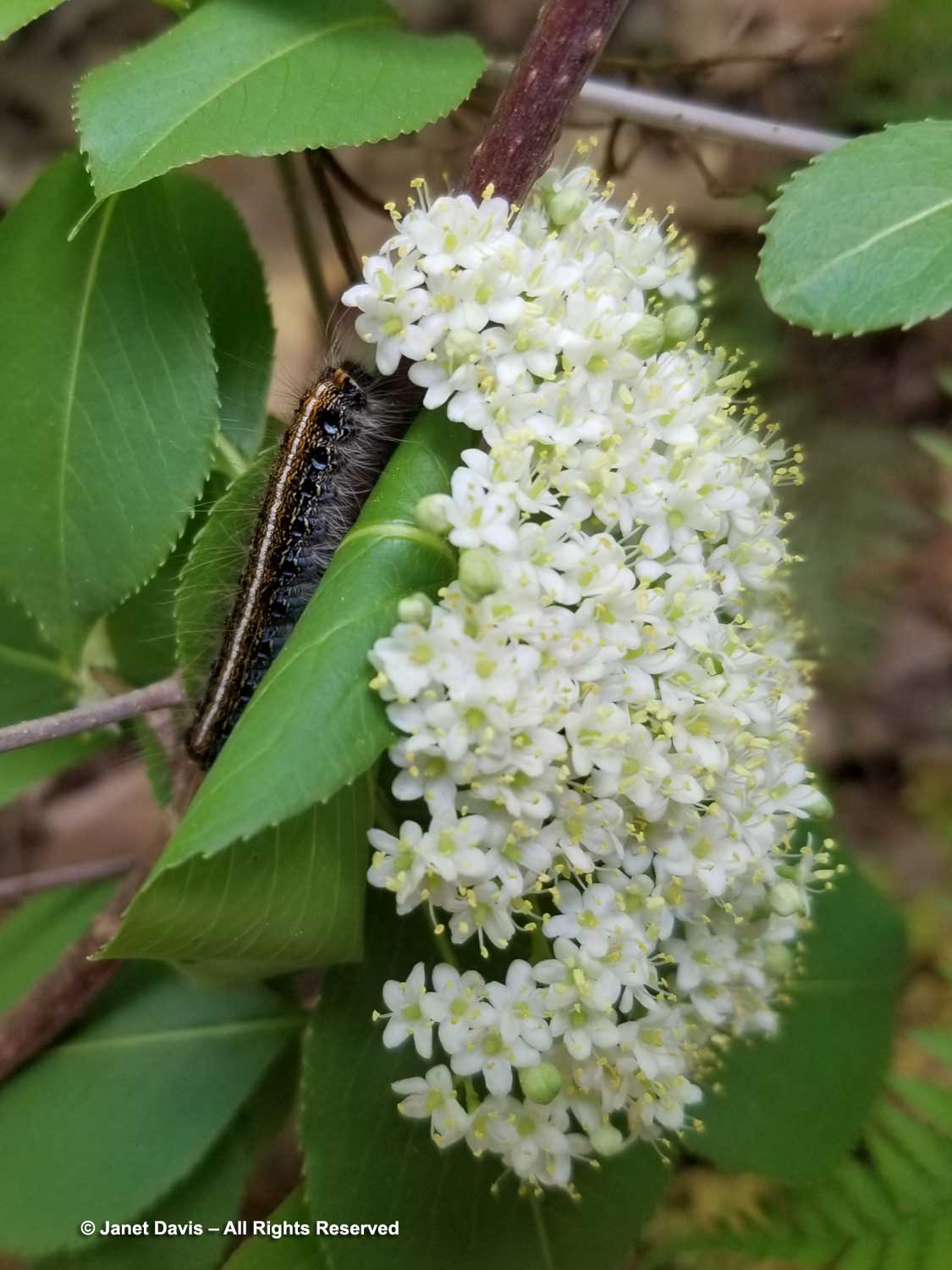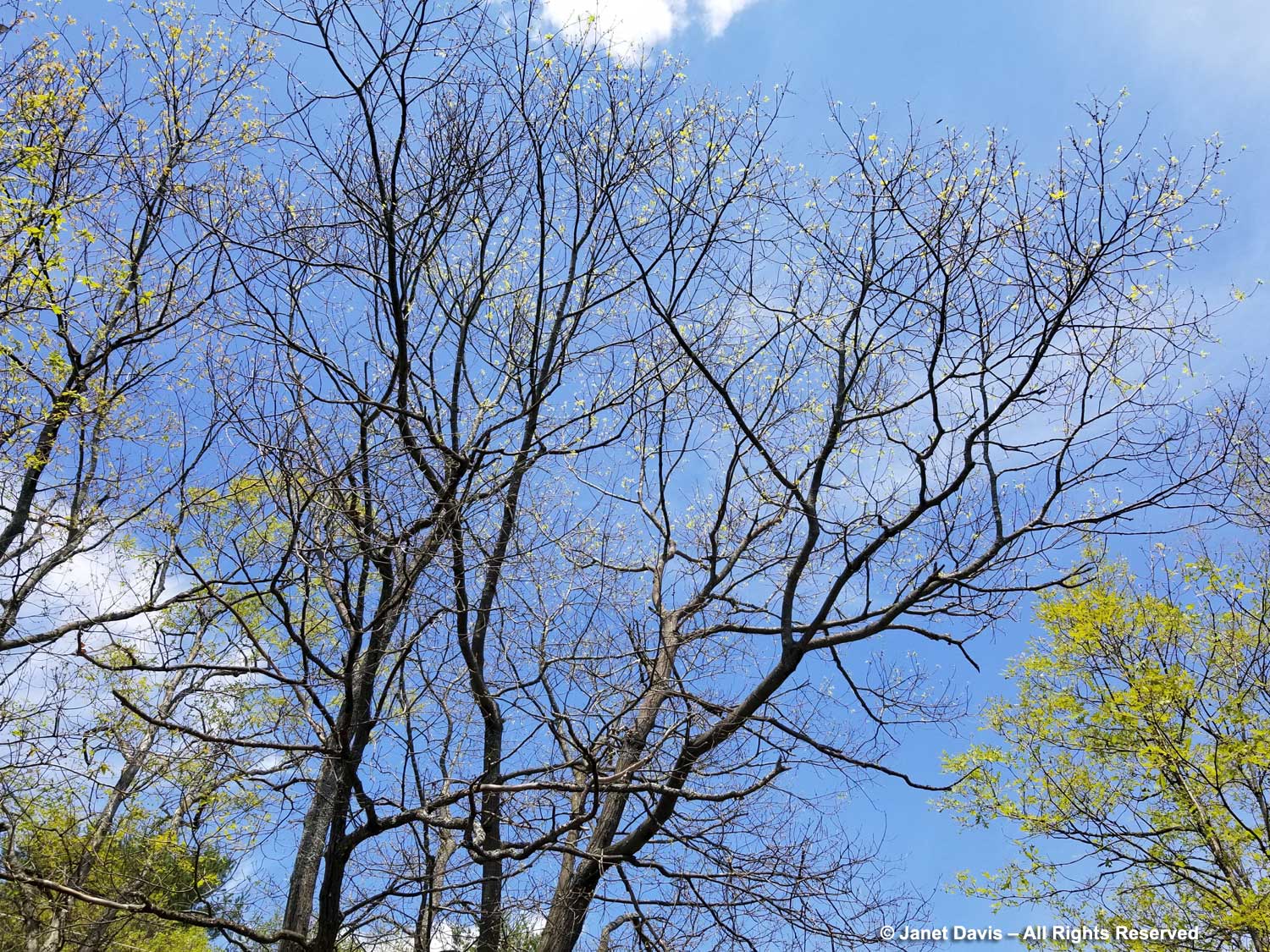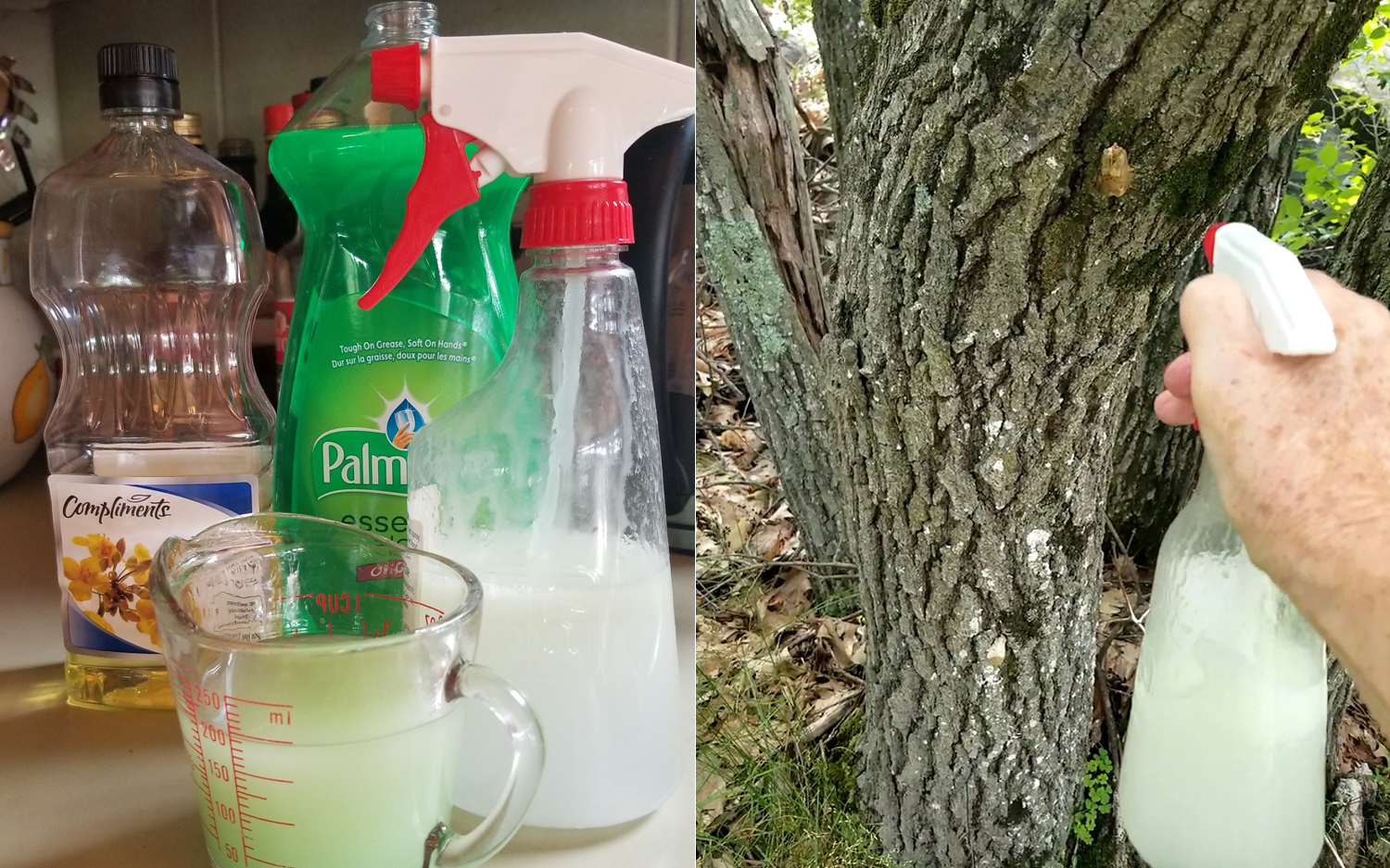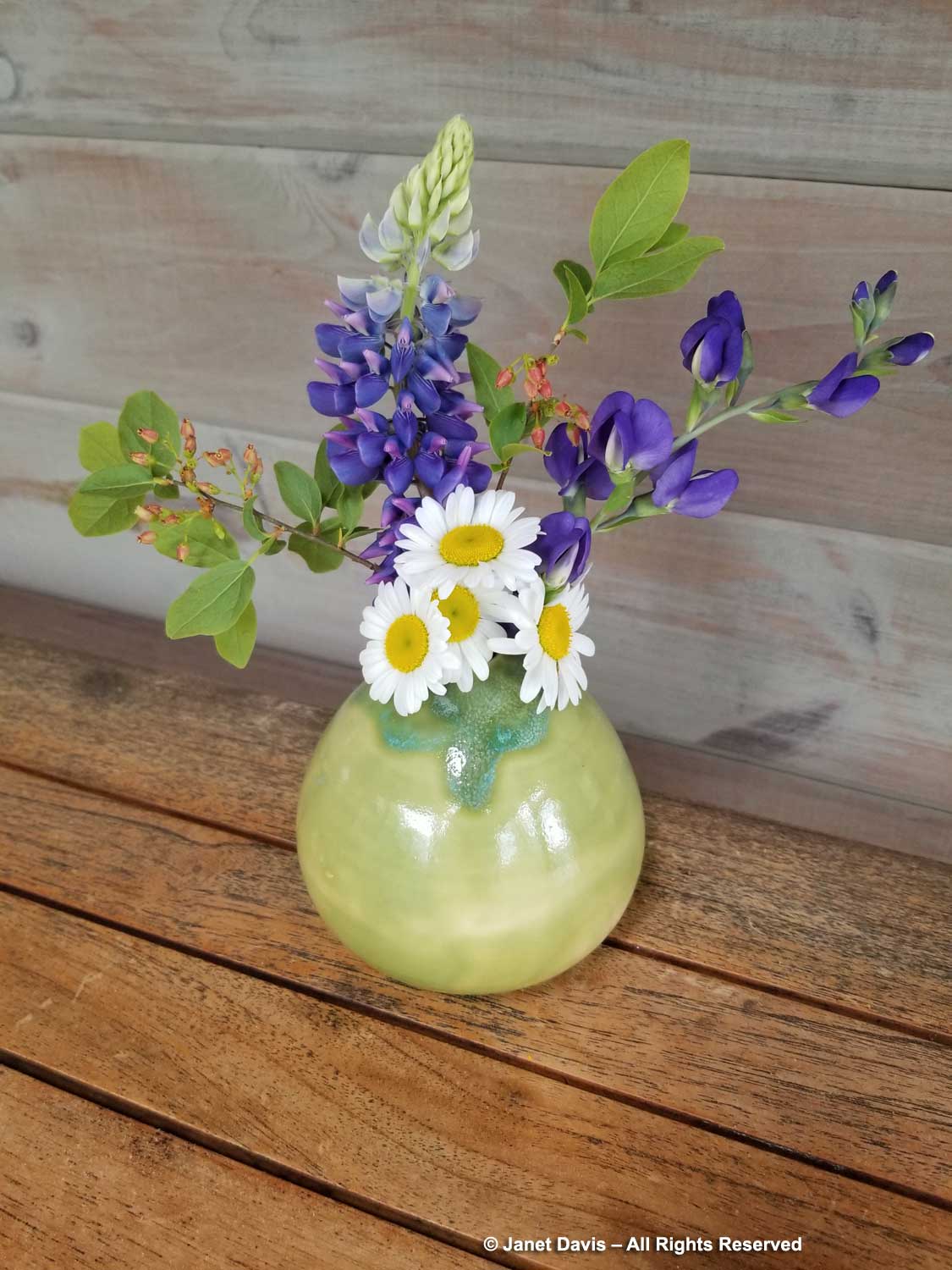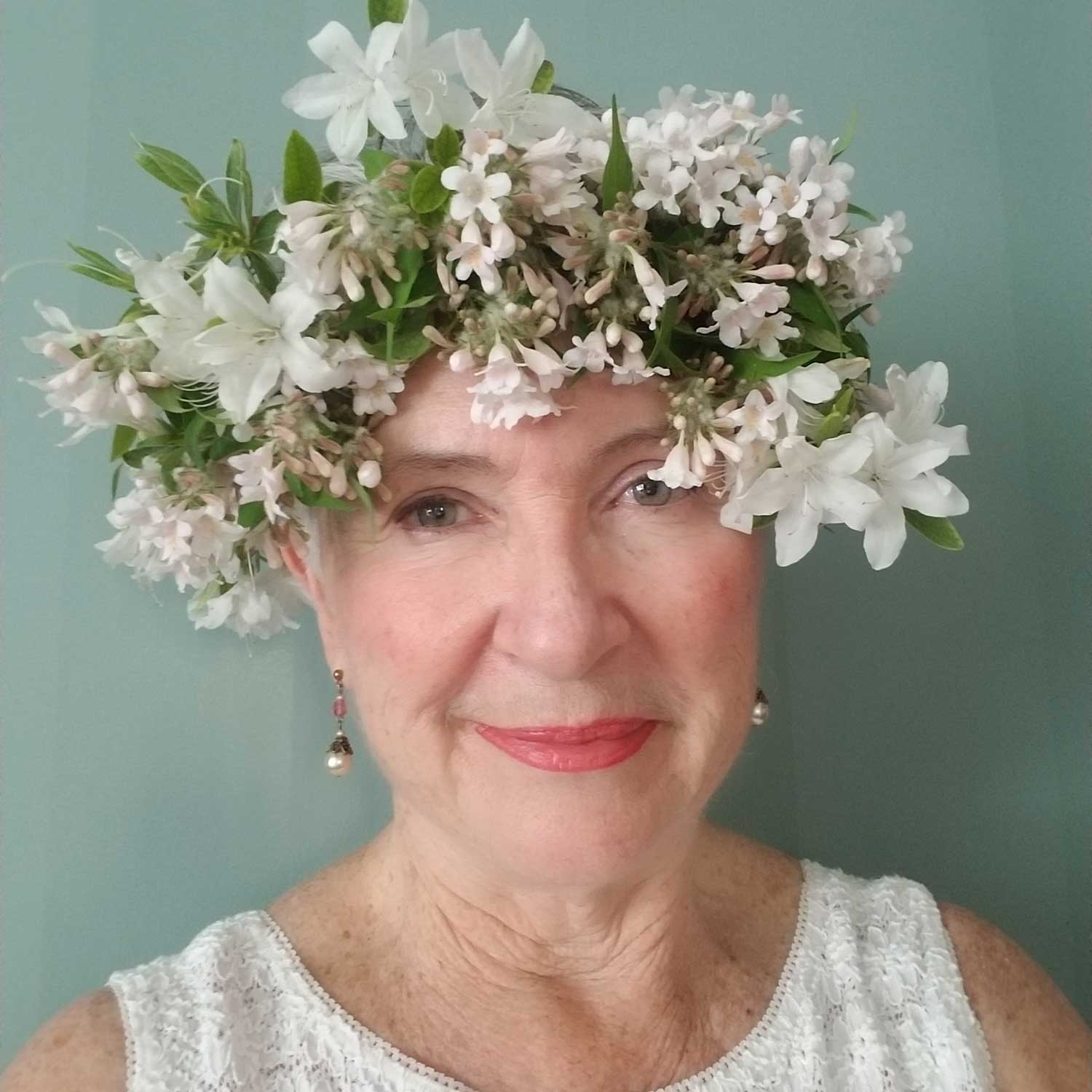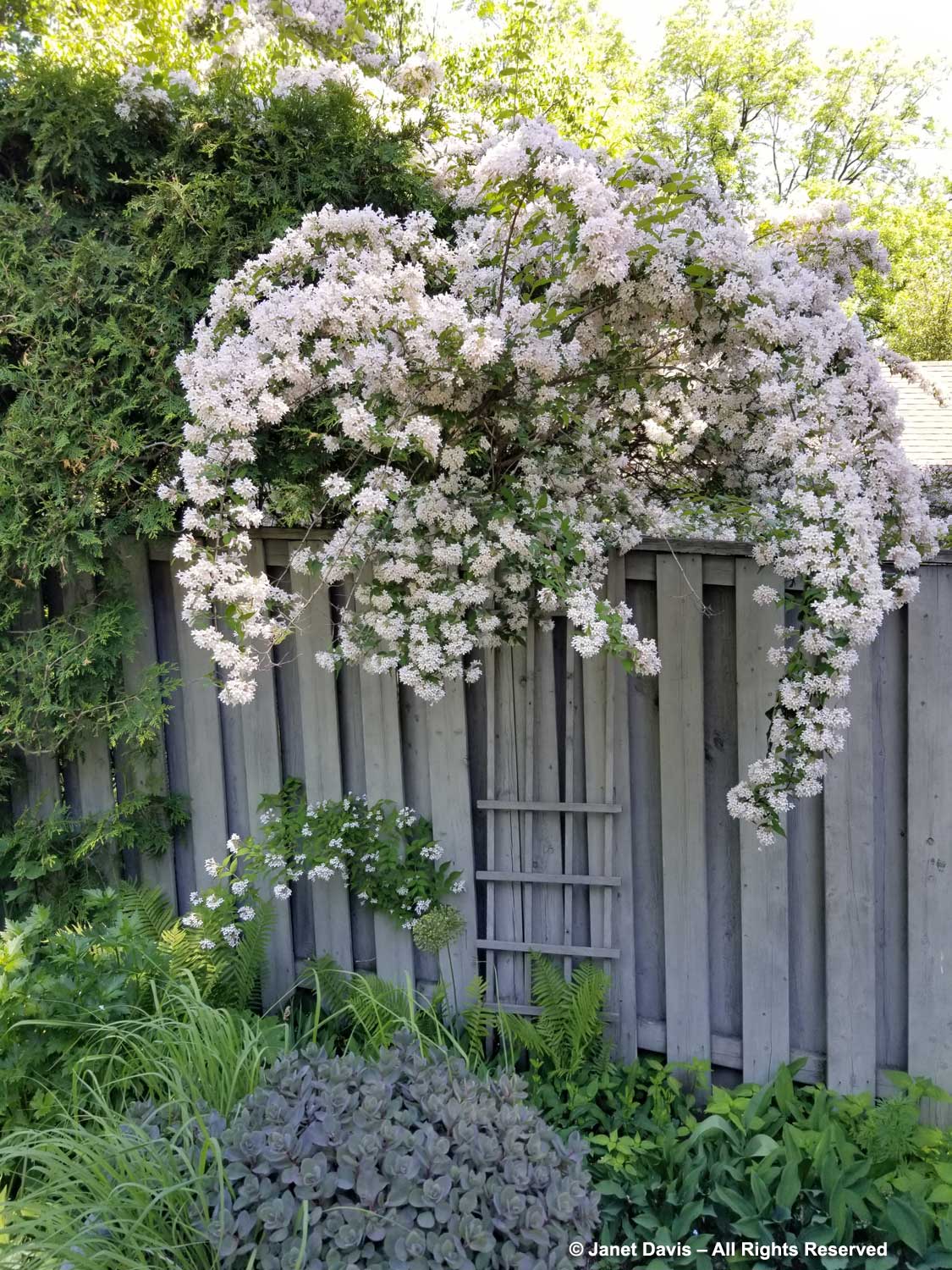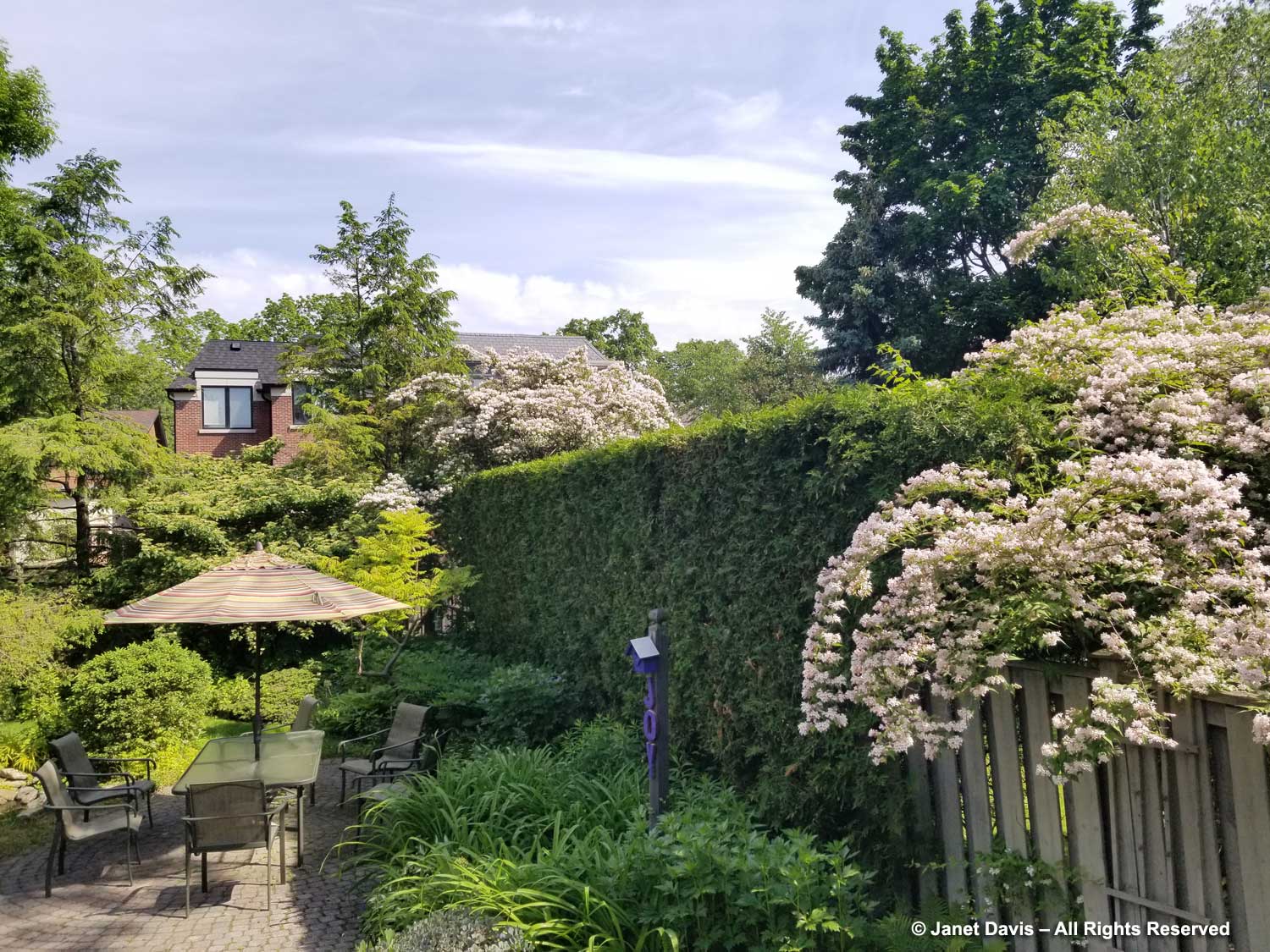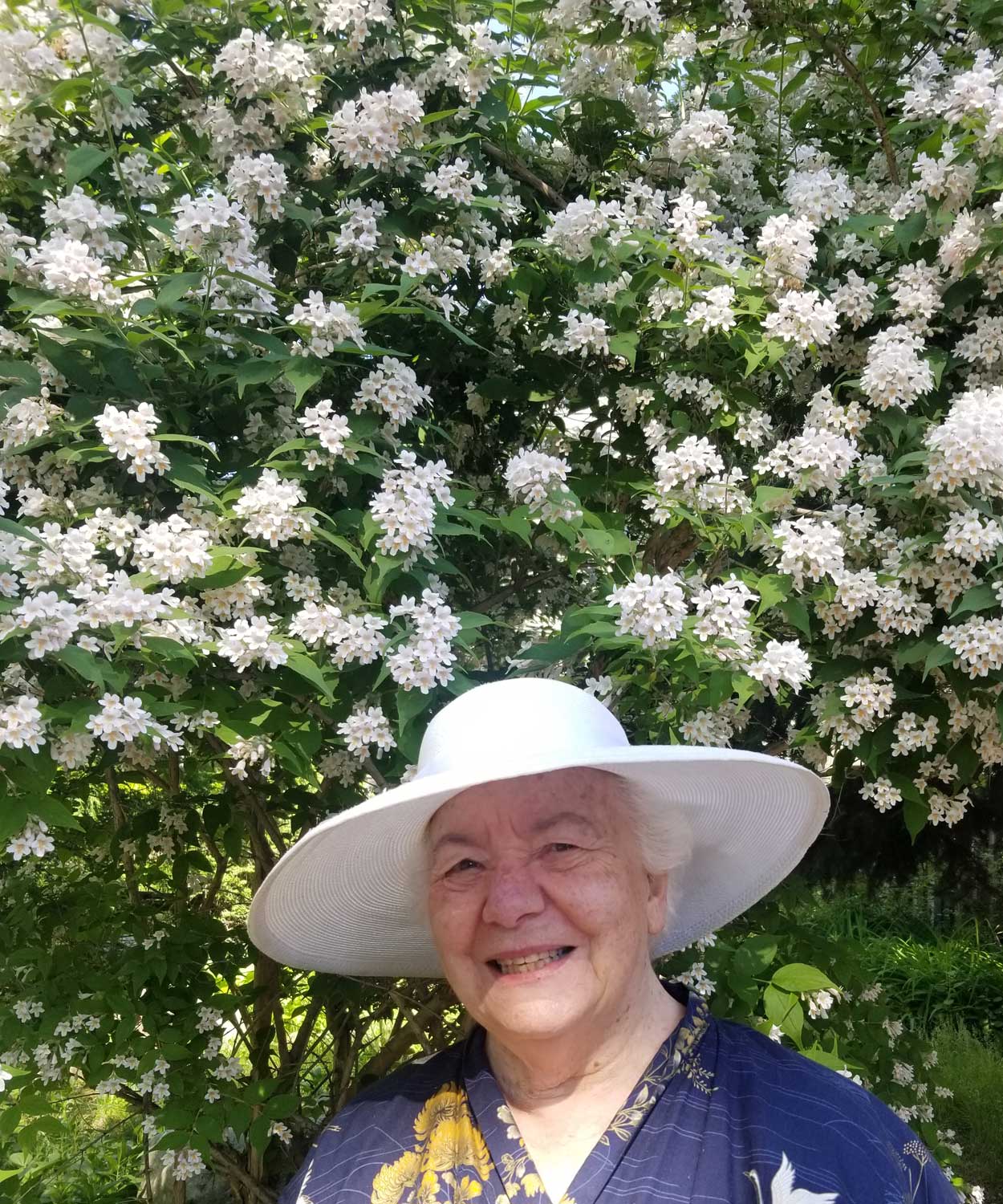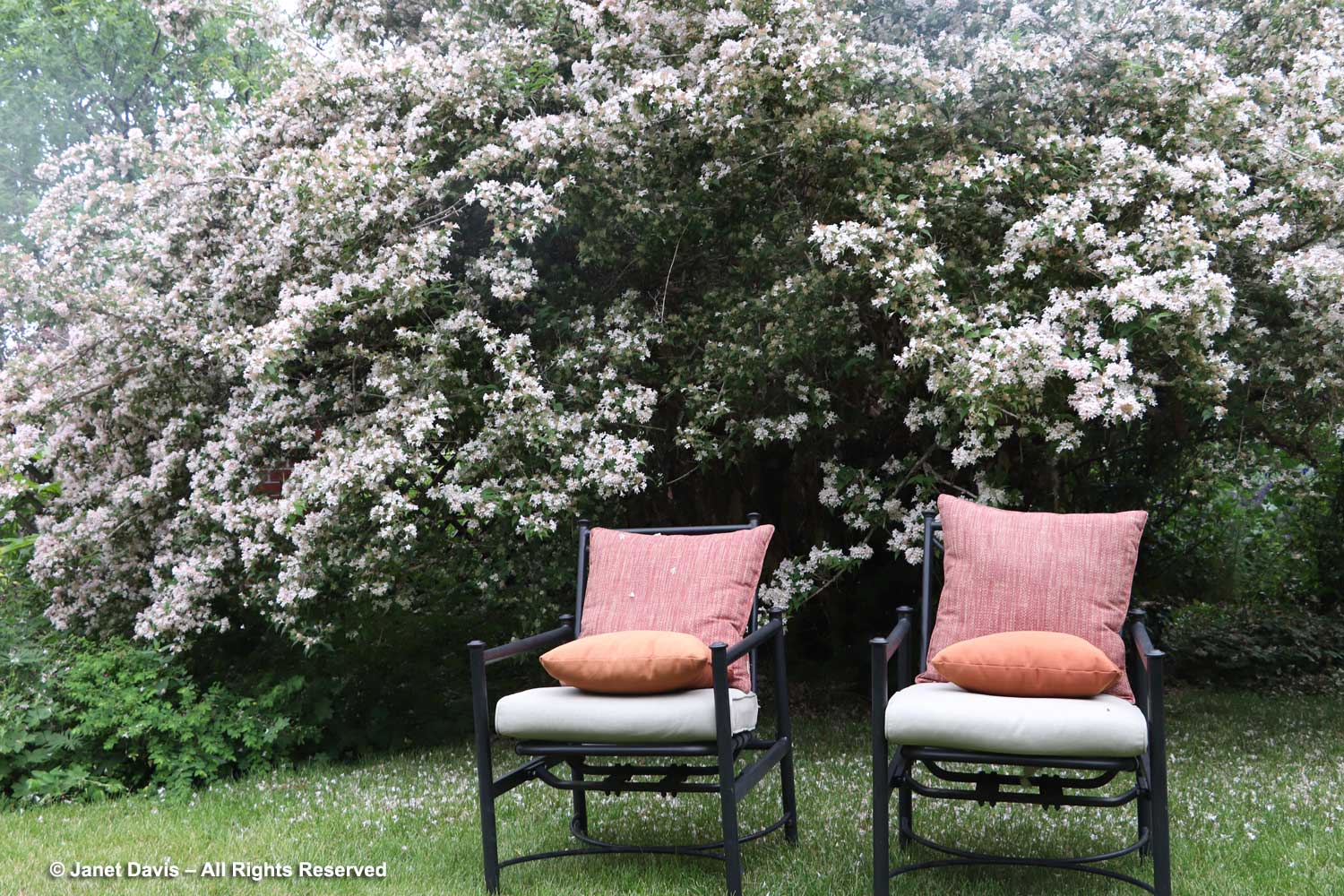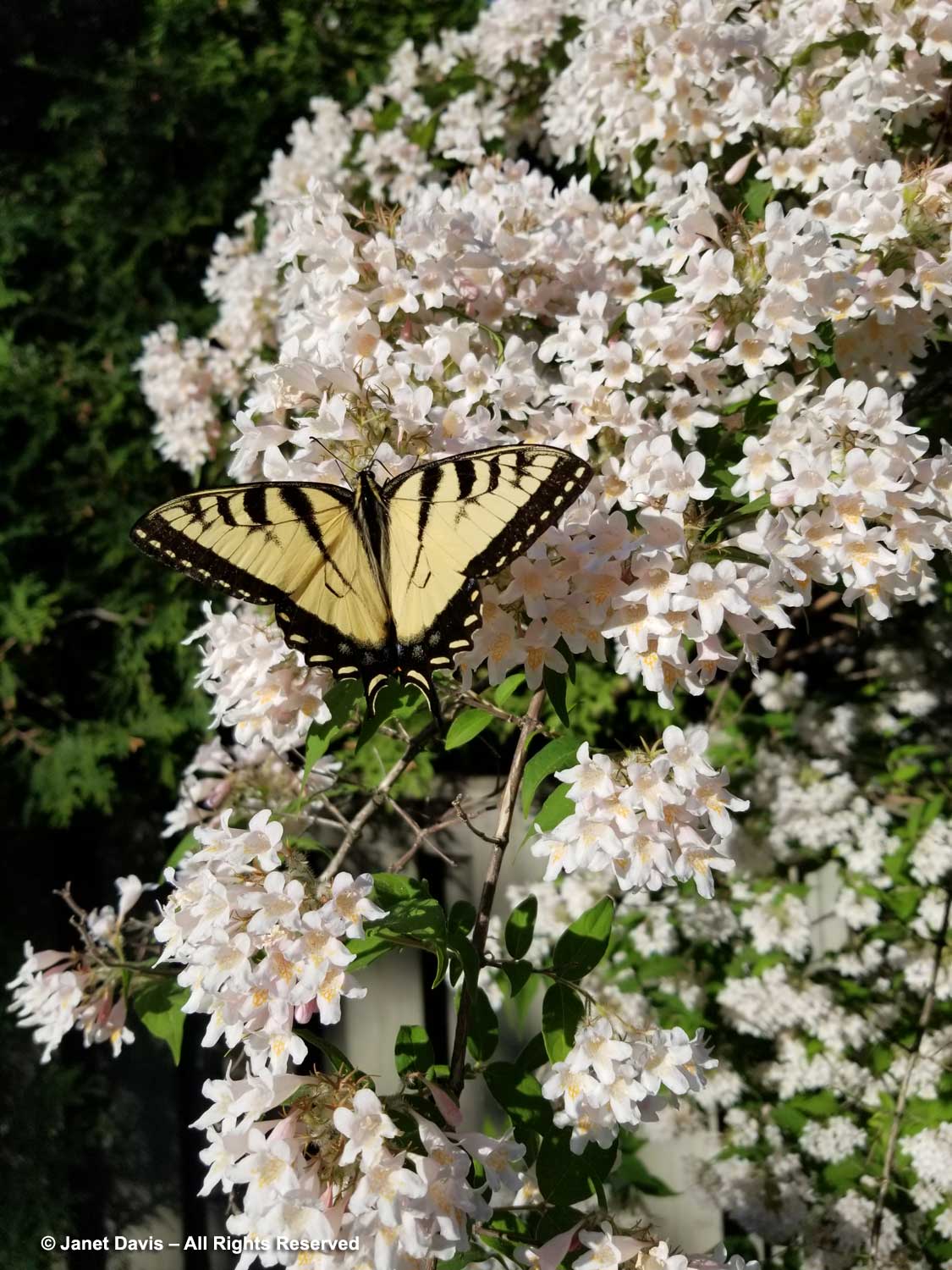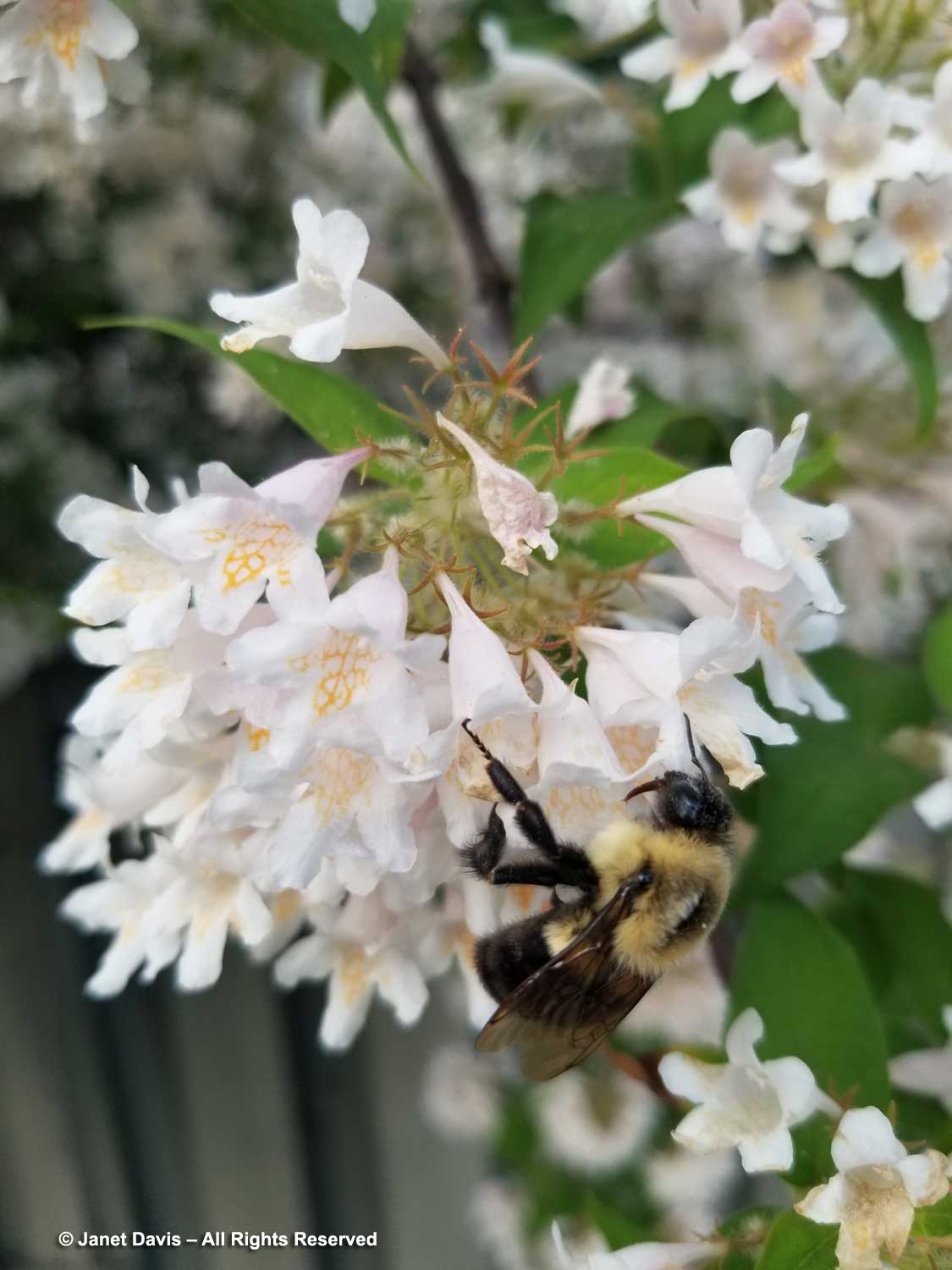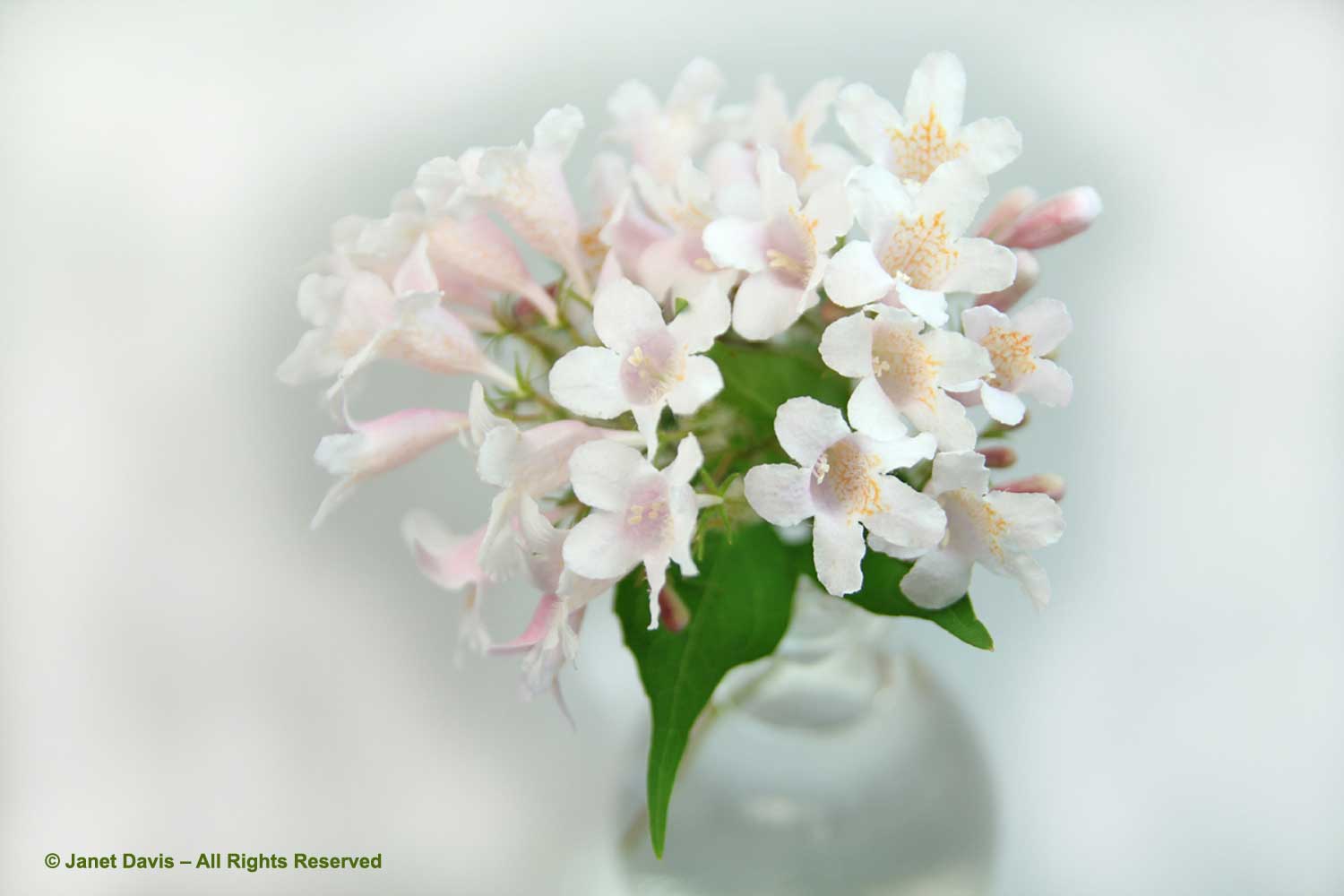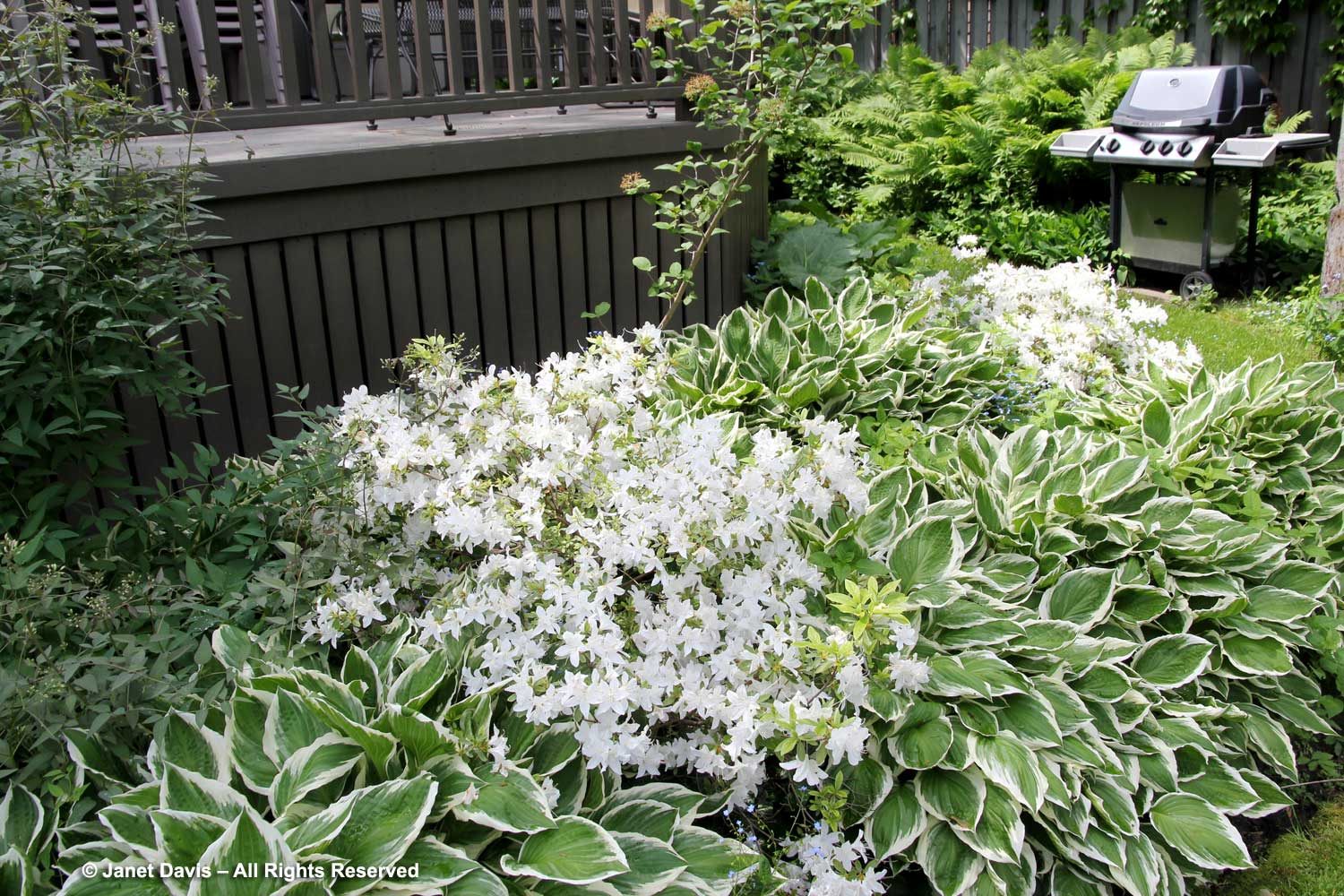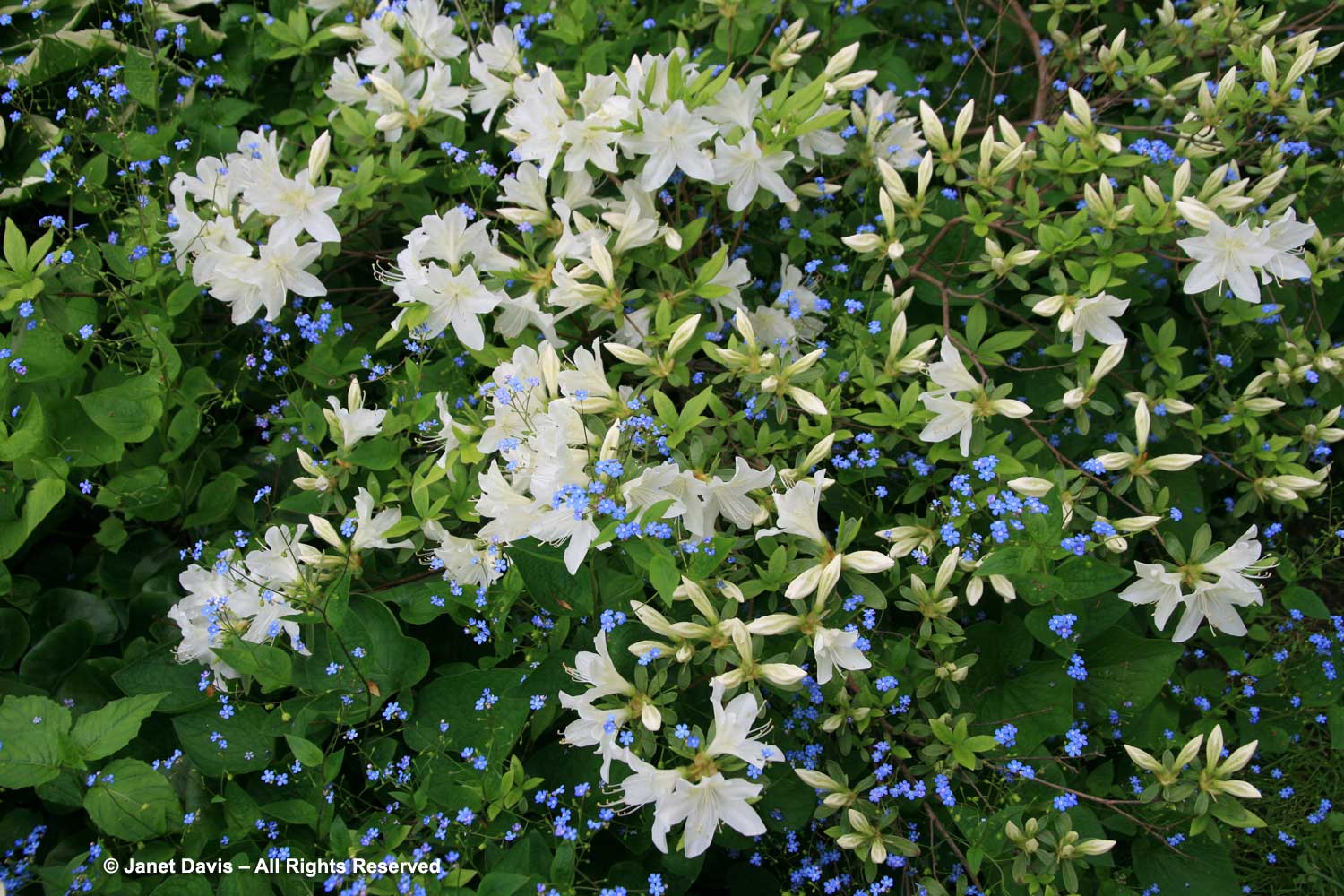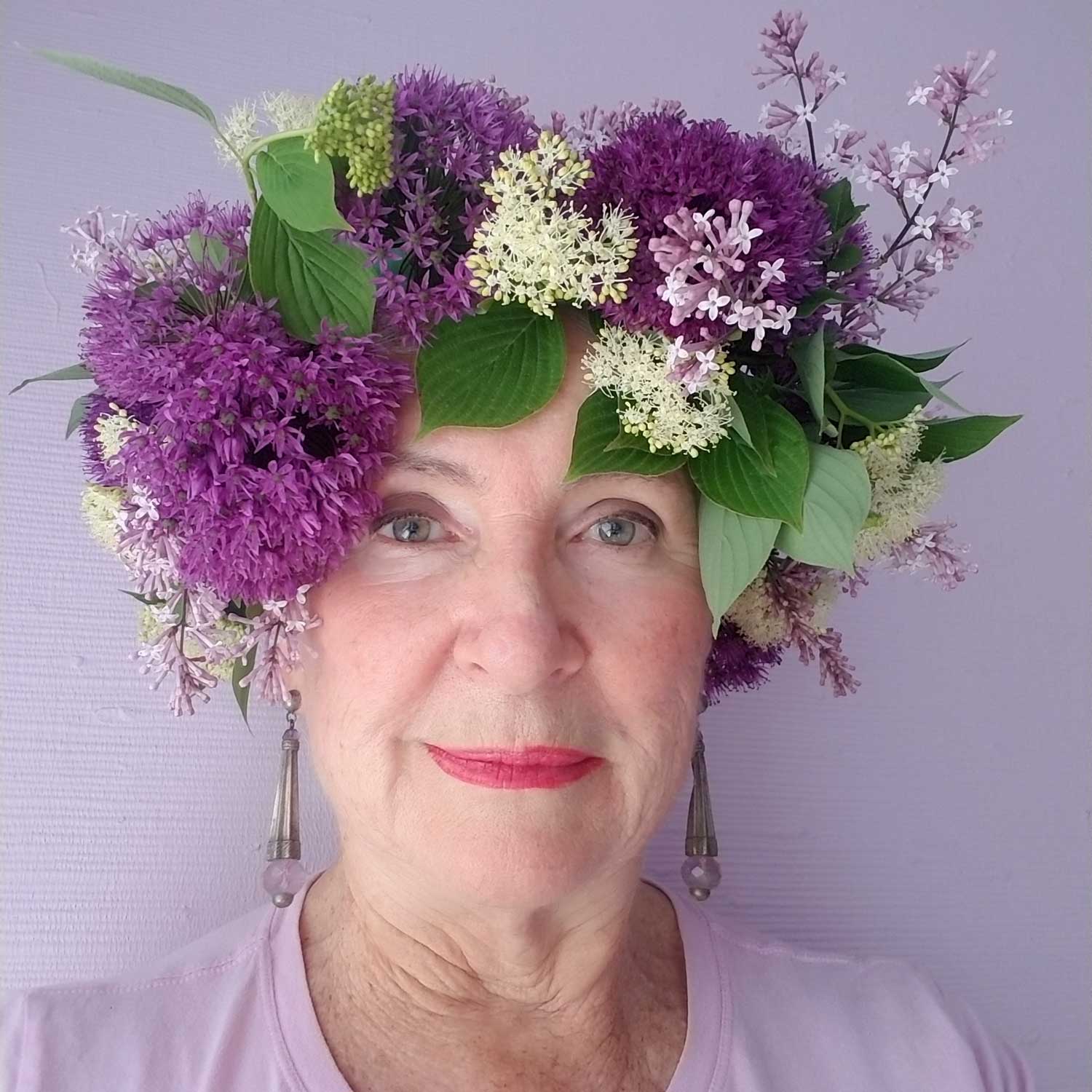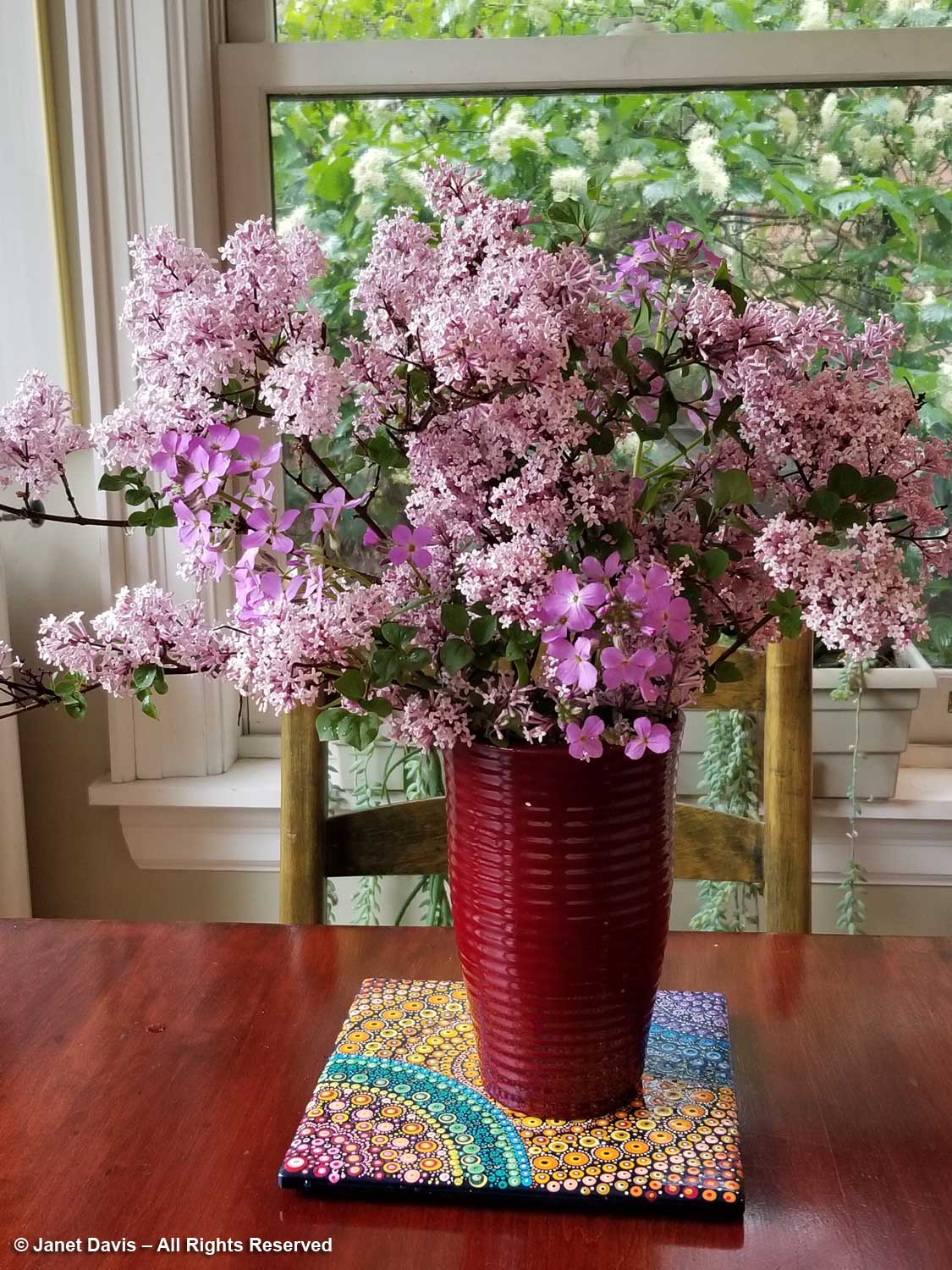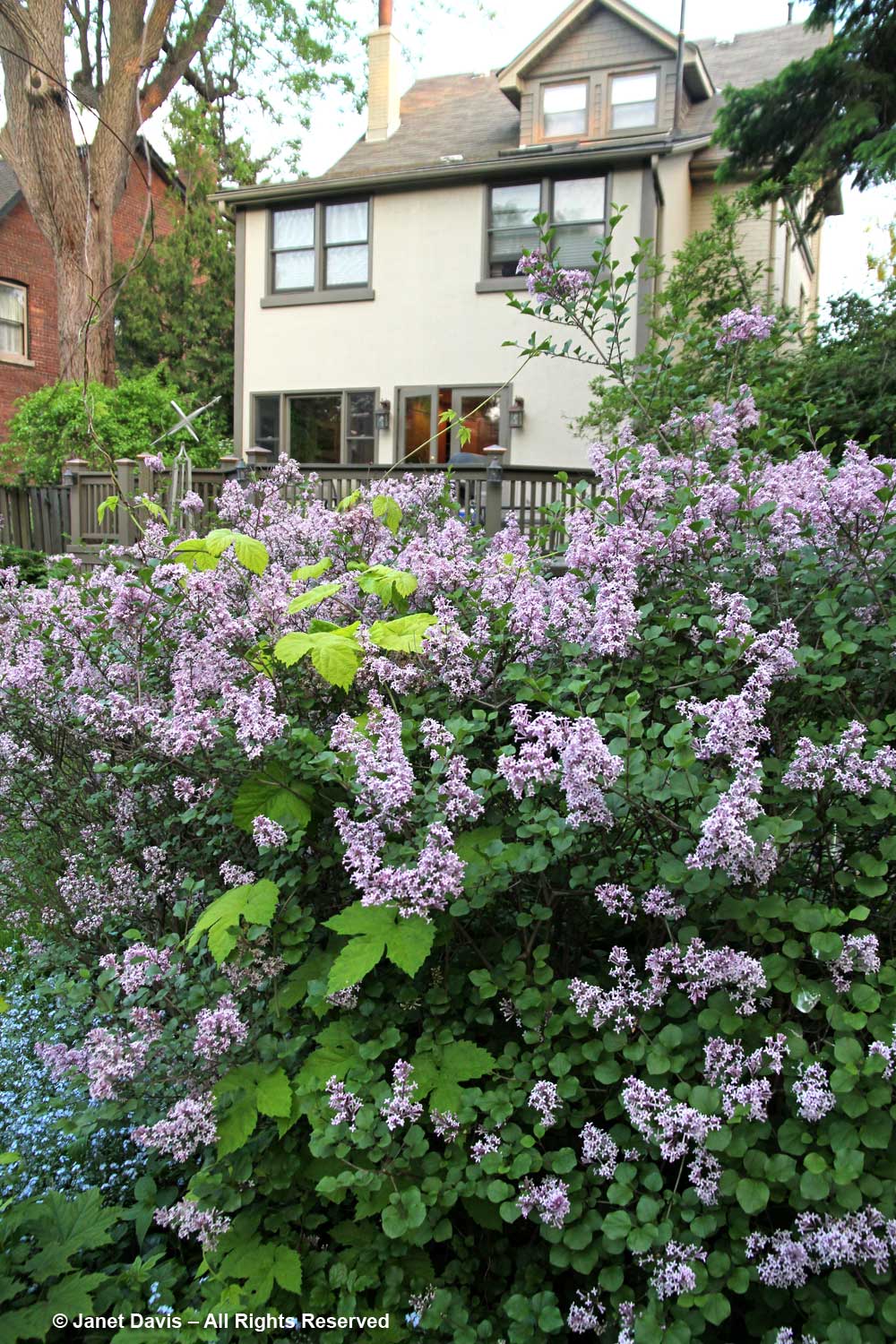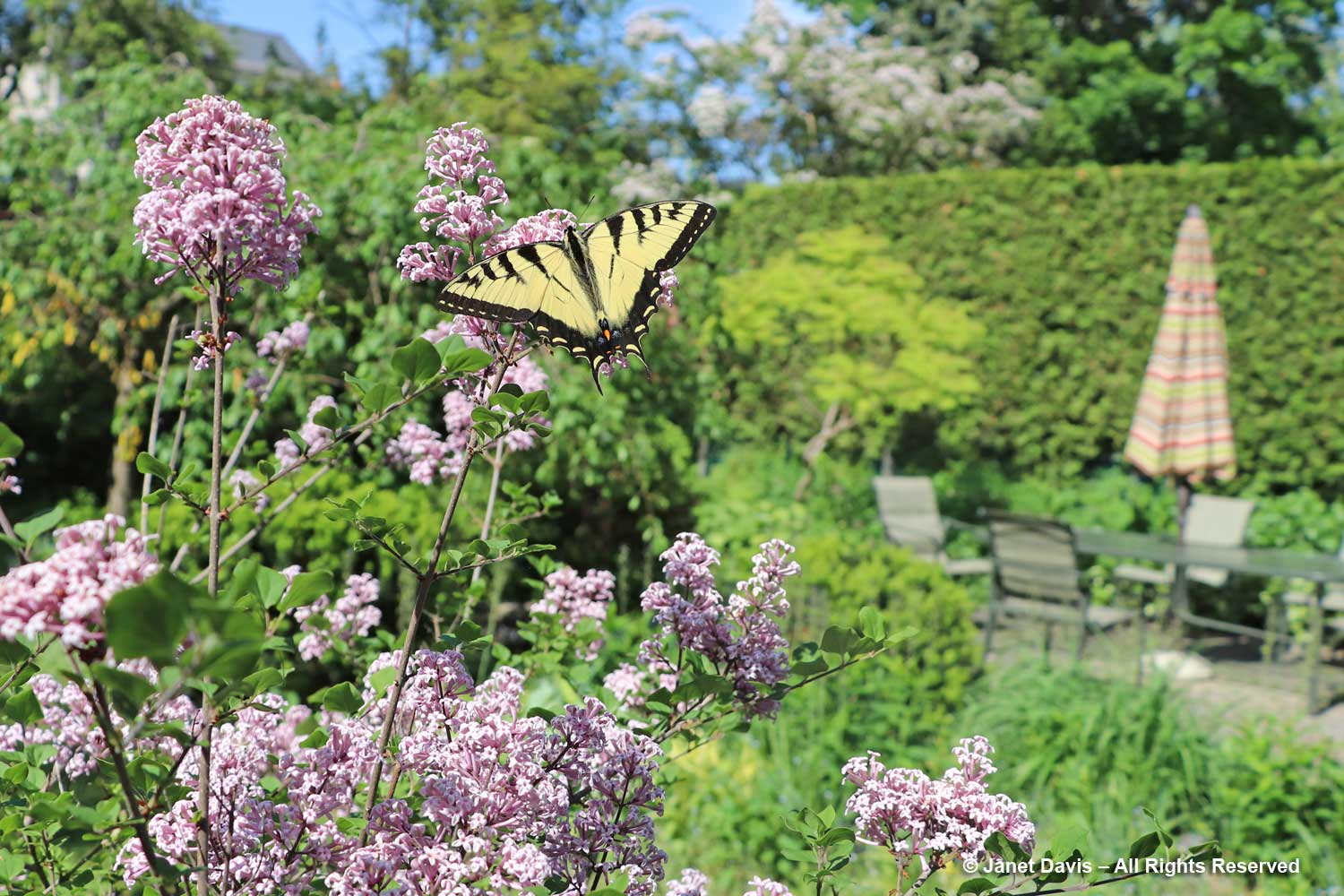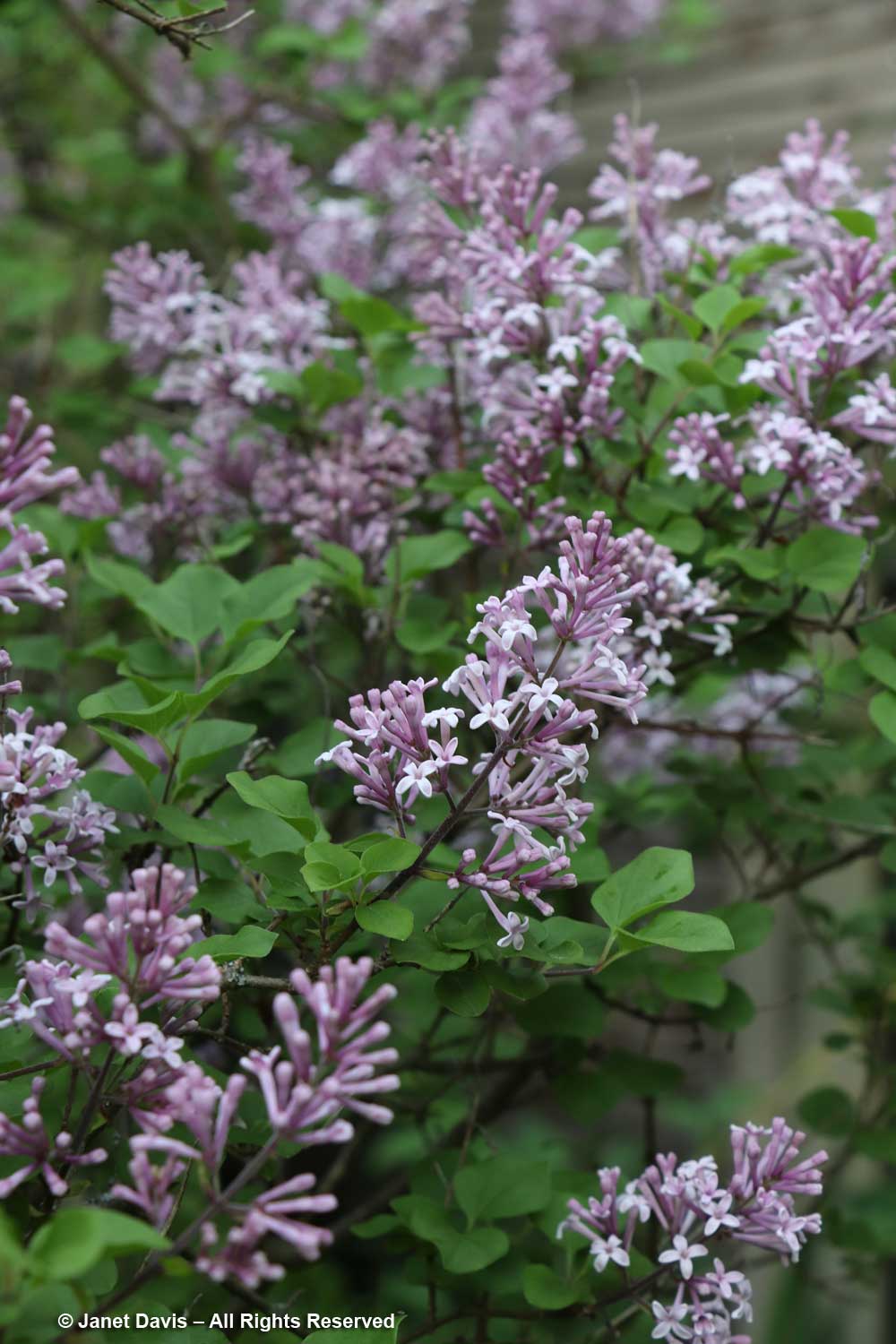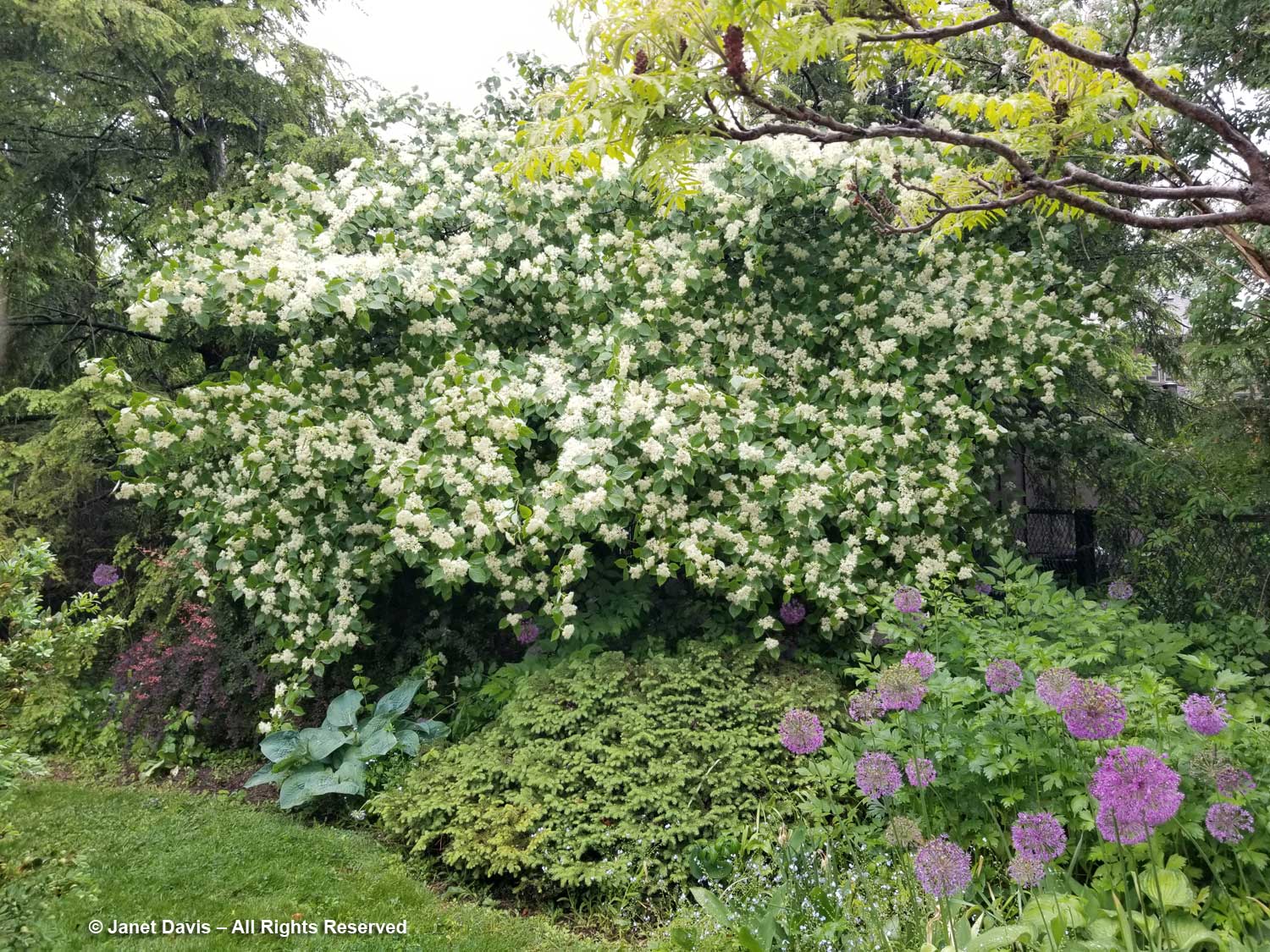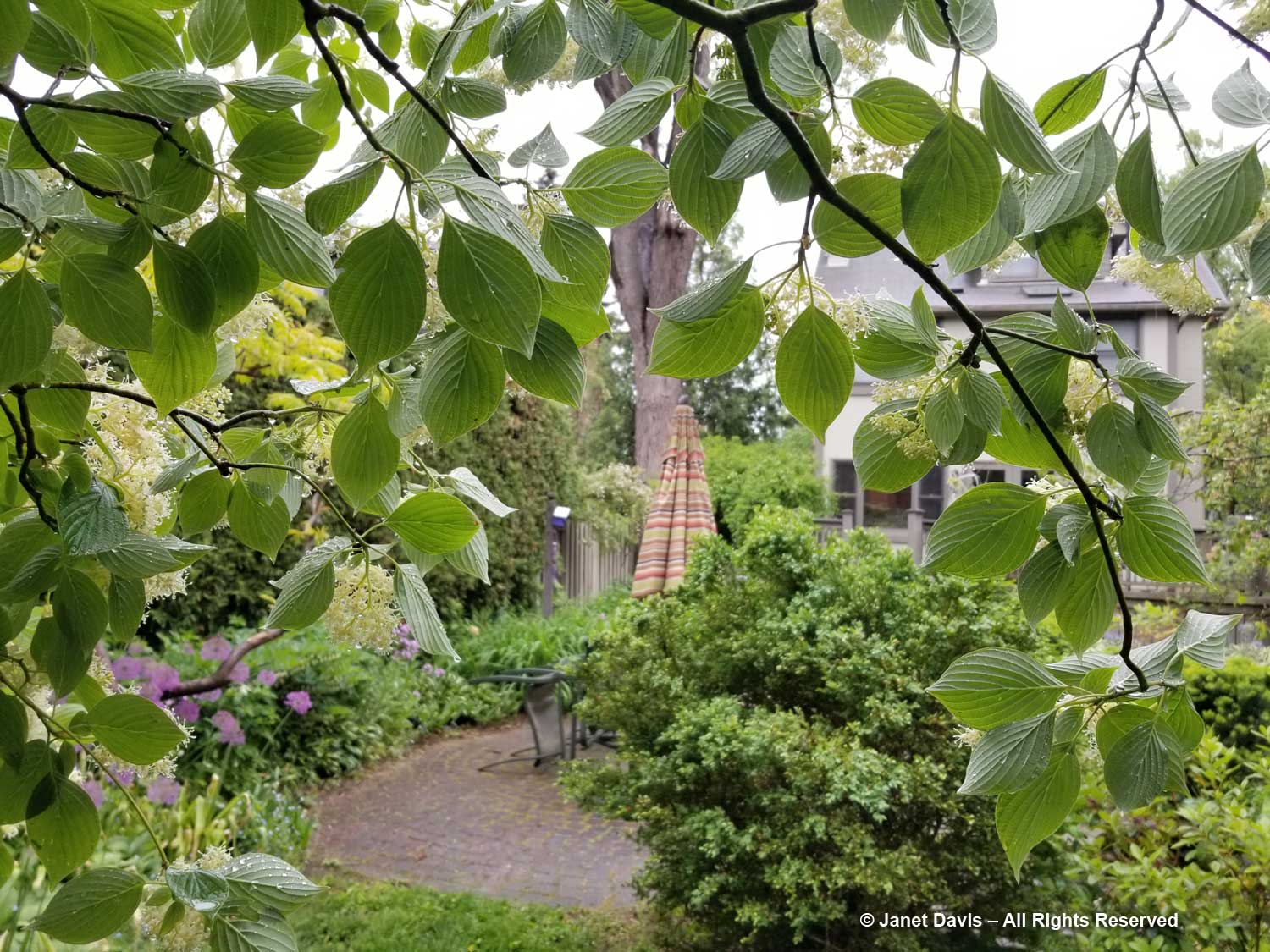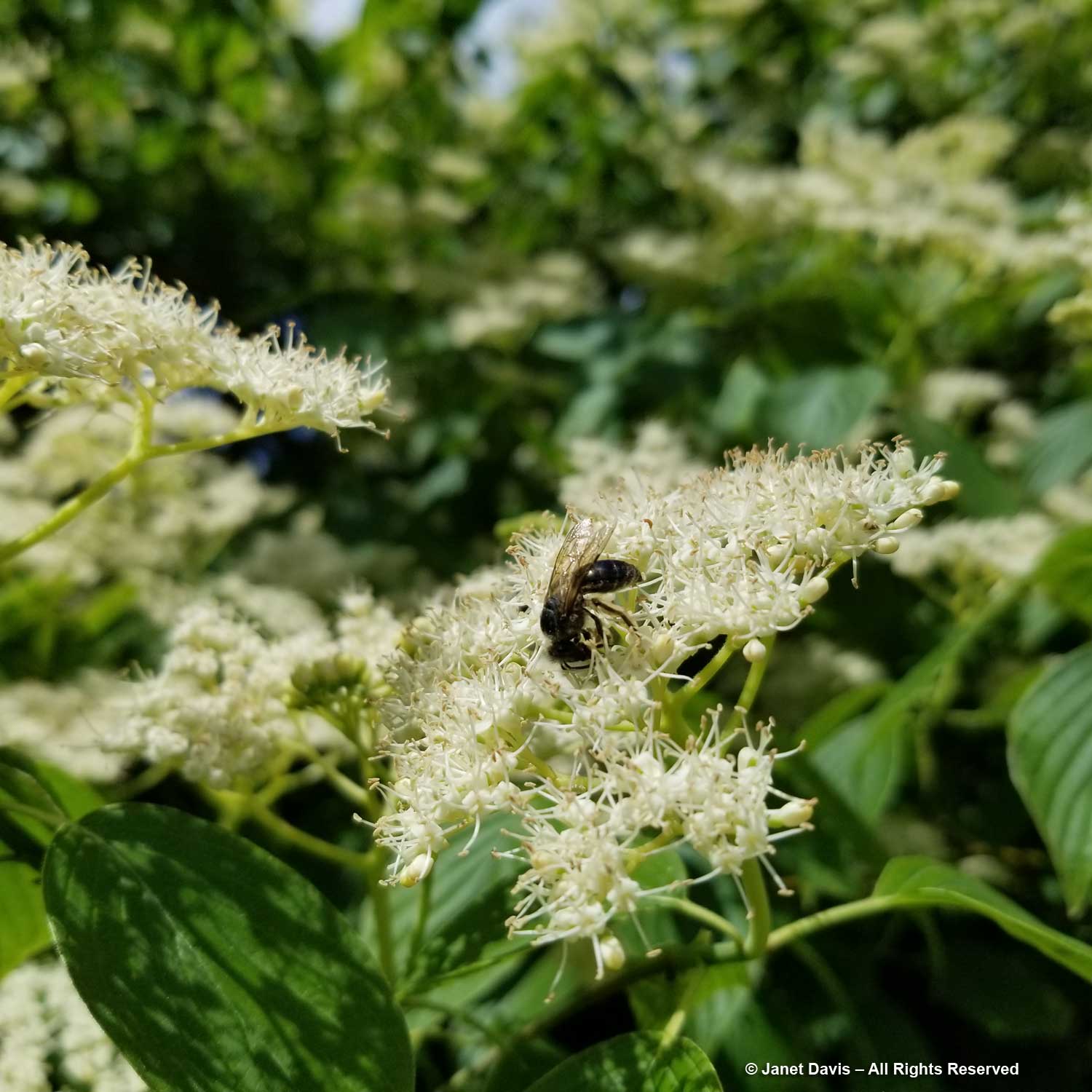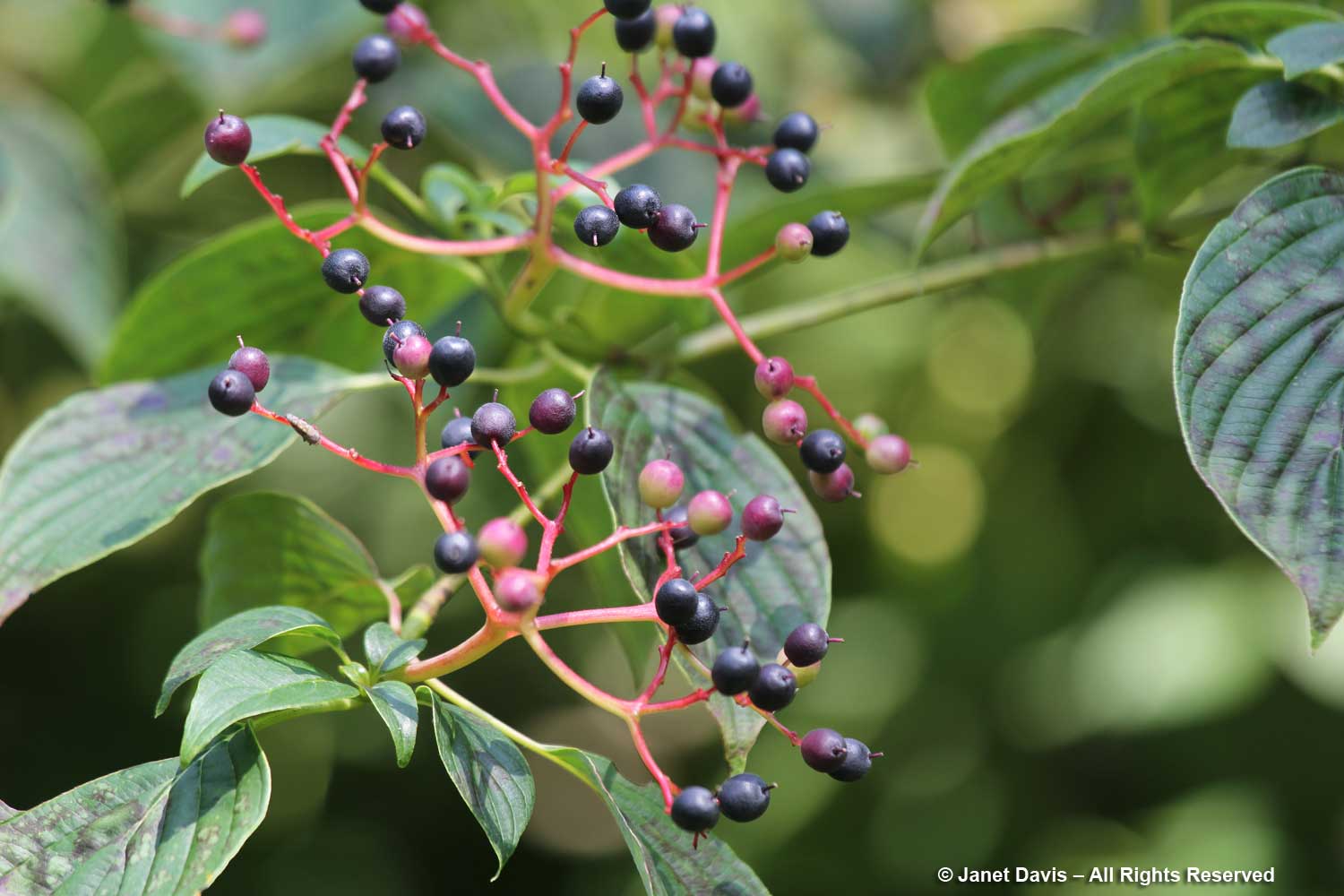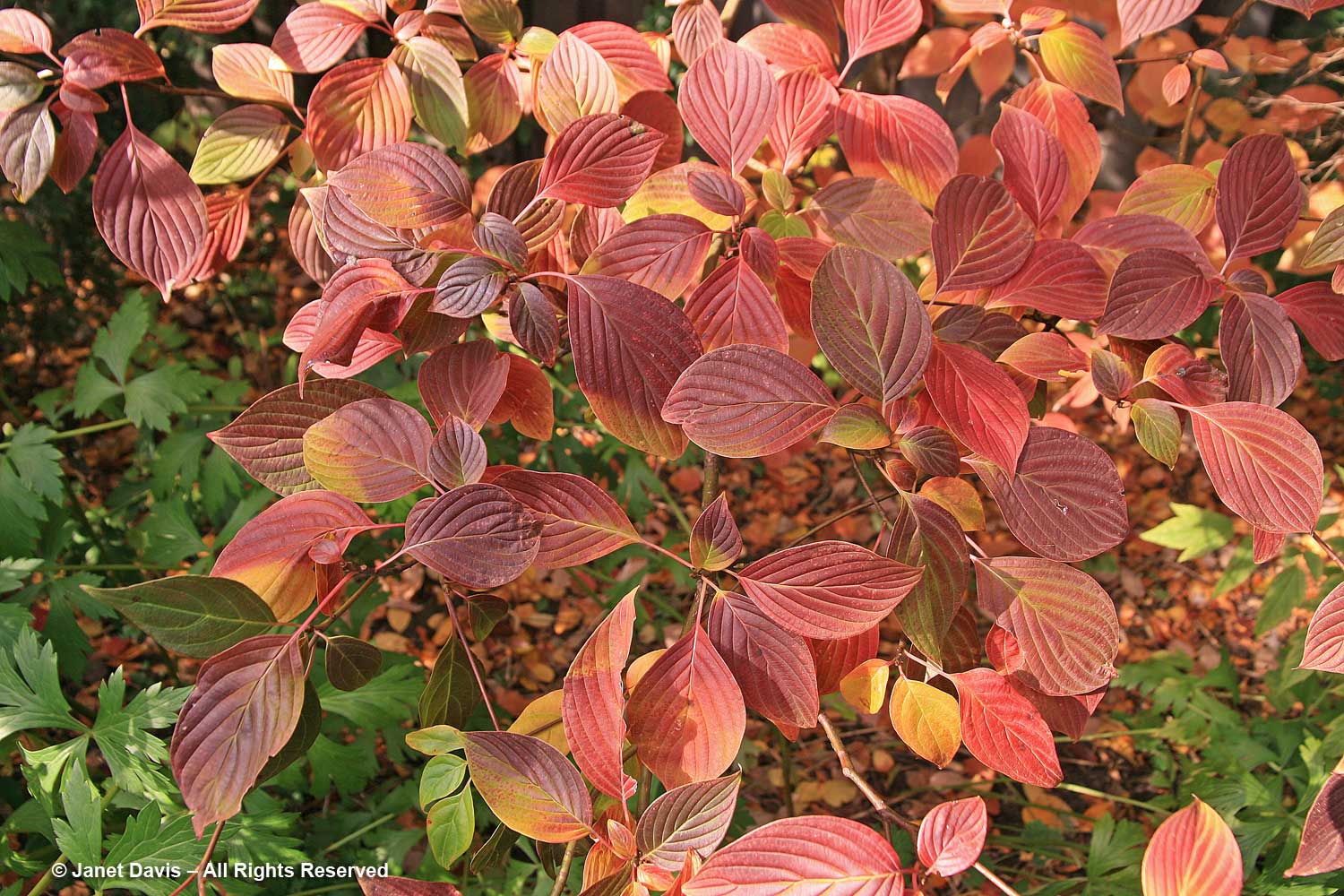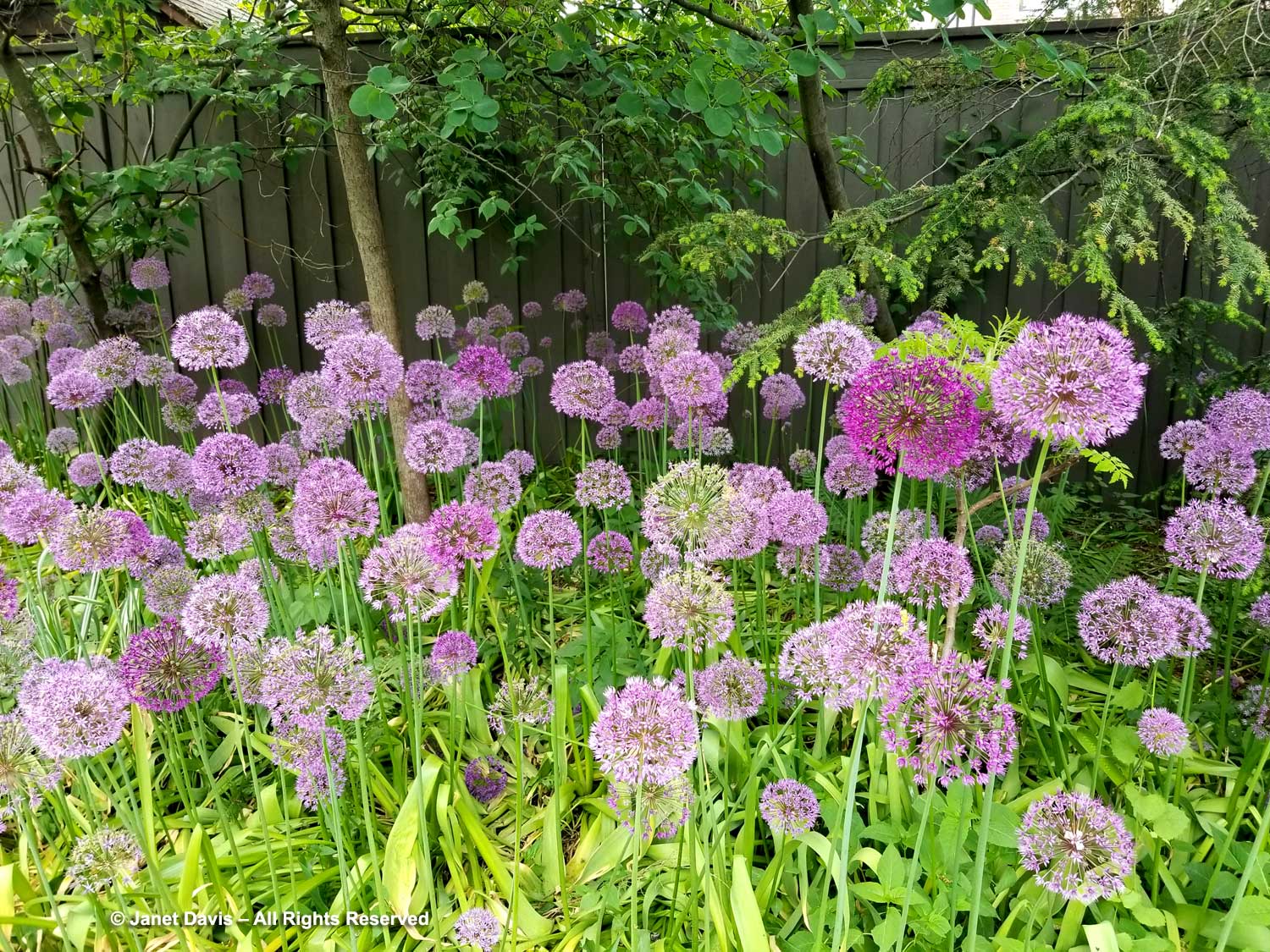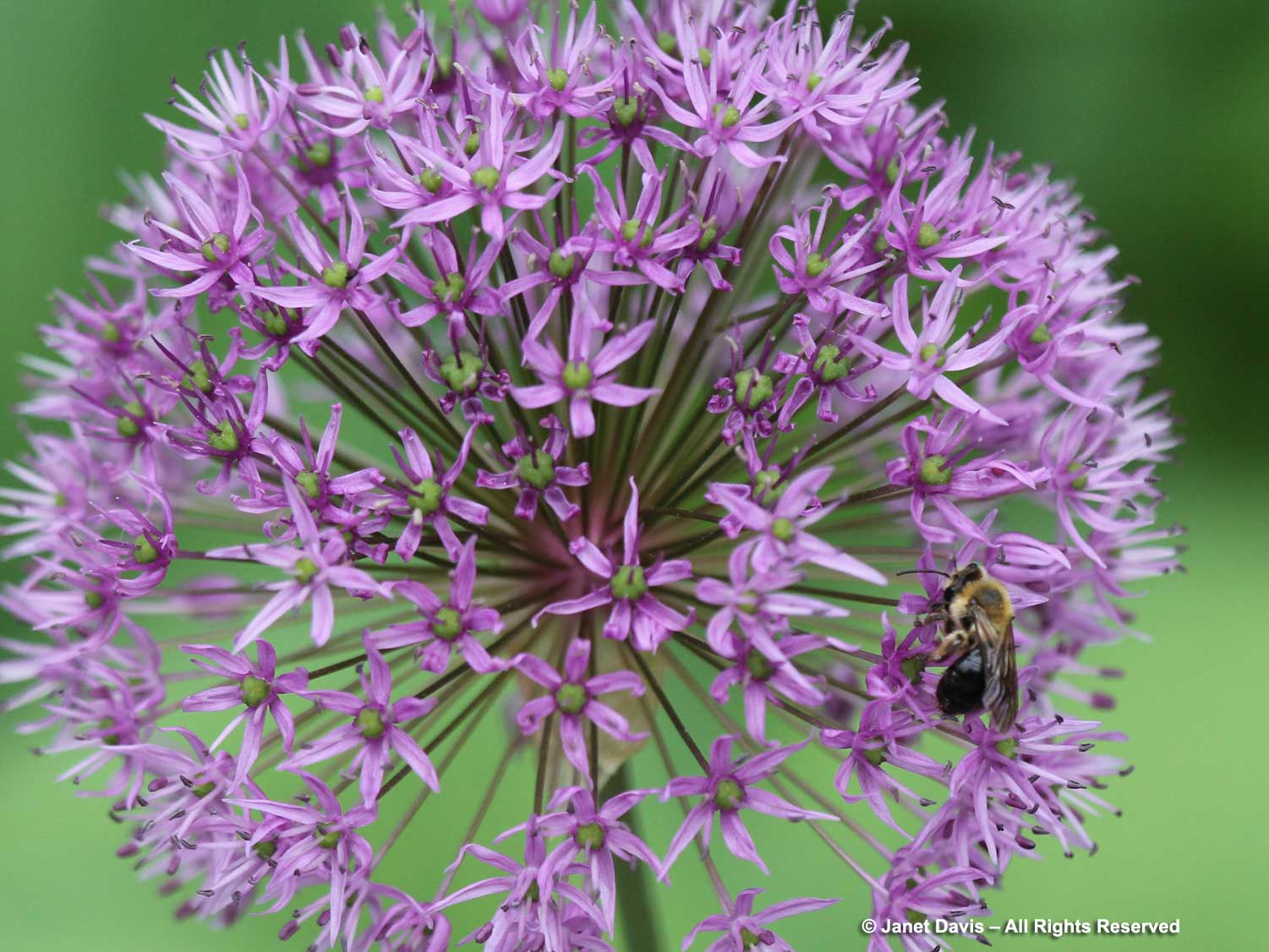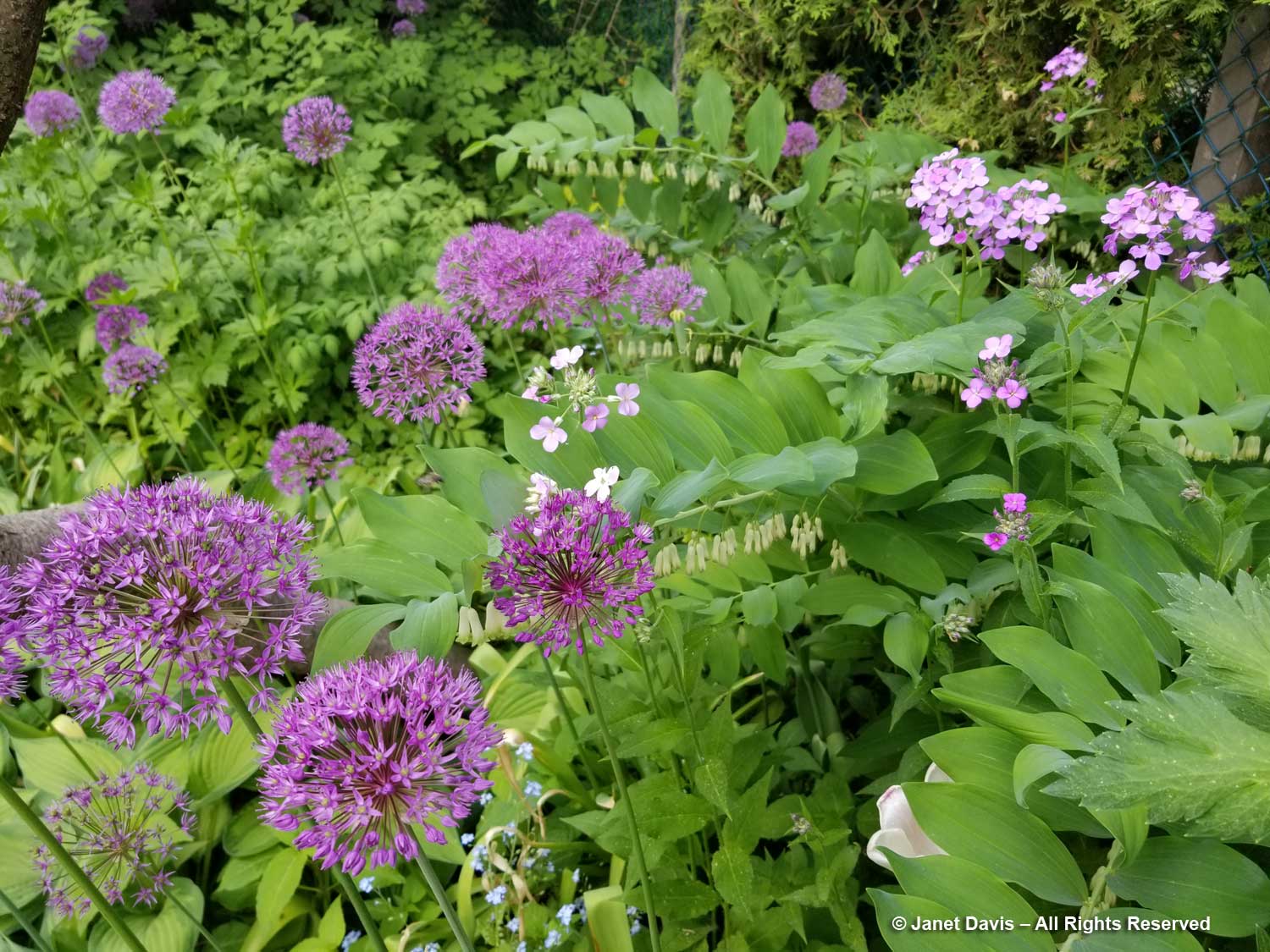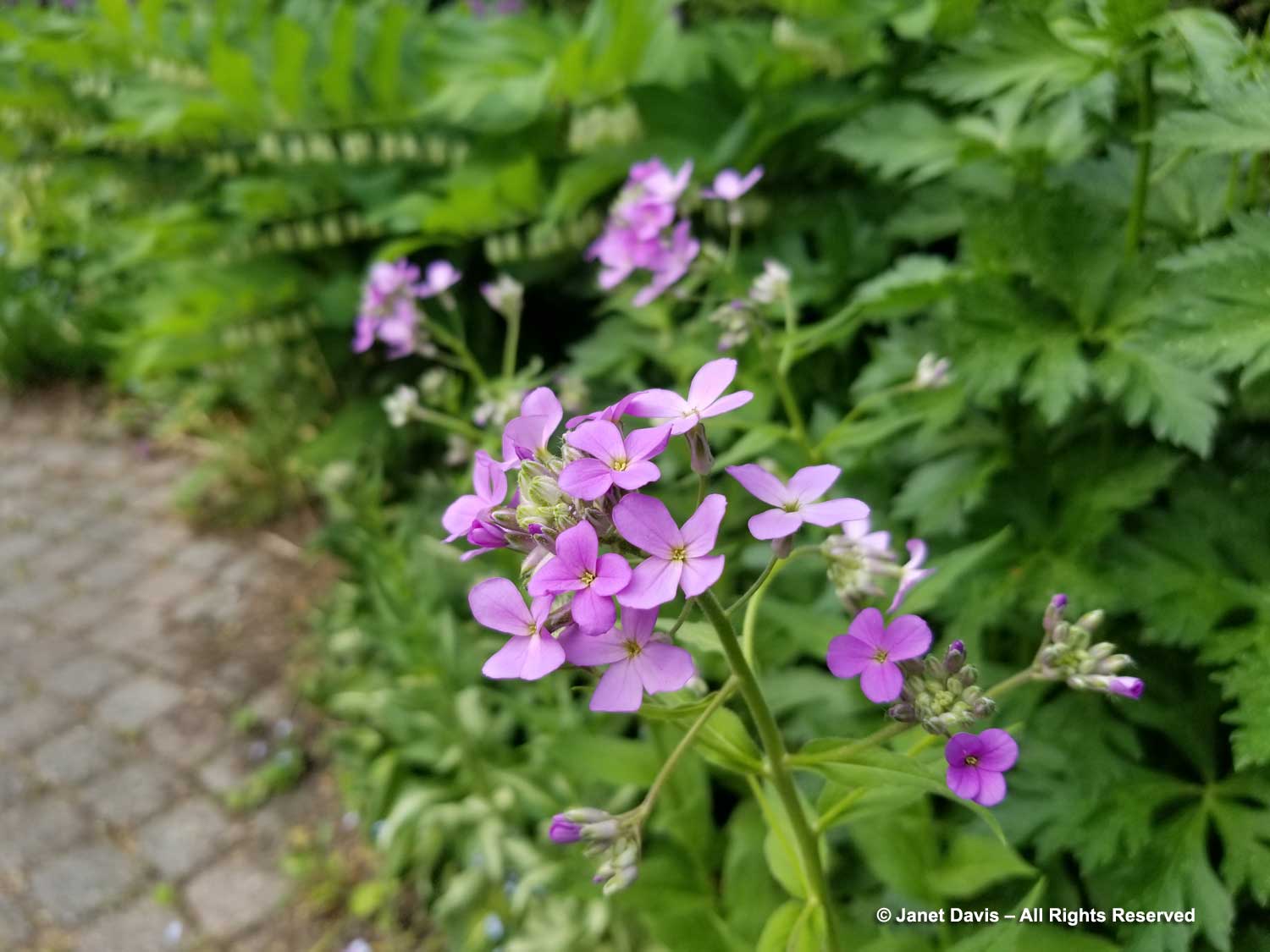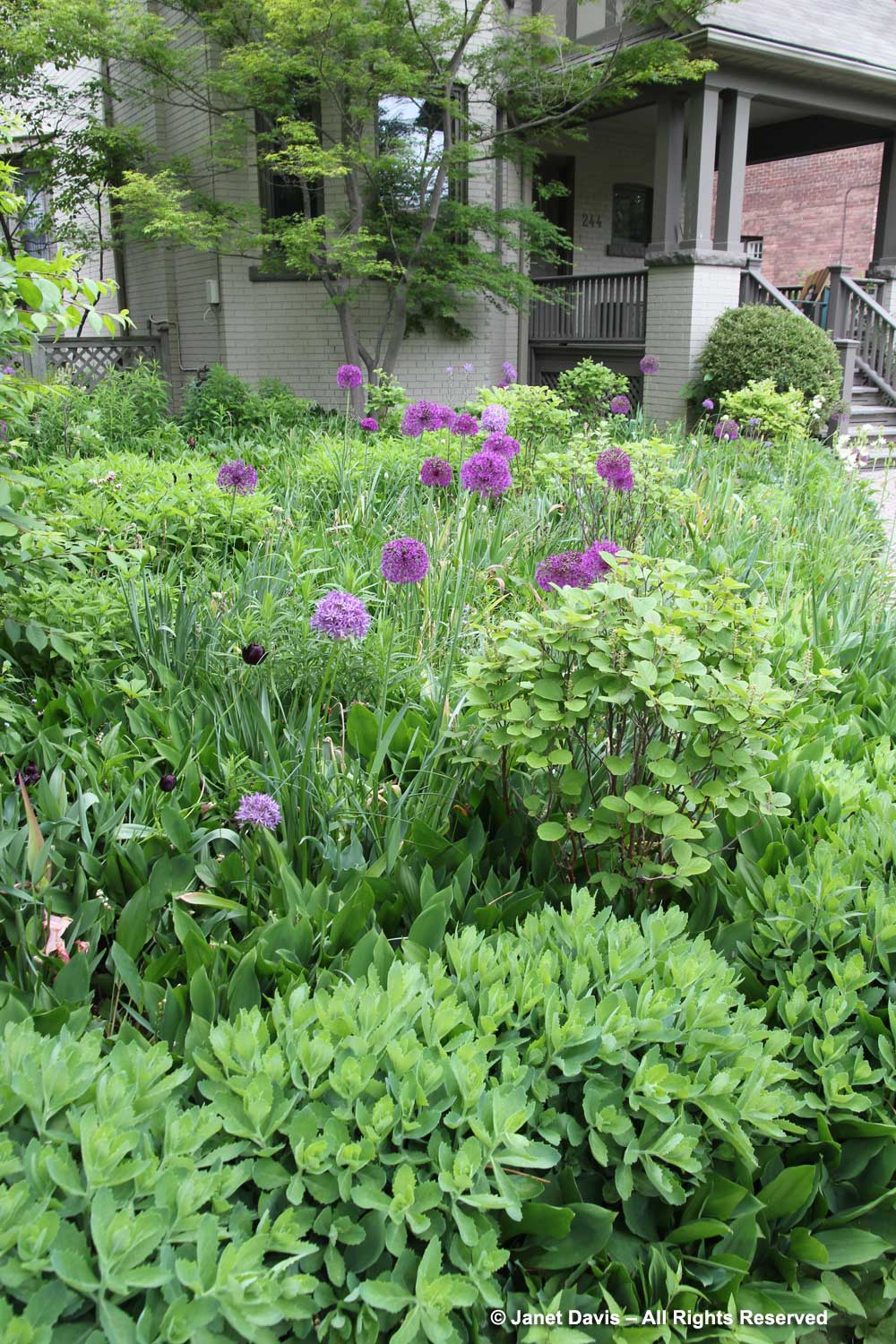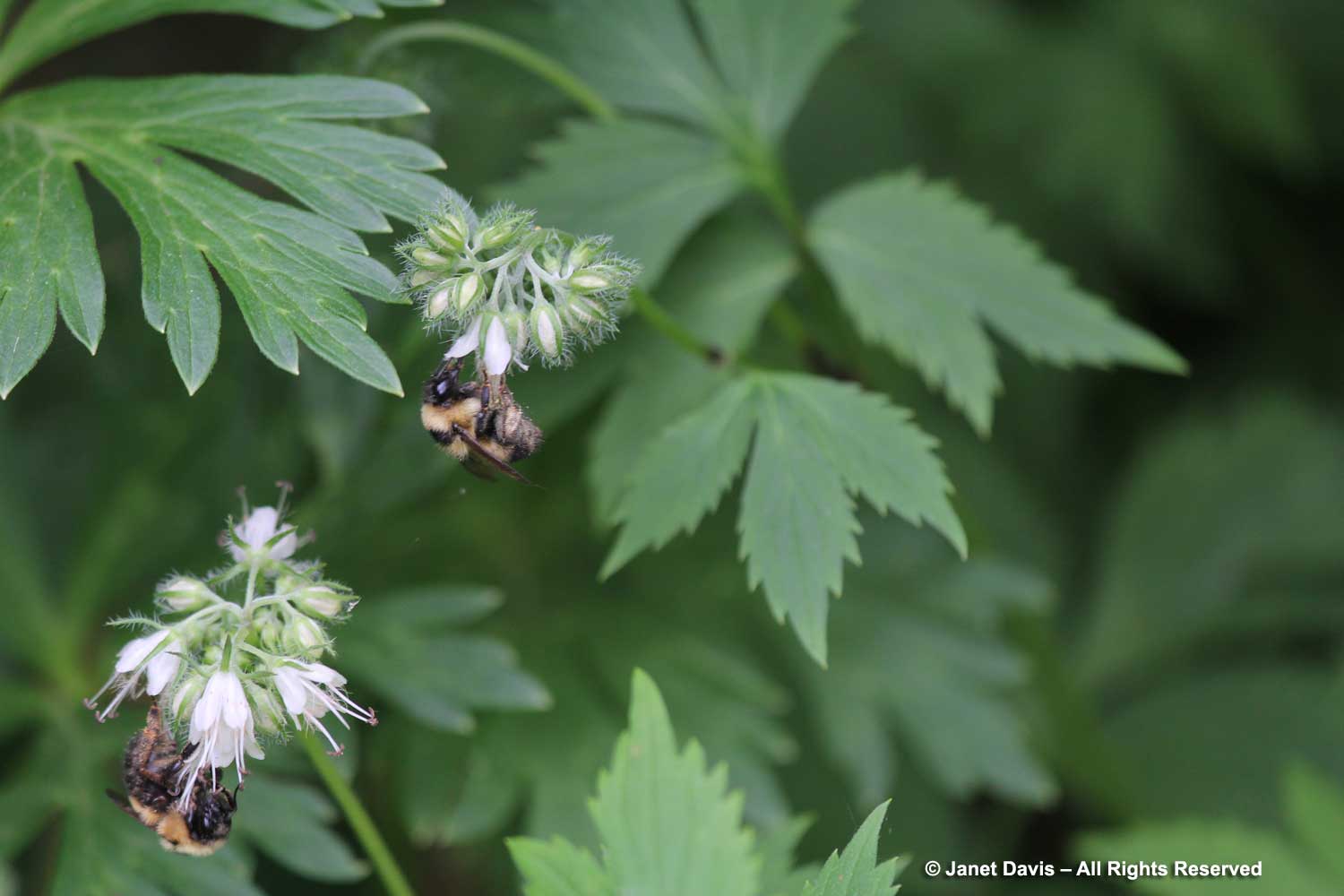Within days of the summer solstice, the meadows and wildish garden areas at our cottage on Lake Muskoka north of Toronto have become spangled with flowers – not all of which I actually planted. Indeed, ‘weeds’ like pink musk mallow (Malva moschata), yellow birdsfoot trefoil (Lotus corniculatus) and everlasting pea (Lathyrus latifolius) are a fact of life here on Lake Muskoka; thankfully, most find it tough to compete with the rugged prairie perennials and grasses that I did plant. Nonetheless, they all manage to look lovely together in my 12th fairy crown, which includes native foxglove penstemon (Penstemon digitalis), its steadfast companion native lance-leaved coreopsis (Coreopsis lanceolata), small yellow foxglove (Digitalis lutea), annual daisy fleabane (Erigeron annuus) and the ripe fruit of native American red elderberry (Sambucus pubens).

It’s a good time of year to craft bouquets from the meadow.
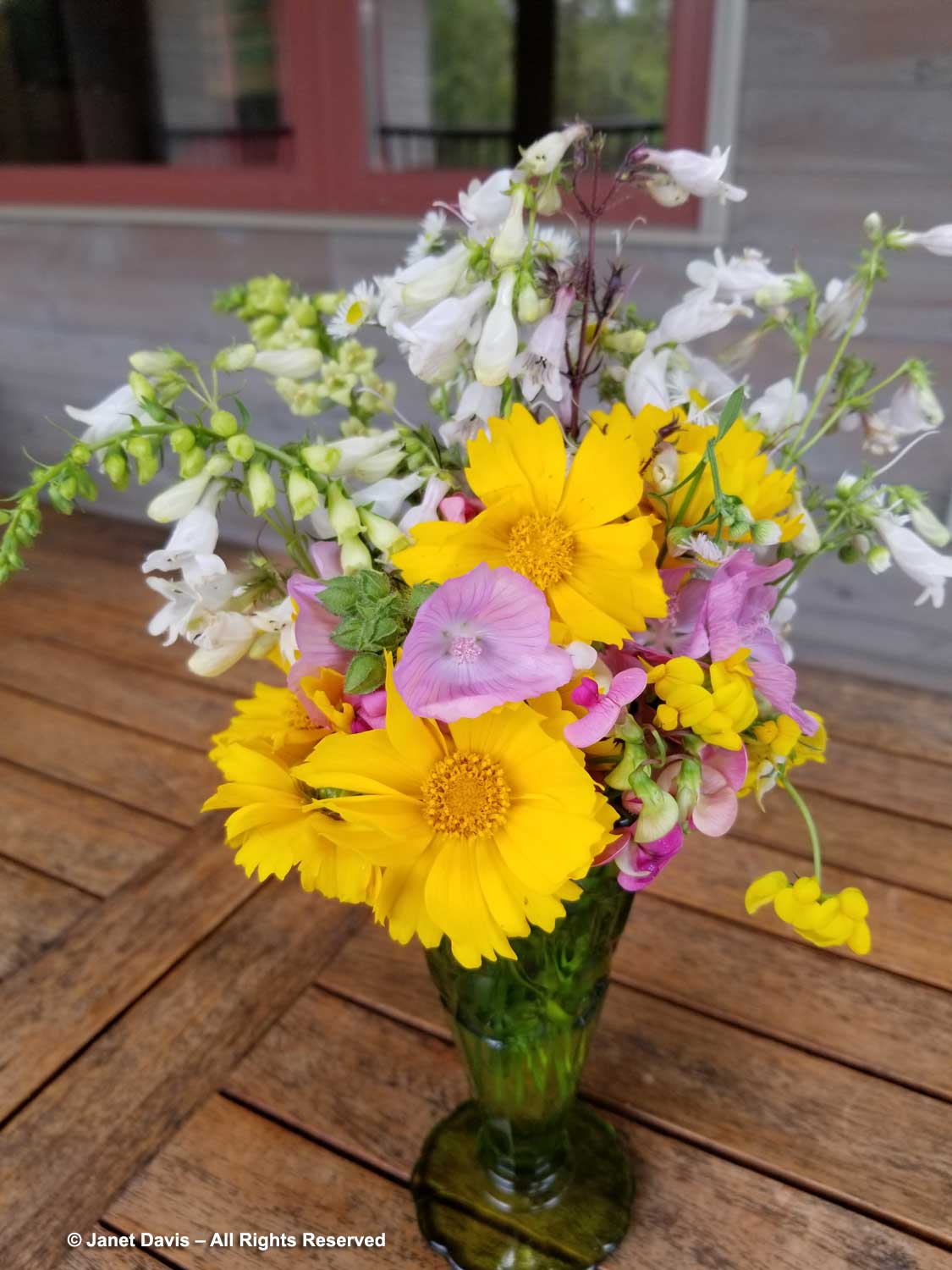
Foxglove penstemon (Penstemon digitalis) was one of the first plants I sowed at the lake and it remains one of my favorites.
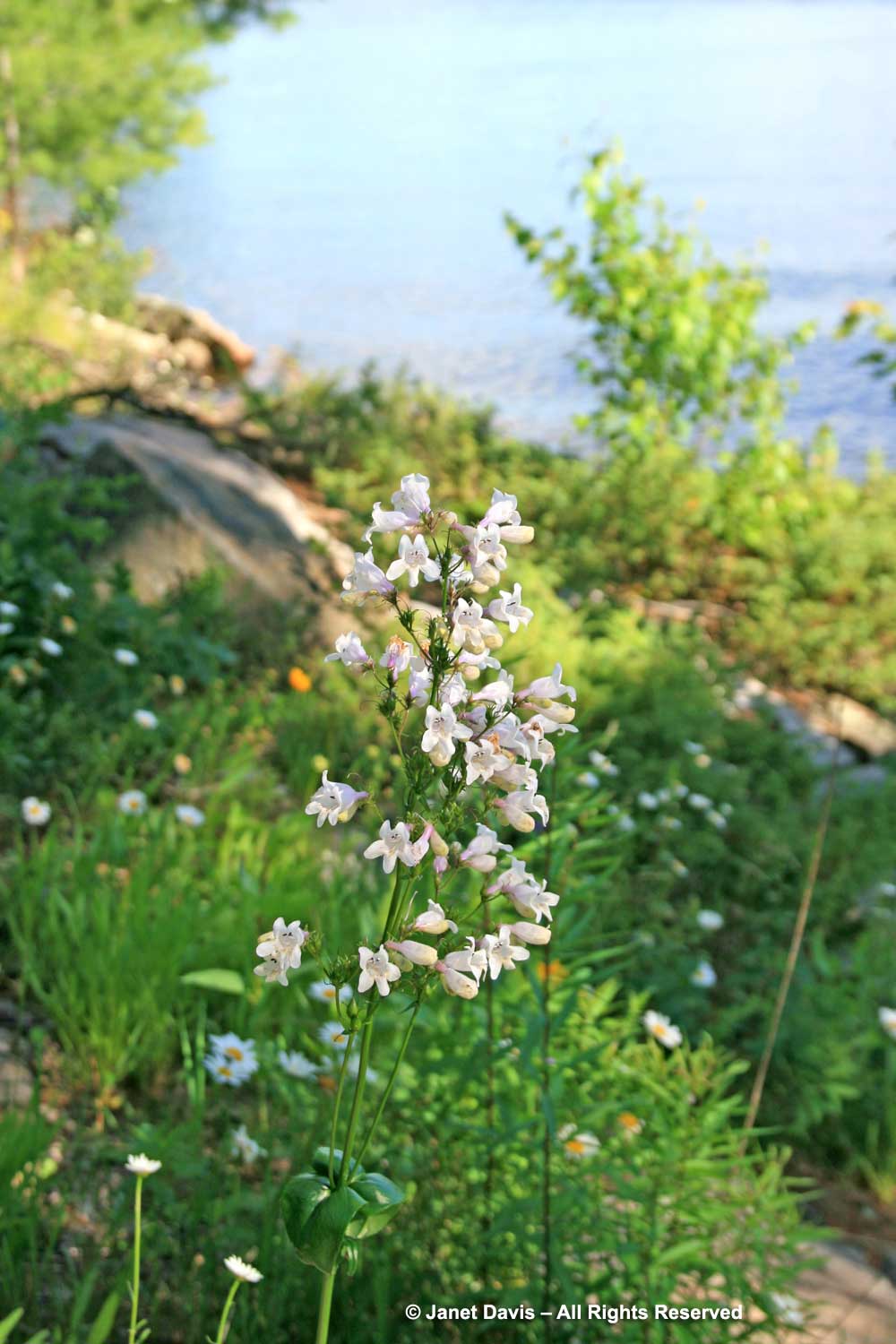
Ultra-hardy, it is one of just three penstemon species native to Ontario; it is also native to Minnesota and other Great Lakes states. Though there are red-leafed commercial cultivars like ‘Husker Red’ and some with dark leaves, stems and pinkish flowers like ‘Dark Towers’, I prefer the natural, red-stemmed variations that occur in a seed-grown population, like the one below
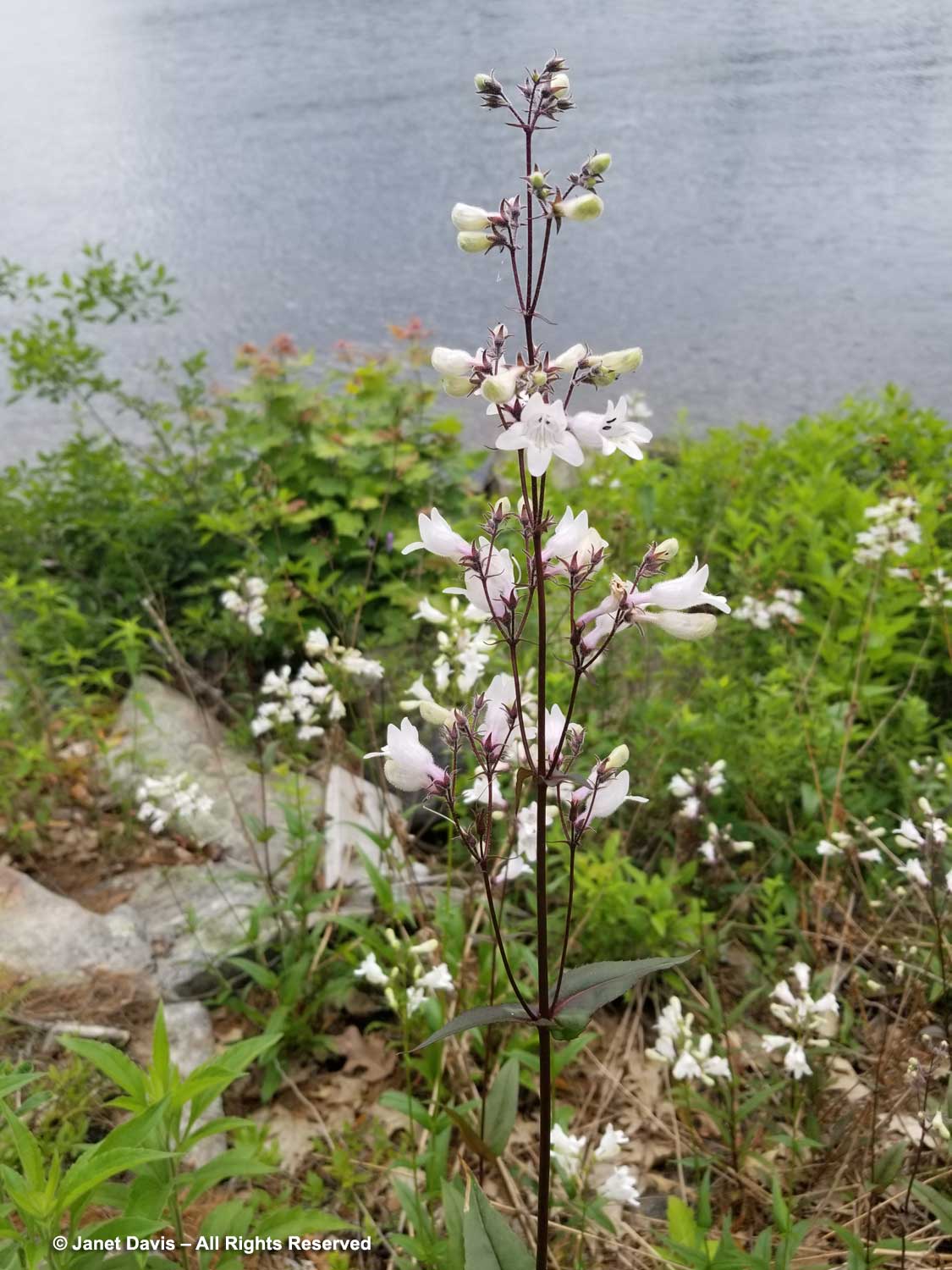
Best of all, it is perfectly happy in the dry, sandy, gravelly soil on our property where it survives drought, heat and extreme cold winter temperatures, often devoid of snow cover. It flowers at the same time, and in the same conditions, as lanceleaf coreopsis. Here they are at the lakeshore…
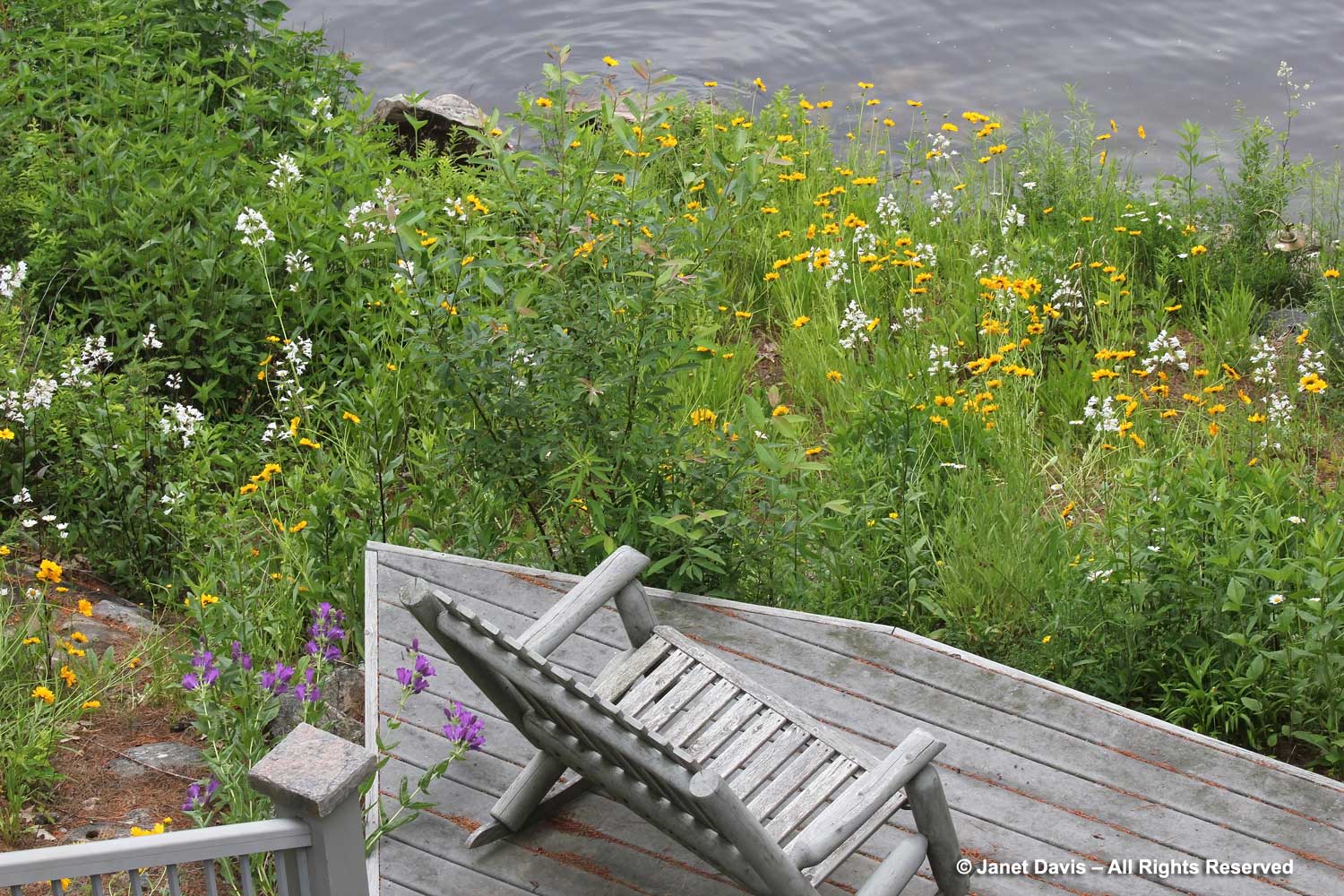
…. and also behind our cottage this June.
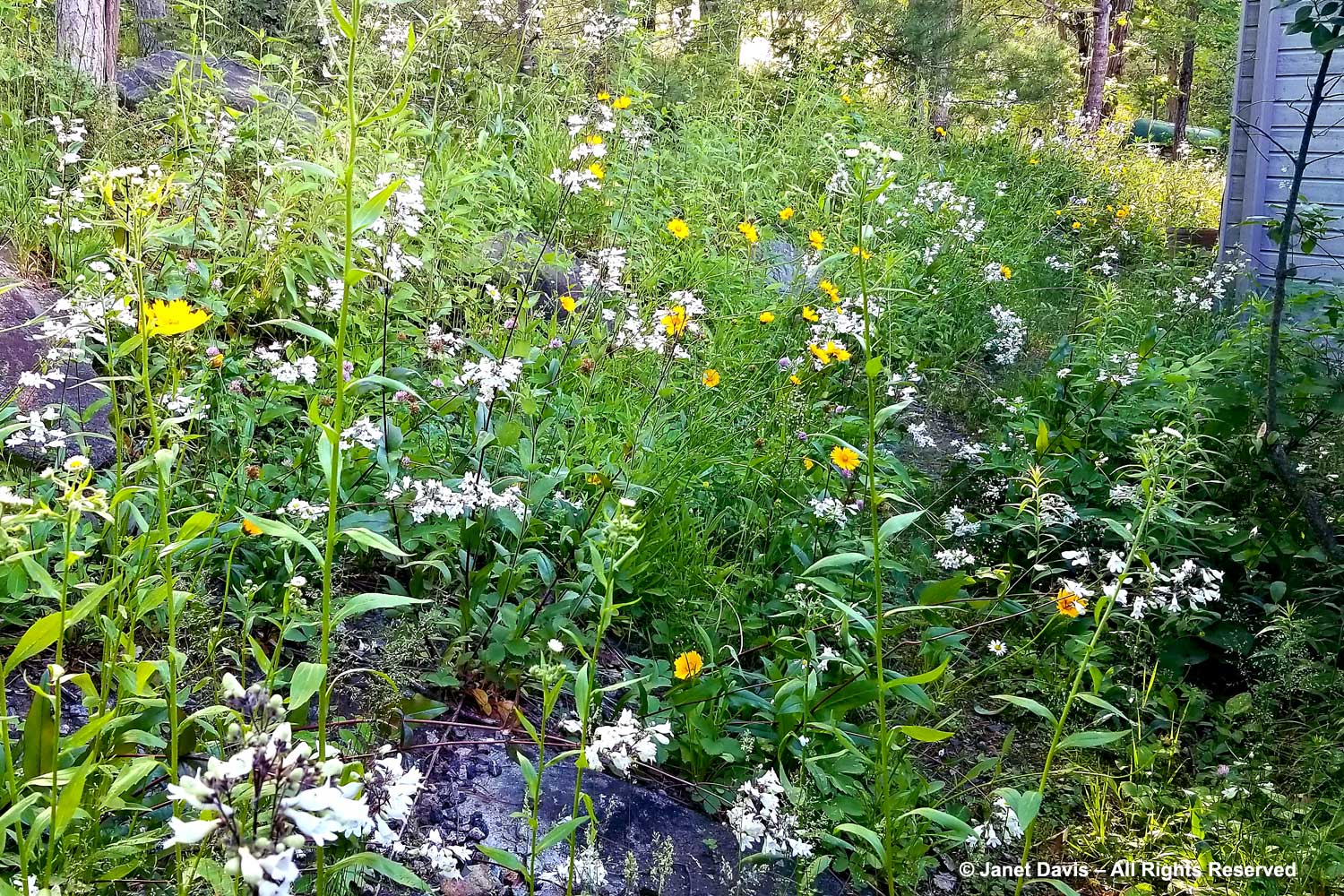
Foxglove penstemon’s 2-3-foot (60-90 cm) spikes topped with bell-shaped, lightly-scented, white flowers in early summer are highly attractive to bumble bees, hummingbird clearwing moths and hummingbirds.
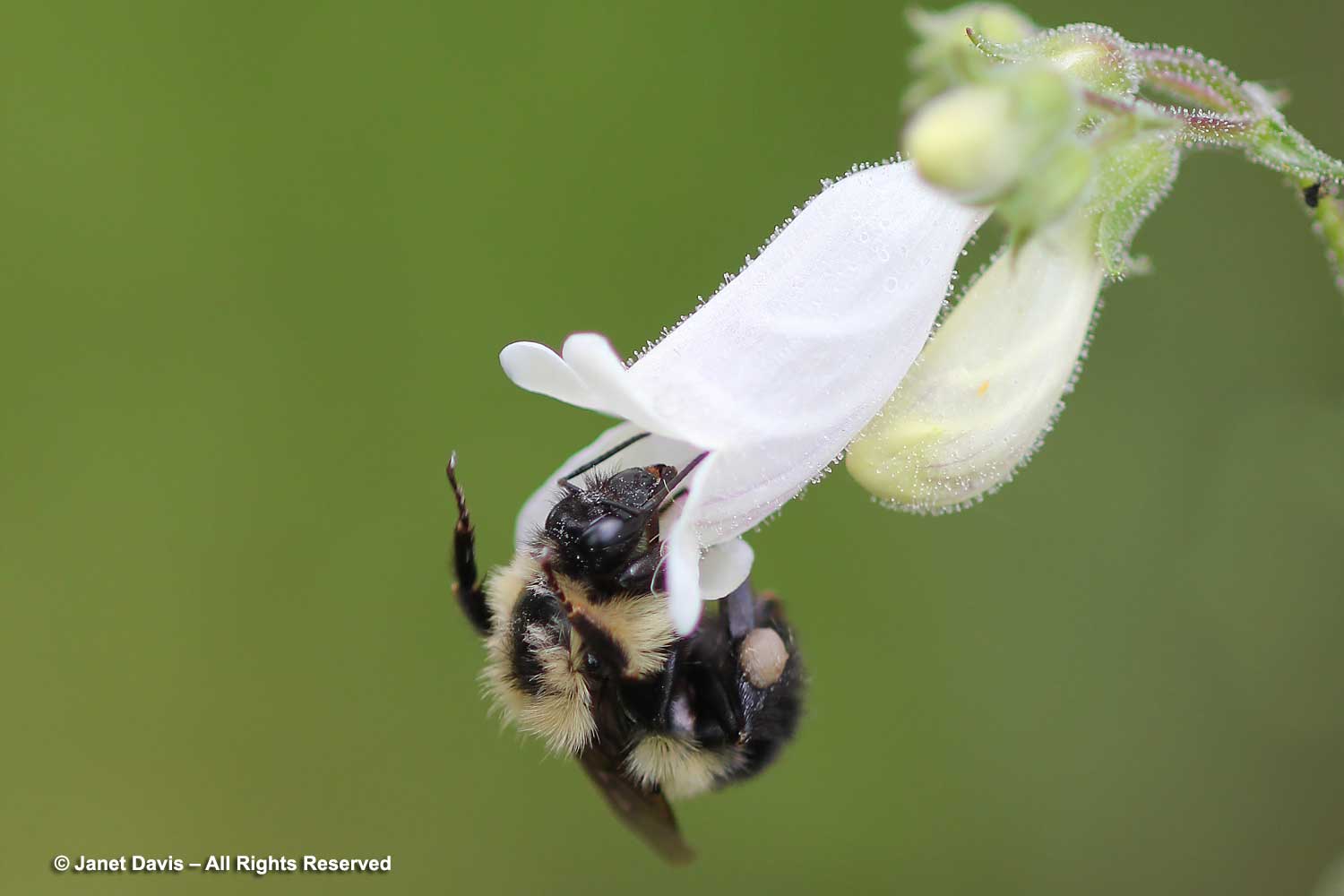
Here is a little video of foxglove penstemon and its flying fans at Lake Muskoka.
Lanceleaf coreopsis (Coreopsis lanceolata) is another carefree native that seeds itself around our property, enjoying the same conditions as foxglove penstemon. Until researching its native range for this blog, I had no idea another common name is “sand coreopsis”. It is also an “acidophile”. That explains why it is so happy in almost pure, acidic sand at the top of our Precambrian ridge where very few plants thrive, except perhaps Verbena stricta, hoary vervain.
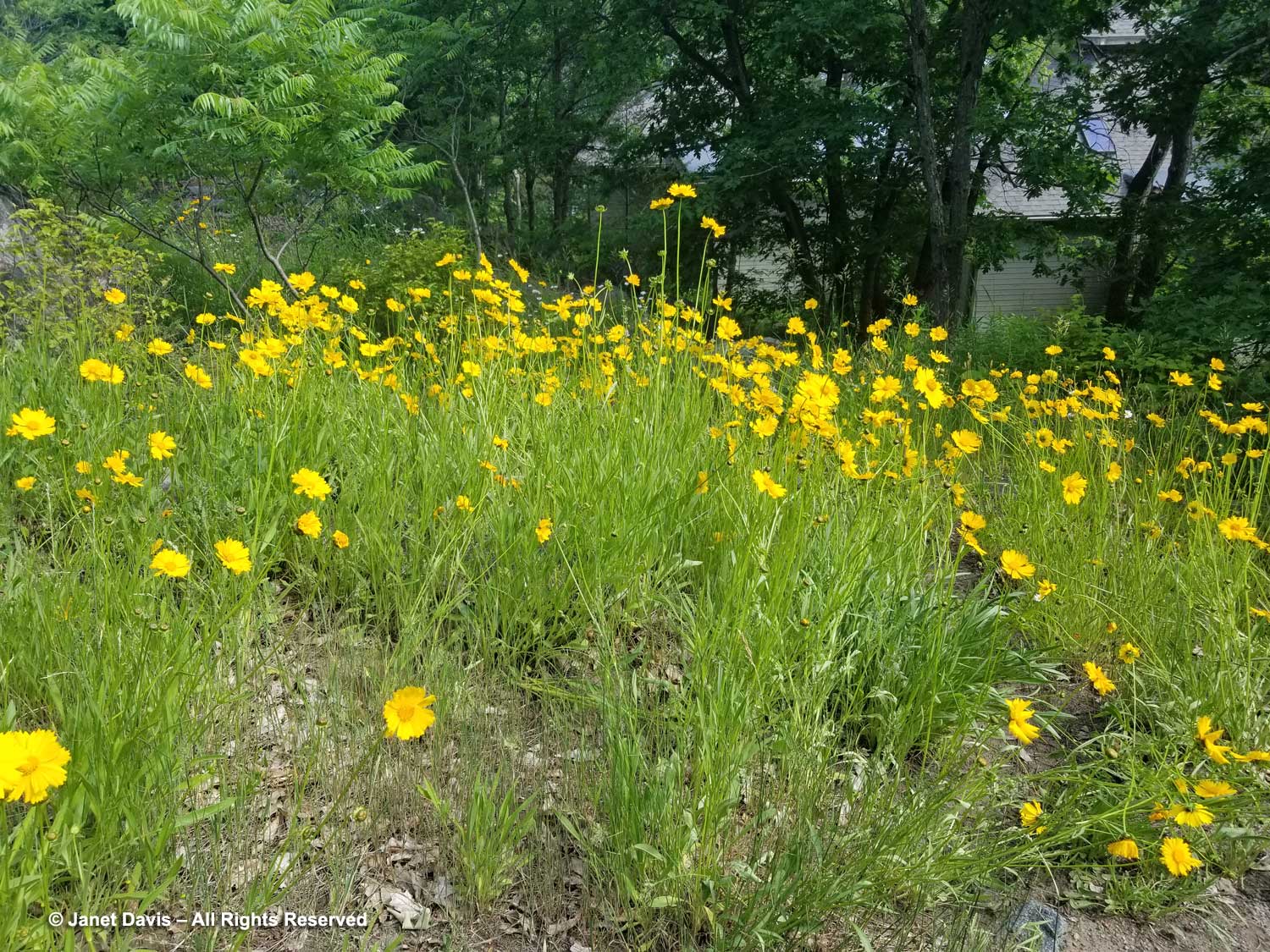
However, it is not as long-lived as foxglove penstemon, below….
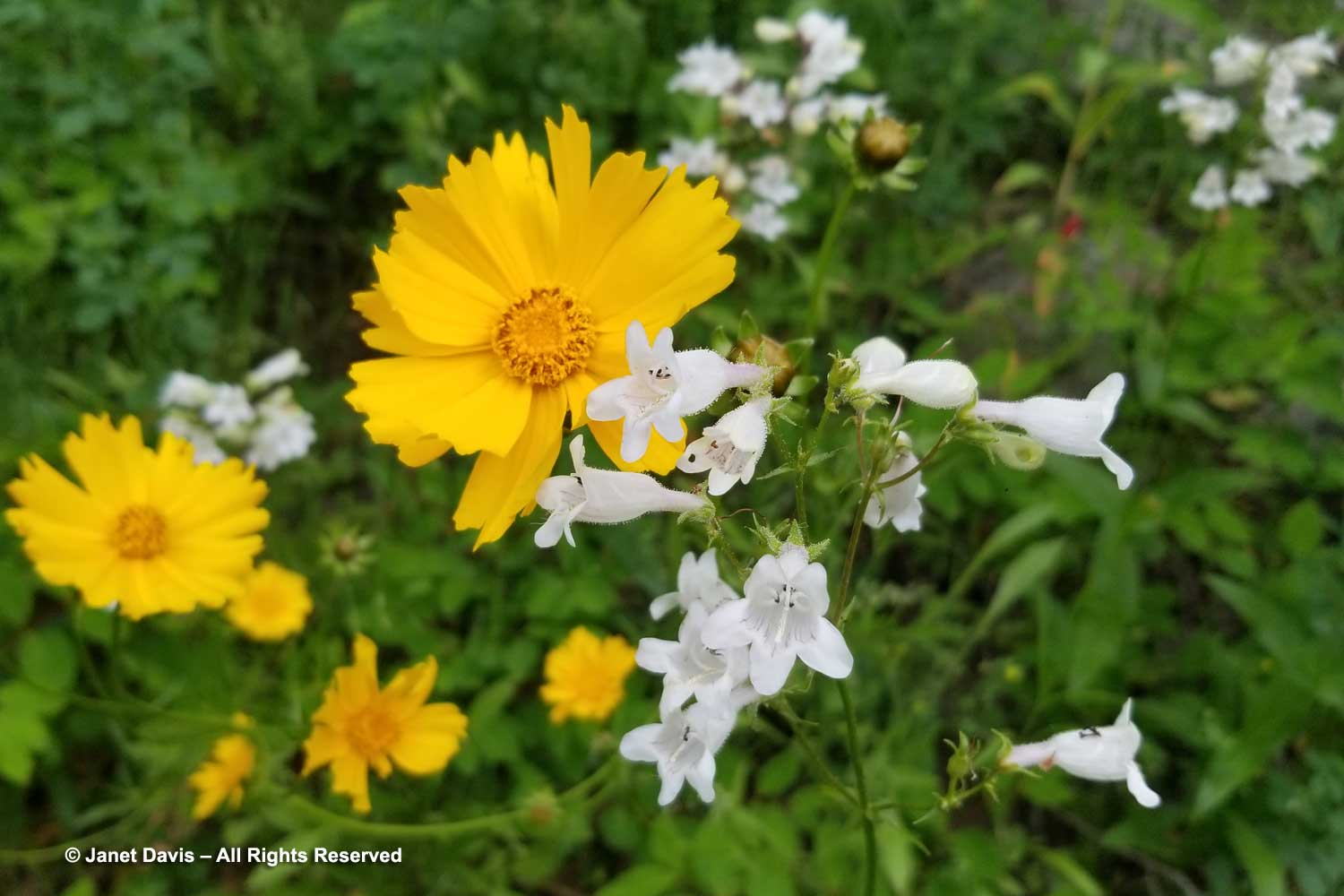
….and does not seem to appreciate extreme winter temperatures – unless it has adequate snow cover. It reaches 2-3 feet (60-90 cm) with willowy stems. The cheerful yellow flowers host native bees and butterflies….
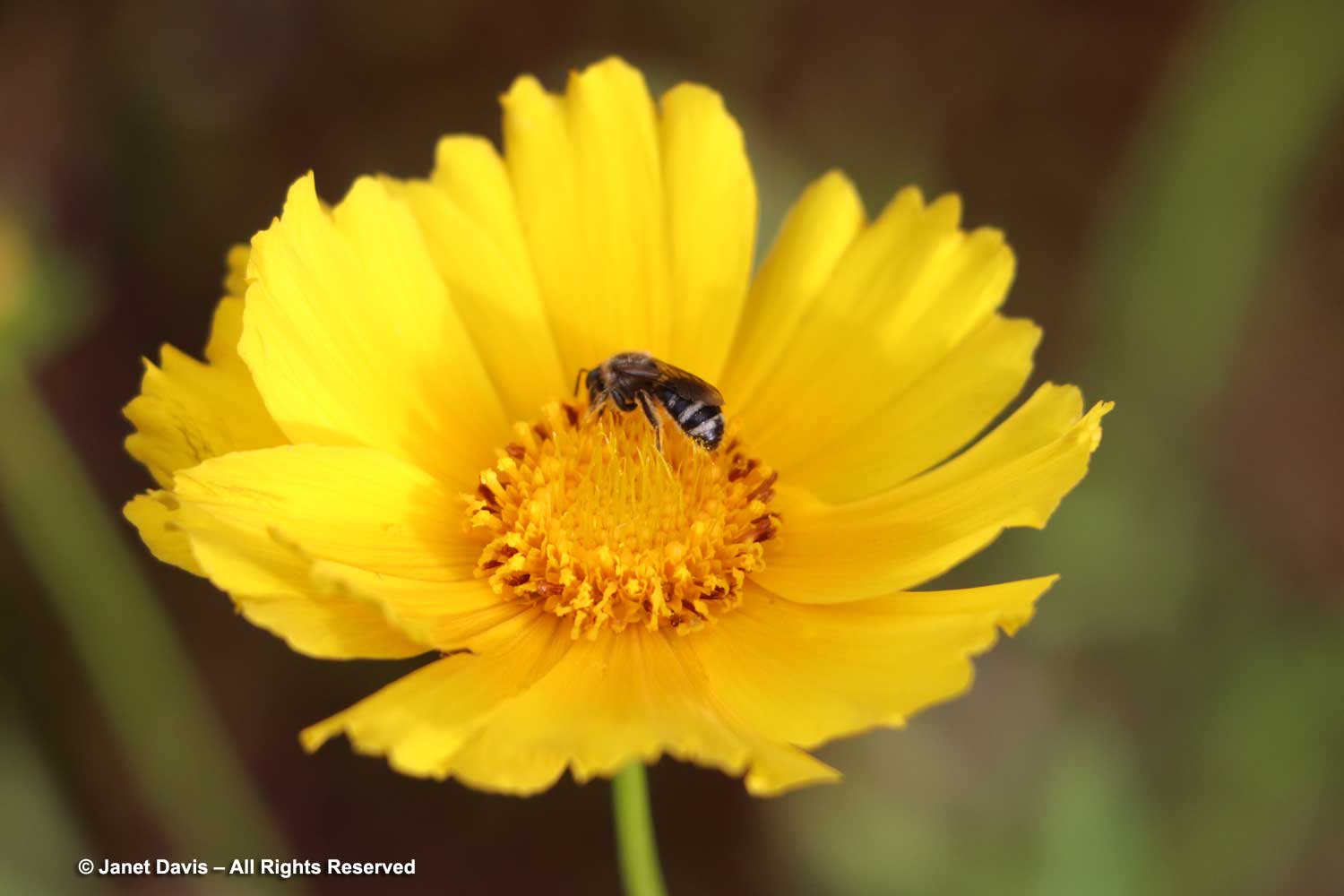
…. much to the occasional delight of crab spiders.
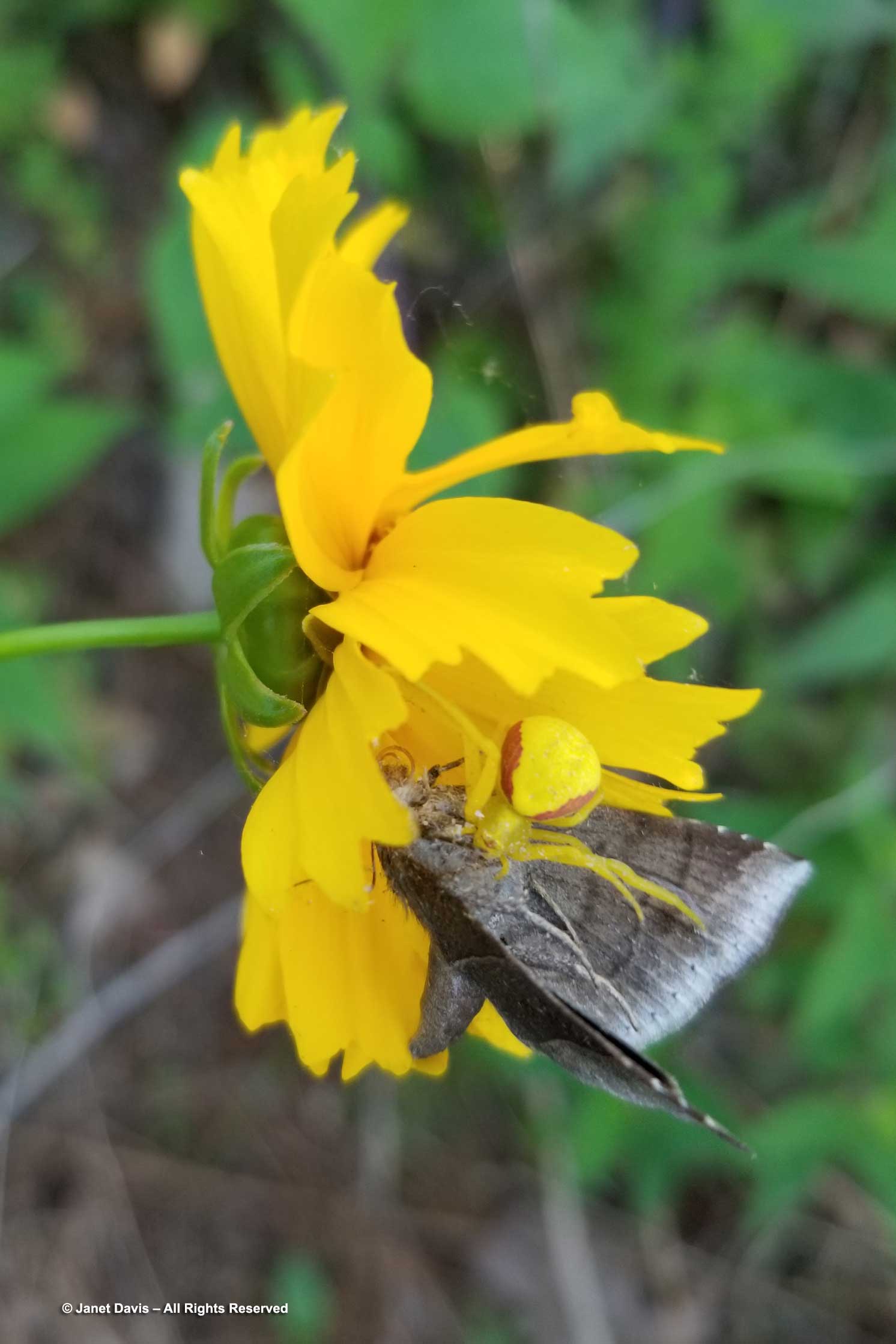
It is also an occasional (hilarious) snack for the local groundhog family, among many other tasty horticultural treats on that critter’s menu. By mid-summer, I enjoy watching goldfinches eat the plentiful seeds.
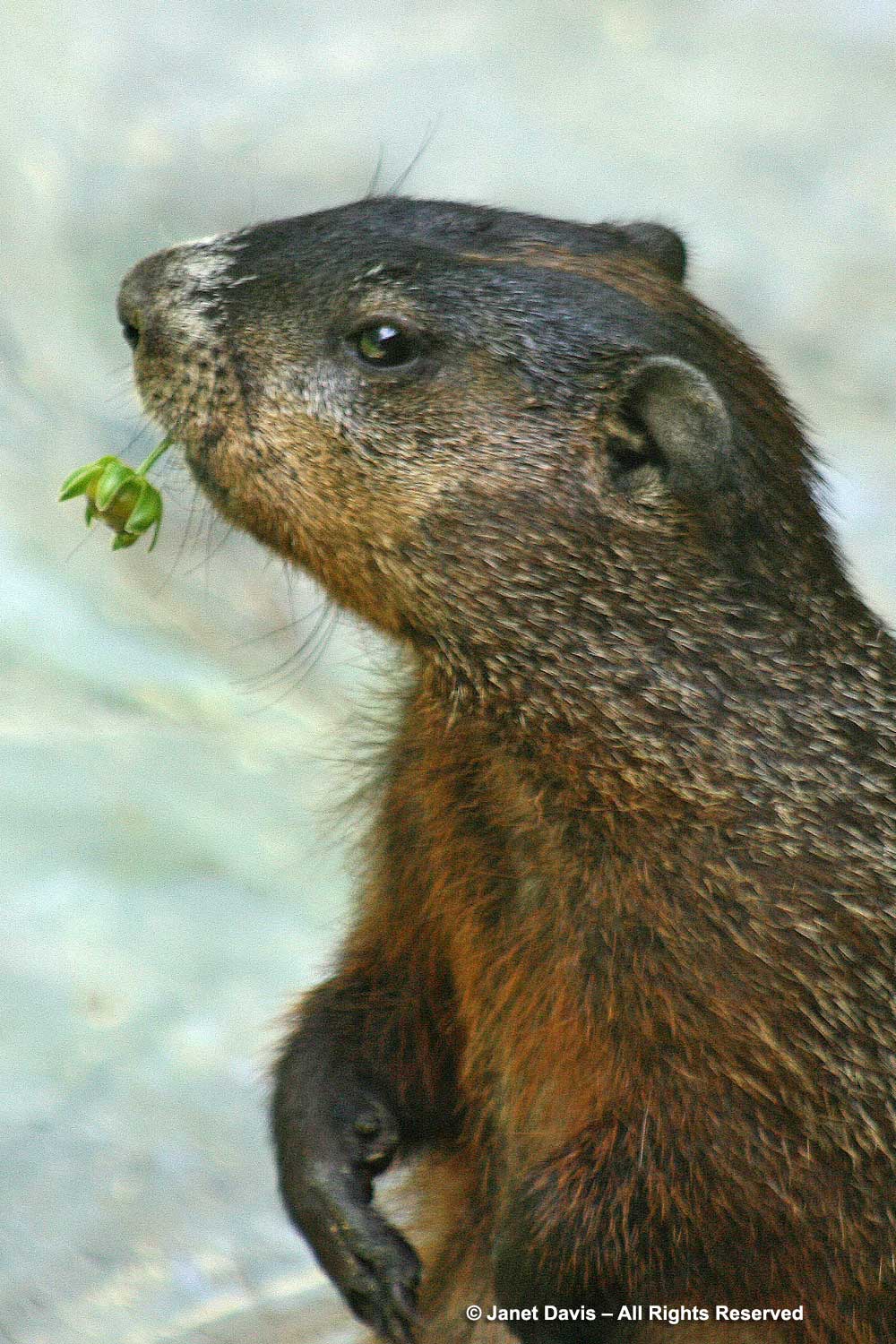
Given that much of the ‘new’ soil on our hillside was delivered by barge, having been scooped up by tractor shovel from old fields nearby, it is unsurprising that common European weeds beloved by early settlers to the region would appear almost immediately. Musk mallow (Malva moschata) is one of those, a perennial that grows 2-3 feet (60-90 cm) tall and wide and features silken-petalled, pink blossoms in early-mid summer.
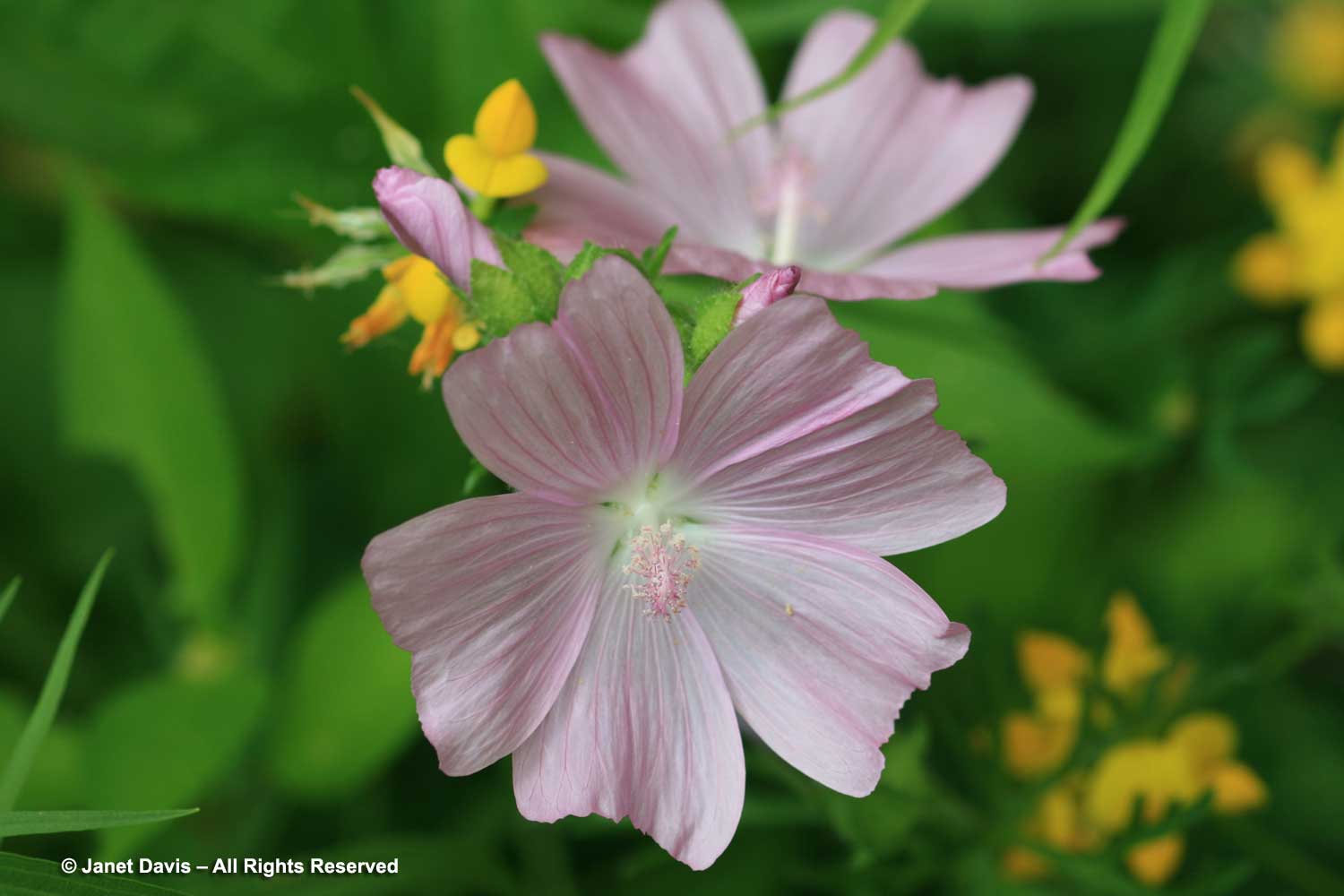
Musk mallow flowers aren’t visited by many insects, but are lovely additions to a small bouquet, along with the ubiquitous oxeye daisy (Leucanthemum vulgare) from my 10th fairy crown.
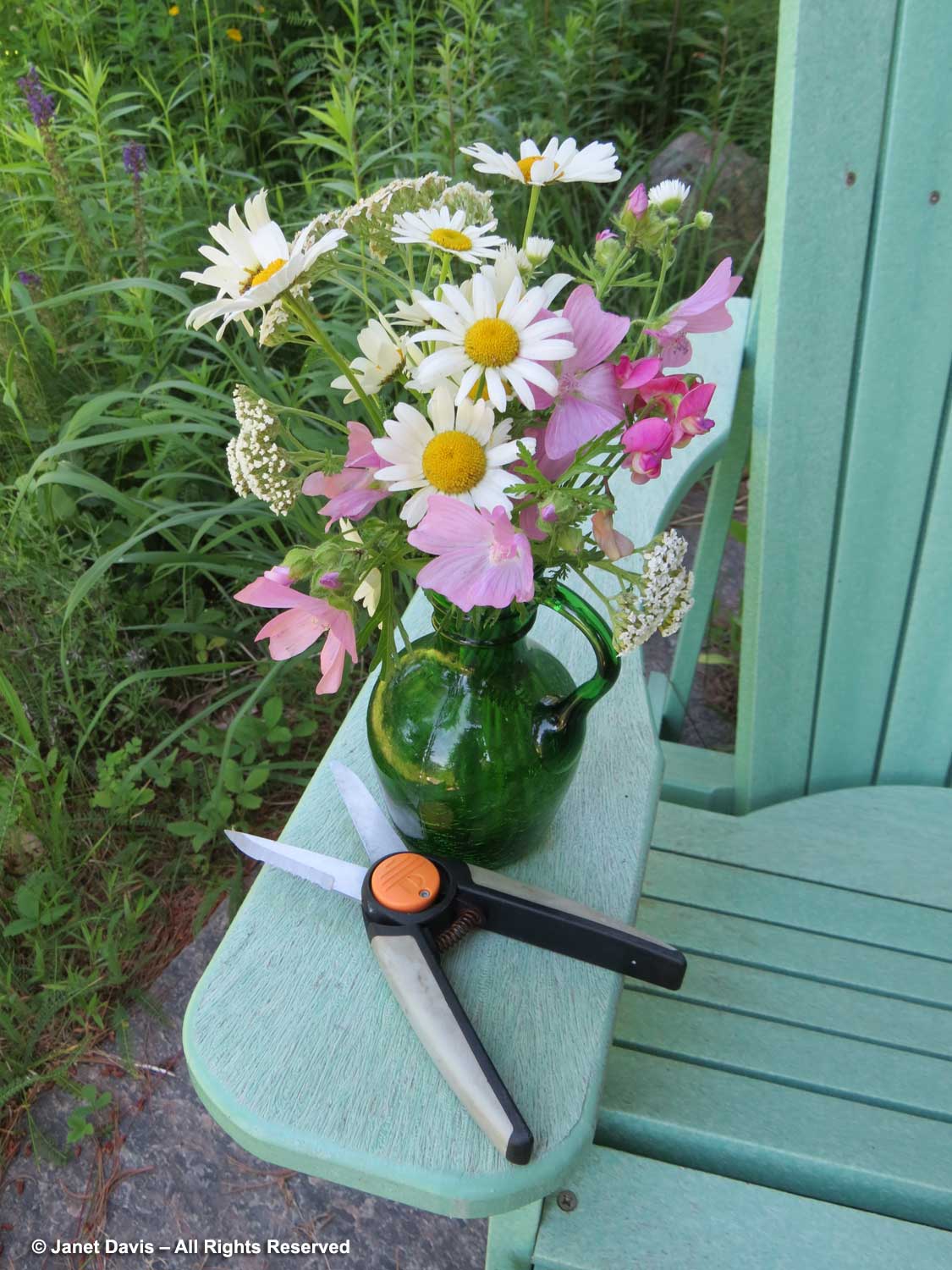
Birdsfoot trefoil (Lotus corniculatus), on the other hand, is popular with bees, like most legumes, but considered an invasive plant. Another European species brought to North America by early settlers as a forage crop, it likes the sandy, gravelly soil of roadsides and disturbed places.
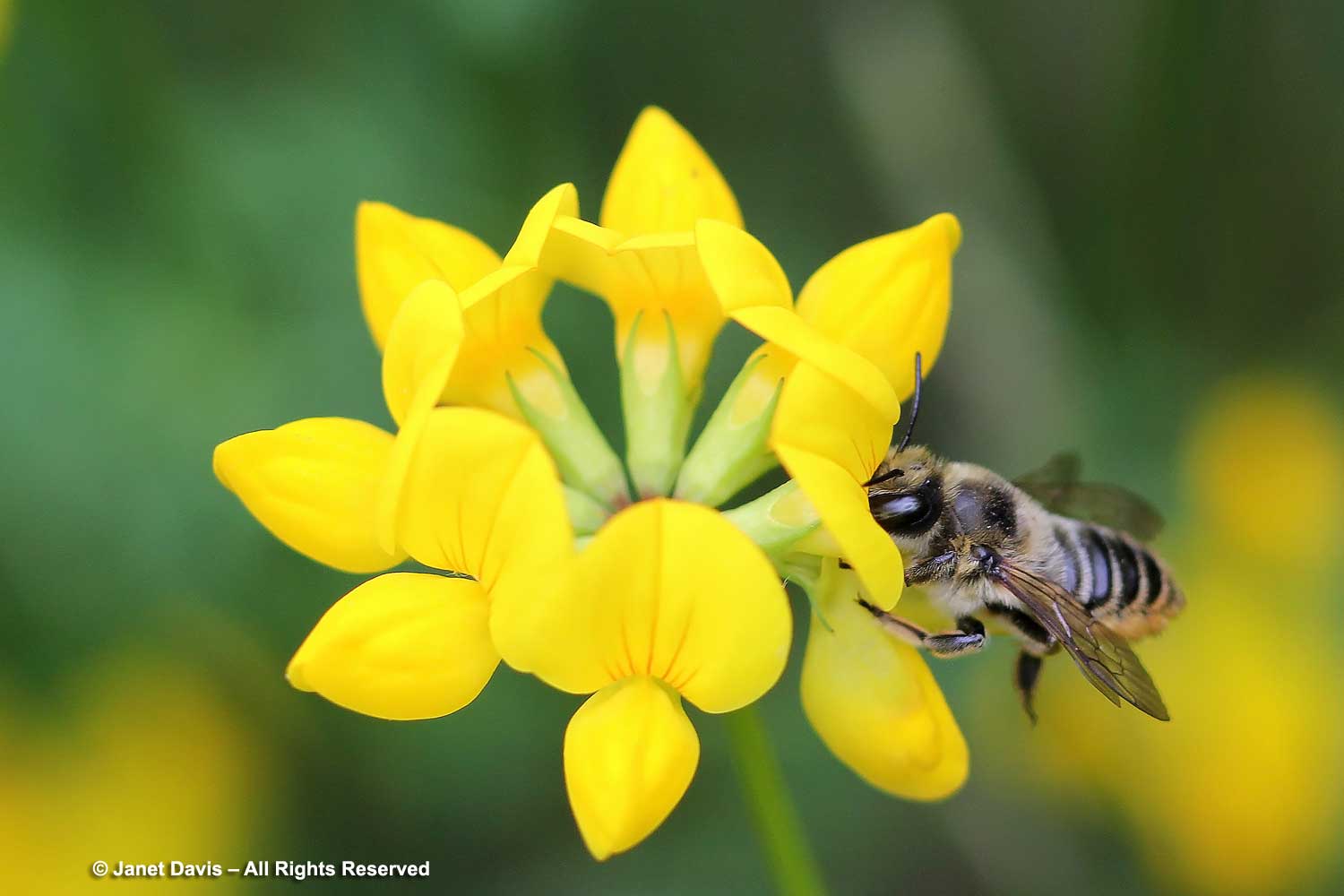
Because it cannot compete with my big prairie plants – and, more accurately, because weeding is not something I do at the cottage – it is welcome to co-exist with the other weeds, including tufted vetch (Vicia cracca) in the background below, which bumble bees and other bees adore.
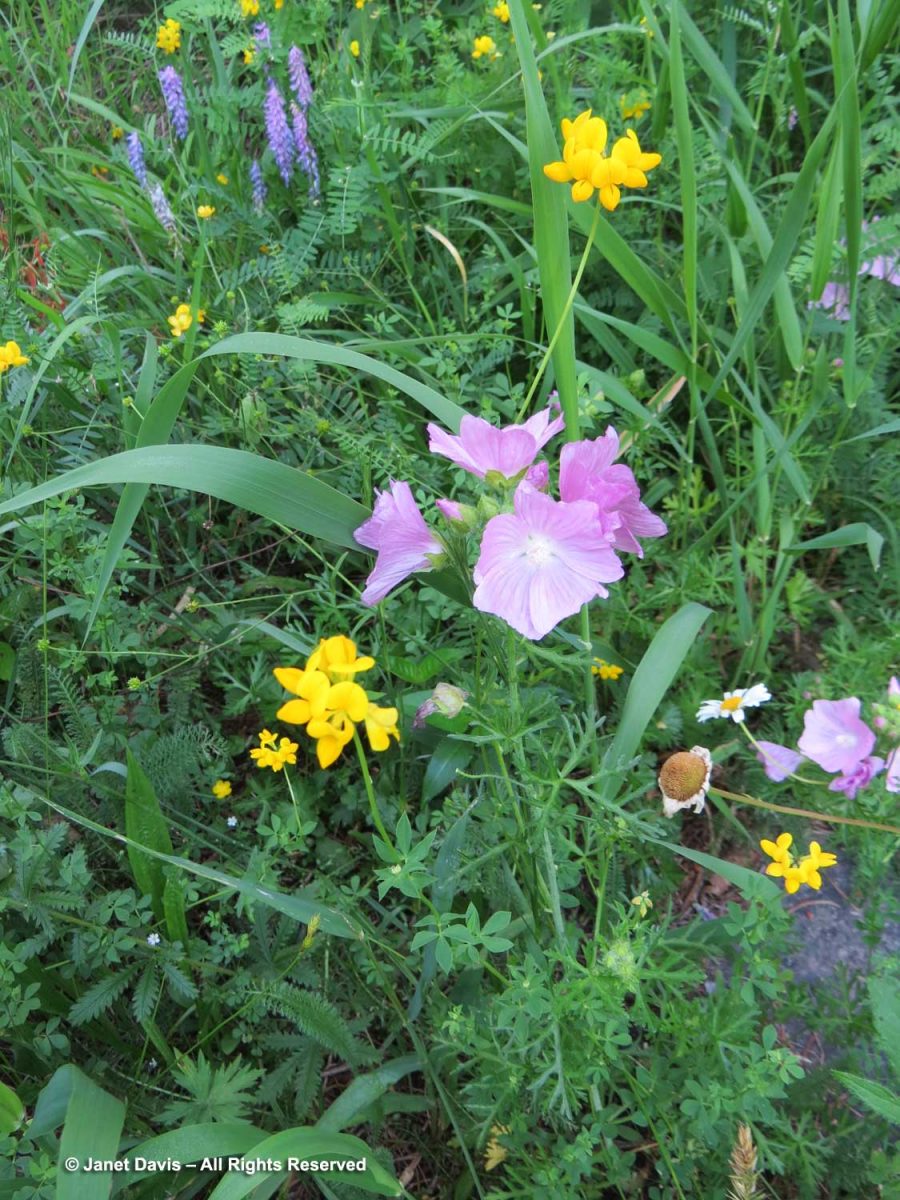
Straw foxglove or small yellow foxglove (Digitalis lutea) is a curious foundling in my driest meadow, where it has spread from a few plants more than a decade ago to a good-sized colony today. Another European native that made its way to the new world via early settlers, it attracts few pollinators but makes a lovely cut flower. It is my only weed that has received a Royal Horticultural Society Award of Garden Merit!
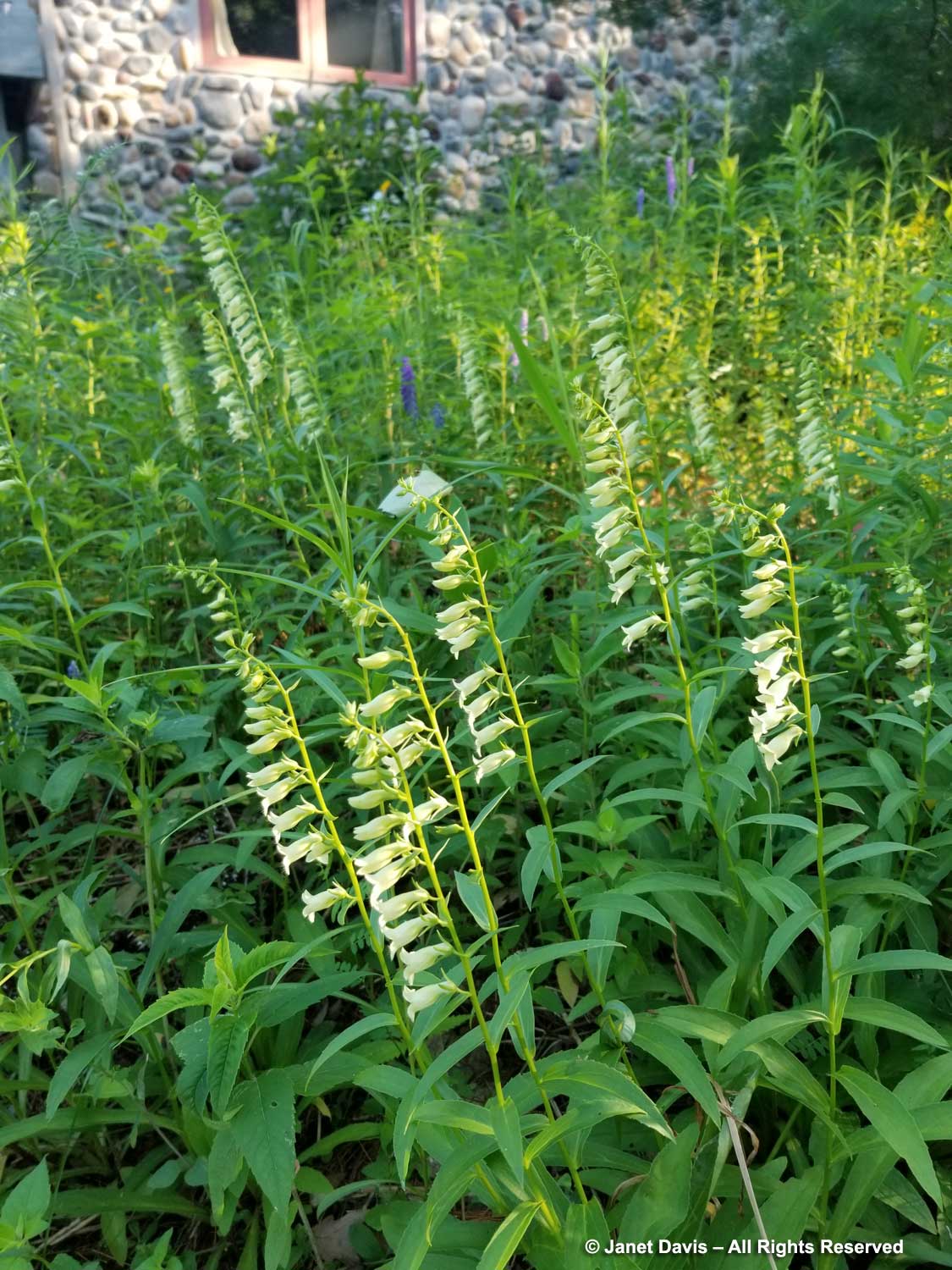
The pink pea flowers of everlasting pea (Lathyrus latifolius) are tucked into my June 25th Lake Muskoka fairy crown, too. By now you should not be surprised that this is another European stowaway in my meadows, a sprawling 6-foot (2 meter) perennial vine that clambers over other plants to arrive at its destination….
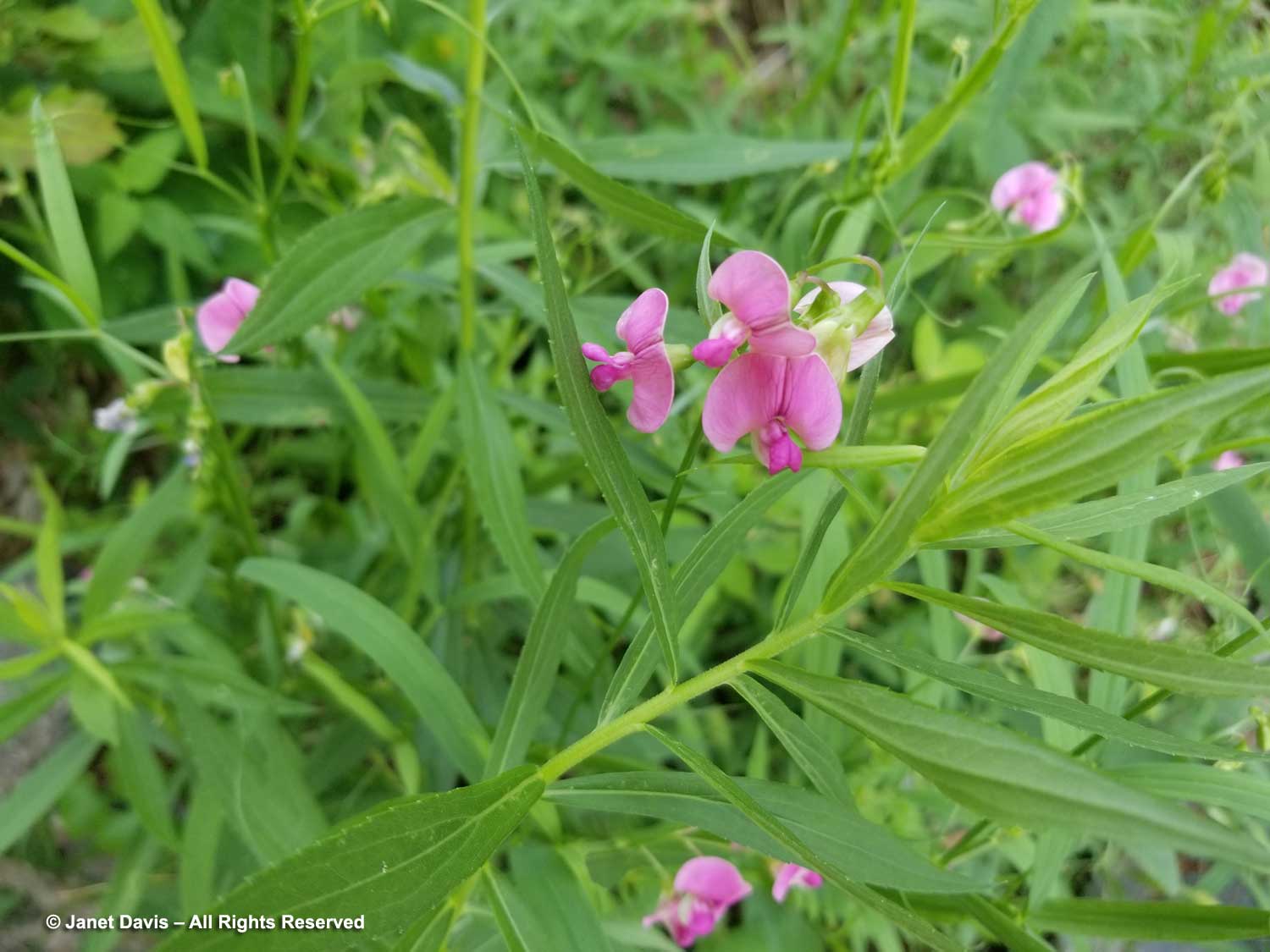
….. all the while producing nectar-rich blossoms that my bumble bees shamelessly adore. I could try to eradicate it, but it would be mission impossible.
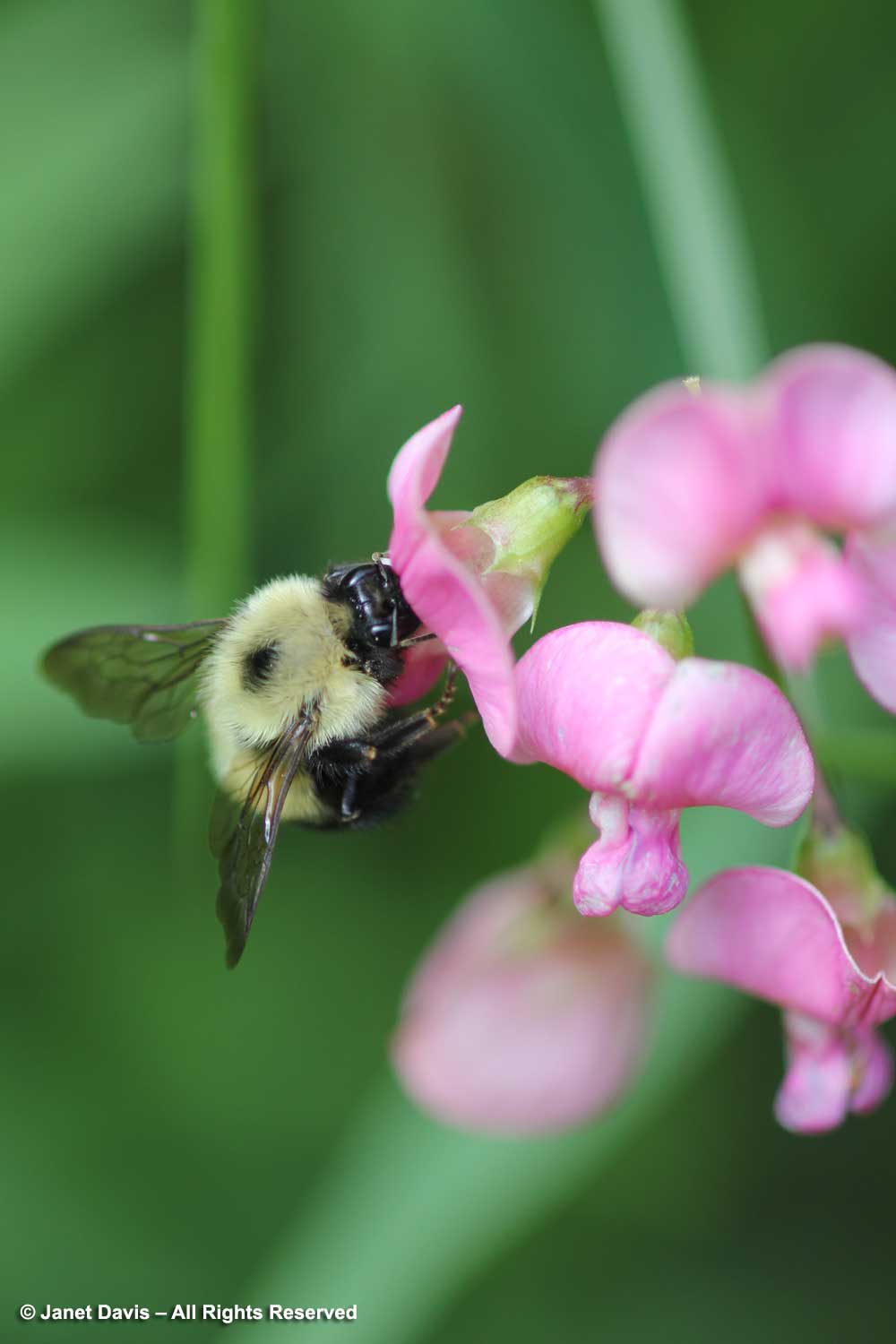
Because it blooms so early, I often miss the flowering of the native red elderberry shrubs (Sambucus pubens, formerly S. racemosa) that grow in moist, part shade behind our cottage. But it’s impossible to miss the bright-red, early summer fruit – provided hungry birds haven’t stripped it clean already. Unlike black elderberry (S. nigra), the bitter fruits of this large shrub, though ostensibly edible when cooked, are not tolerated well in quantity by humans. Leave them for the birds!
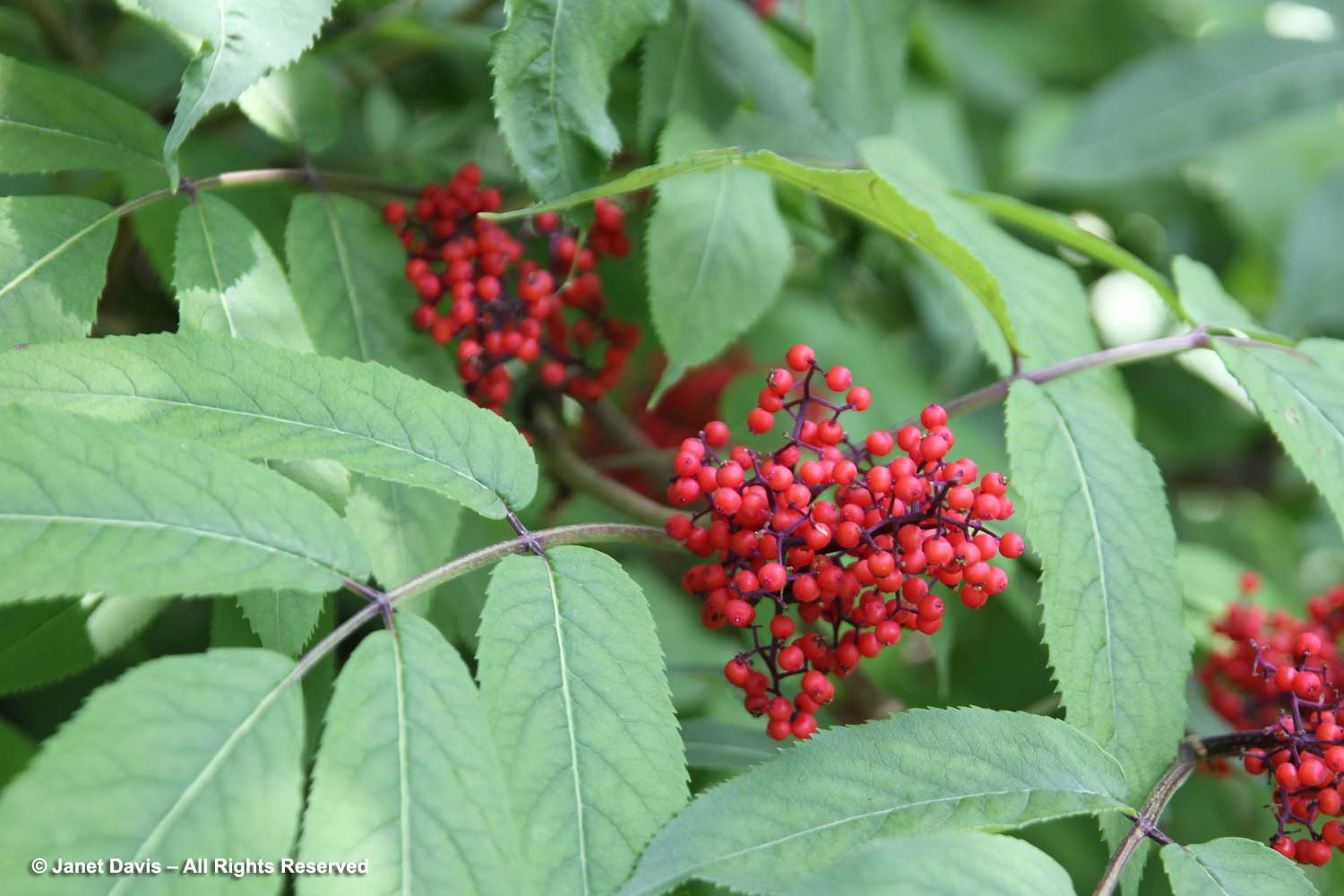
I have become increasingly enchanted with the airy, branching scapes and little white flowers of native daisy fleabane (Erigeron annuus). An annual (or occasionally biennial) pioneer species that spreads easily by seed (and thus appears on agricultural weed lists), it blooms for weeks on end, adding a jaunty bit of lightness to the edges of my path and meadows where it grows 3-4 feet (90-120 cm) tall. It attracts numerous small bees, wasps and syrphid flies.
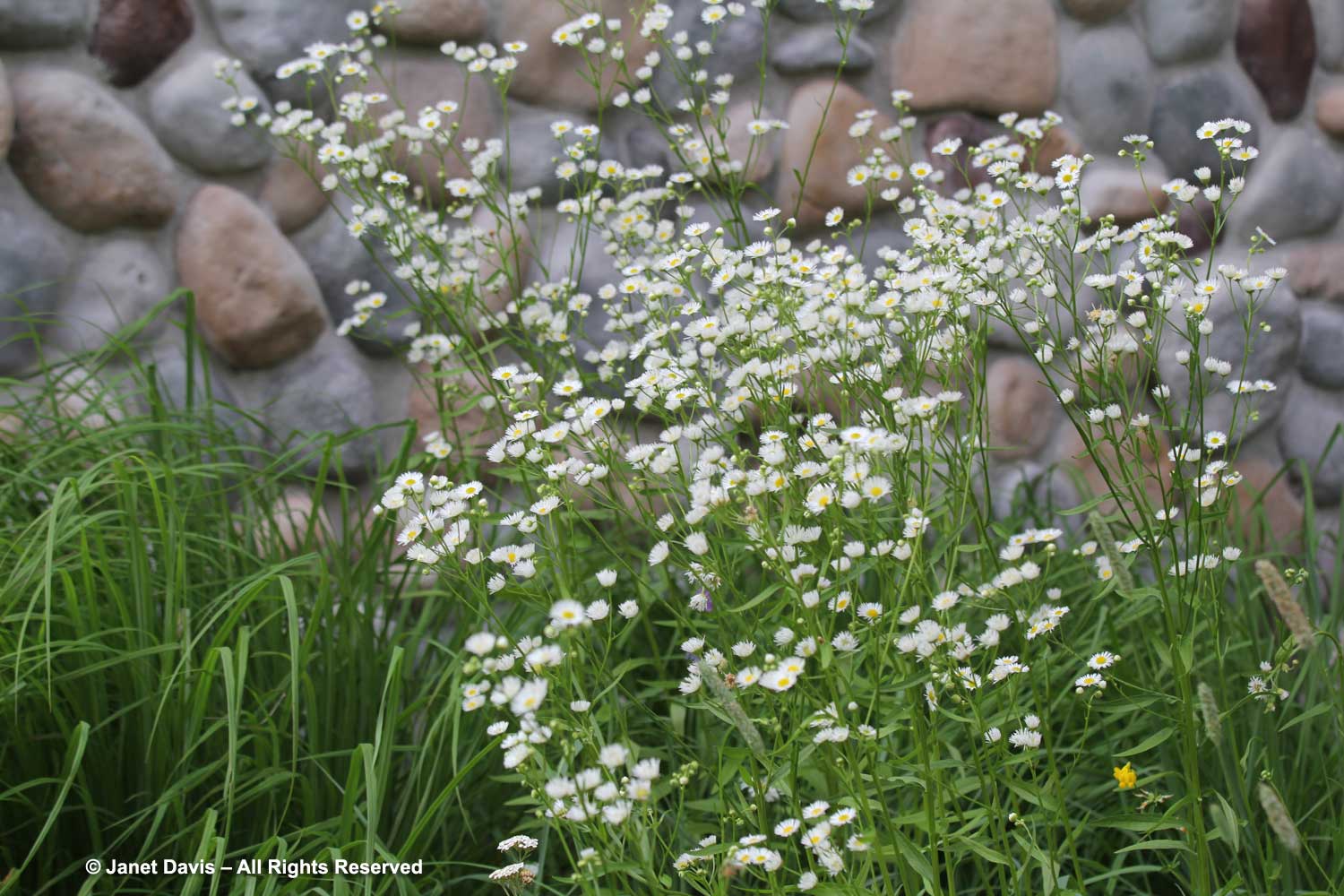
In a sense, this fairy crown represents my gardening philosophy: a little bit tame, a lot wild, and don’t sweat the weeds if the bees can use them.
*******
Here are the blogs on my fairy crowns to date:
#1 – Spring Awakening
#2 – Little Blossoms for Easter
#3 – The Perfume of Hyacinths
#4 – Spring Bulb Extravaganza
#5 – A Crabapple Requiem
#6 – Shady Lady
#7 – Columbines & Wild Strawberries on Lake Muskoka
#8 – Lilac, Dogwood & Alliums
#9 – Borrowed Scenery & an Azalea for Mom
#10 – June Blues on Lake Muskoka
#11 – Sage & Catmint for the Bees

